
Travelling Without a Passport
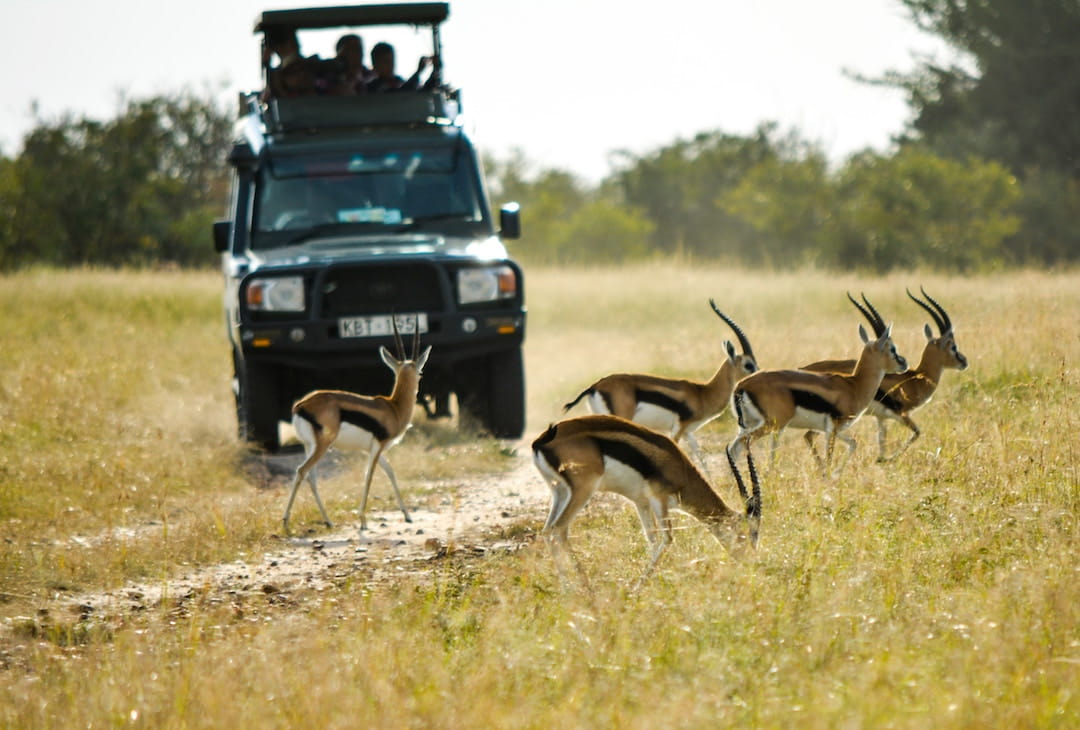

Essential First Time Safari Tips for Safaris in Kenya

A safari is one of those travel experiences that unites nearly every type of traveller – after all, who wouldn’t want to explore beautiful natural landscapes while catching glimpses of some incredible animals in the wild? When you think about all the opportunities for cultural experiences, wildlife sightings, and unforgettable adventure, it’s no wonder that safaris rank so highly on everyone’s must-do lists!
One of the best places to go on safari is, indisputably, Kenya. If you’re a traveller dead-set on seeing the best wildlife, embarking on the best experiences, and enjoying the best atmosphere, Kenya is almost definitely the best place for you to have the ultimate safari adventure! Today, we’re bringing you a few of our favourite tips and tricks for exploring Kenya on a safari .
Travel to: Kenya
Determine when you’ll travel
While Kenya is a year-round destination, the country’s weather patterns vary greatly month-to-month, which means that before you set off on safari, you’ll need to decide when, exactly, you want to visit. Kenya experiences a dry season along with two rainy seasons.
- The dry season lasts from mid-December until March. During this time, temperatures will soar, and there will be very little rain. This season is great for wildlife viewing, as animals congregate around available water, but it’s also the high season – expect to pay more for travel, and anticipate crowds.
- The “long rains” occur from March until May. This is Kenya’s down season, and travellers will find discounted rates and fewer crowds (though keep in mind that many lodges and amenities will be closed for the season).
- The “short rains” occur from October to December. This period of time usually isn’t as rainy as the long rains, and temperatures are beginning to rise.
See Also: Best time to visit Kenya
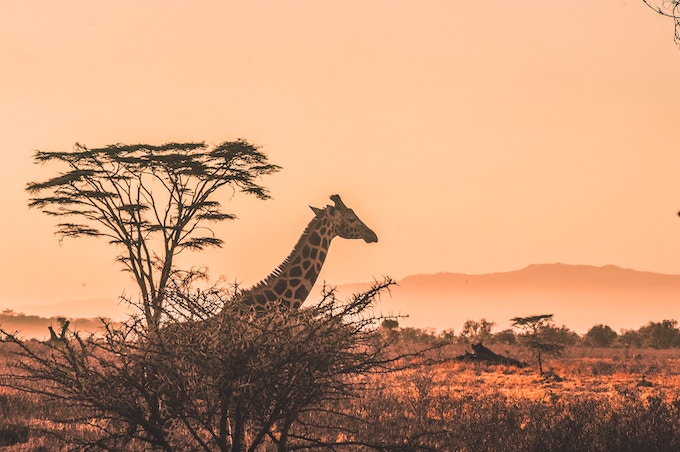
Decide what you want to see
Part of determining what time of year you want to visit Kenya involves deciding what you want to do once you get there! Everything from the types of animals you’ll see to the available activities and even the cost of your trip will be dependant on what you’re dreaming of doing once you arrive in Kenya.
If seeing the Big Five (five of the most impressive animals one can see on safari – elephants, buffalo, leopards, lions, and rhinos) is important to you, then visiting during the dry season is a good idea. When water is scarce, as it is during this time, more animals can be found in large groups.
Kenya is also one of the homes of the Great Migration – every year, from July to October, millions of animals migrate from Serengeti National Park in Tanzania to Masai Mara National Reserve in Kenya. If seeing this incredible natural phenomenon is at the top of your bucket list, you should carefully time your visit.
Are you a bird lover? You’re in luck – Kenya is home to hundreds of amazing species of birds, and the best time to see them is actually the wet season – not only will you be able to see countless species, you’ll also enjoy fewer crowds and less expensive travel.
See Also: The Best Safari Parks in Kenya
Research tour operators
When you travel anywhere, you want to make sure that you’re in good hands, right? It’s important to go on a safari with an experienced tour operator – not only will you feel safer while you’re exploring a new country, the knowledge of local guides means they know all the best tips and tricks to help you have the best safari experience possible. Group tours are a great way to get the most out of your safari – from the safety of airport transfers and pre-arranged accommodation to knowing where to find the best food to the joy of meeting like-minded travellers during your trip, travelling on a group tour, especially while you’re exploring Kenya, is always a great idea.

Prepare well in advance
What visas do you need to travel to Kenya? What vaccinations do you need before you leave? How are you getting from the airport to your accommodation? What’s the weather going to be like?
You should know the answer to all of these questions off the top of your head well before you leave for Kenya! The answers will vary from person to person and depending on where you’re travelling from, but it’s always a good idea to know your stuff well in advance. Another benefit of travelling with a tour group is you’ll have people responsible for making that planning as easy as possible – you’ll always have someone around to answer your questions and makes sure your trip goes off without a hitch.

Manage your expectations
Your safari in Kenya is going to be amazing because of the incredible nature, amazing people you’ll be travelling with, and the opportunity to see animals in the wild – not because of one specific accomplishment, like seeing every member of the Big Five. Every safari is different! Focus less on things outside of your control, like the weather, crowds, and specific animals, and instead on how amazing it is to step out of your everyday life and explore a new country. Trust us: you’ll enjoy your trip much more if you stay in the moment!
See Also: How to Choose the Right Safari for You
Although travelling on a safari in Kenya can seem like a massive undertaking, the process can be straightforward, easy, and even fun with a little planning and the right tour operator. Following our tips can go a long way towards making sure you have the best experience possible, but remember to always listen to the recommendations of your guides while you’re travelling – they’re the experts!
Are you dreaming of going on a safari?
See Also: Safari deals

Maggie Soares
Maggie is a life-long traveller with a special affinity for the United Kingdom. When she's not reading, writing, or dreaming about her next trip, you can find her talking at length about her dog to anyone who'll listen.
Related Articles
- North America
Your Guide to Easter Around the World
Easter is a time to celebrate new beginnings. The symbols and...
- Destinations
The Ultimate Seven-Day Itinerary in Egypt
The soft river breeze wafts through my hair as the sails...
- Tips & Tricks
Best Destinations for People with Disabilities
The world and its wonders should be available to one and...
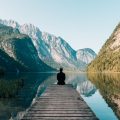
How to Take a Vacation While Grieving
Get unlimited access to the world's best travel stories. subscribe now., privacy overview.
Tips for a successful Kenyan safari
Nov 30, 2010 • 4 min read
In Swahili, safari means 'journey', a fitting translation for what is arguably one of the most evocative words to infiltrate the English language. But before you don a floppy hat and slip into your pocket-lined field vest, consider the following author-tested tips for planning the perfect Kenyan safari.
Where & when to go
However clichéd it may be, the image of khaki-clad tourists peering out at the Masai Mara from open-top vehicles is the single key selling point for Kenya 's tourist industry. When the annual wildebeest and zebra migration fills up the park with upwards of one million hulking herbivores, a good number of which are silently stalked by hungry felines, the wildlife watching is truly unparalleled.
However, clued-up visitors face an infinite choice of alternative settings and activities. The various Rift Valley lakes offer an aquatic complement to the savannah, while Mt Kenya is home to alpine highlands and glaciated ridges. Samburu National Reserve showcases arid specialists such as the Beisa oryx and Somali ostrich, while Malinidi Marine National Park harbours sea turtles and whale sharks.
Possibly the single most important influence on the behaviour of wildlife (and therefore your chances of seeing it) is rain. The main tourist season runs during the hot, dry months of December and January, and the cool, dry months from June to August, although Kenya can really be visited at any time of year. When the long rains fall from March to May things are much quieter, there are fewer tourists and accommodation prices come down, but note that some places close completely.
How & what to book
The majority of midrange and upmarket travellers prefer to get all the hard work done before arriving in Kenya by booking either through travel agents or directly with safari companies. This practice also ensures that you'll be able to secure a spot at the more famous lodges, especially during peak seasons when places start filling up months in advance. However, if you're going for the budget route, it is often much cheaper to arrange everything on the ground after you arrive.
Most safari operator price quotes include park entrance fees, full room and board, transport costs from the starting base to the various parks, and the costs of fuel plus a guide for wildlife drives. Drinks (whether alcoholic or not) are generally excluded. Price quotes usually assume double occupancy, with supplements for singles ranging from 20% to 50% of the double-occupancy rate.
Most midrange safaris use lodges, where you’ll have a private room and eat in a buffet-style cafeteria. A disadvantage is that they may have somewhat of a packaged-tour or production line feel. Private lodges, luxury tented camps and even private fly-in camps are used in top-end safaris, all with the aim of providing highly personalized experiences without foregoing creature comforts. Most budget safaris are camping trips that keep to a no-frills setup with basic meals and a minimum number of staff.
The safari experience
Game drives are the backbone of most safaris, with the idea being to spend as many hours as possible in the bush searching for animals. A game drive can be done at any time of day, but early morning, mid-morning and late afternoon, with a break early on for breakfast, and another in the middle of the day for lunch, is the usual plan. Night drives are also an excellent way to view nocturnal animals, although they're not permitted everywhere.
A few key accessories can greatly improve the quality of your safari experience. Field guides depict the flora and fauna of a specific area alongside photos, identification pointers and distribution maps. If you're into photography, invest in a high-quality digital SLR with a 100-400mm zoom lens and a small, collapsible tripod. Finally, a quality pair of binoculars is probably the most important piece of equipment on safari – even a cheap working pair is better than none at all!
Animals are free to roam and may not be where you want them to be, but the better informed you are, the more likely you are to see what you are after. Prime your senses, keep quiet and look for clues. Watch out for silhouettes, moving vegetation and shapes that don’t fit into the landscape. Use your peripheral vision, and watch where other creatures are looking. Listen for alarm calls, snorting breath, splashing water and changes in the activity of other creatures. Finally, relax, keep quiet and give heed to your own primal instincts.
Get prepared to take great picture with Lonely Planet's article on how to photograph wildlife .
Explore related stories
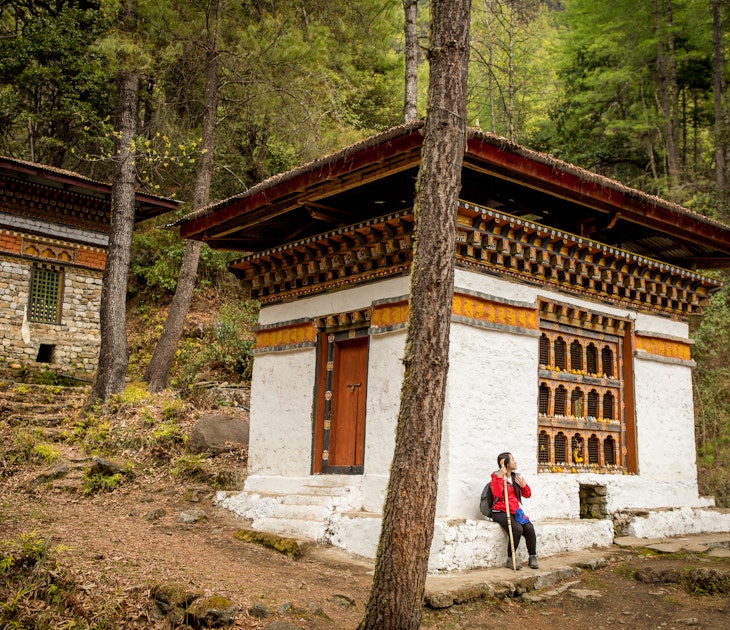
Wildlife & Nature
Apr 19, 2023 • 6 min read
Sustainable travel is all about making a positive impact on the world as you travel. Here are 10 ecotourism trips to bookmark.
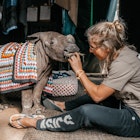
Aug 23, 2022 • 10 min read

Mar 3, 2022 • 4 min read
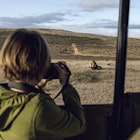
Feb 2, 2021 • 4 min read
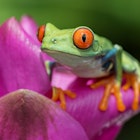
Sep 30, 2020 • 6 min read

Jun 16, 2020 • 7 min read
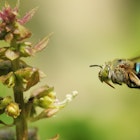
May 11, 2020 • 7 min read
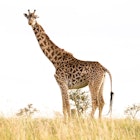
Oct 19, 2018 • 5 min read
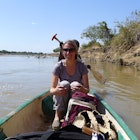
May 2, 2018 • 7 min read
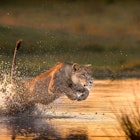
May 15, 2017 • 3 min read
Protect Your Trip »
A first-timer's guide to planning a safari in kenya.
Experts share practical tips for preparing for a successful safari.
A First-Timer's Guide to Planning a Safari in Kenya

Getty Images
Before you begin your once-in-a-lifetime African adventure, make sure you talk to your physician about recommended travel vaccines and pack strategically with plenty of layers.
You've been dreaming about going on safari in Kenya ever since the credits rolled in "Out of Africa," and now you're ready to embark on the trip of your dreams . To make sure you get the most out of the country's spectacular wildlife and jaw-dropping landscapes, here is the information you'll need, so that the only surprises you'll encounter are ones that you'll love.
An Average Day on Safari
While every accommodation is unique, most camps follow a similar schedule. Led by a wildlife guide, you'll go on at least two game drives per day with other guests for three to four hours per ride. Along the way, you'll stop at picturesque locations to stretch your legs, grab a snack and revel in incredible scenery. In the middle of the day, when predators and other species are hiding in the shade, you'll be in camp relaxing. Expect to take your meals at camp, though dining in the wild is also common. At night, you'll cozy up to a warm fire and mingle with the other guests to share your day's adventures before letting the sounds of the bush serenade you to sleep.

Susan Portnoy
(Susan Portnoy)
Activities and Extra Costs
Game drives are the crux of most safaris, but there are plenty of other activities for you to enjoy, from guided walks and visits to tribal villages to hot air balloon rides over the Masai Mara or camel safaris in the Northern Frontier. Some activities are included in your daily rate, but "it's always a good idea to know ahead of time what's included in your stay, as many options may come with an additional price tag," says Linda Friedman, CEO of Custom Safaris. Also, keep in mind that you may be charged for park entry fees, laundry, premium liquors and other amenities.
Wildlife-Viewing Opportunities
"Kenya is known not only for its massive concentrations of game but also for its vast open plains. You can spot and track wildlife from a fair distance and there is almost always something to see and some sort of interaction between species," says Andrew Beck, a professional wildlife photographer and a co-founder of Wild Eye, a photographic safari company. There are also certain areas that contain larger concentrations of specific species. If you love elephants, consider Amboseli where herds can reach 100 members or more. And from August to October, the Masai Mara plays host to millions of wildebeest during the Migration, while species like the Grevy Zebra, Somali Ostrich, reticulated giraffe and the gerenuk can only be found in the north.
Guides know all about animal behavior and the area in which your camp is located, as well as the location of recent sightings, dens and kills. Still, they can't make animals appear on cue, so stay open to what the day brings. In the bush, the world can change on a dime; with a little patience, you'll have the time of your life.

Family
Taking your child on safari can be one of the best ways to instill a lifelong love of wildlife and respect for the environment, and in the last few years, more companies are enticing families with larger tents or villas and special programs designed with families in mind. As Friedman points out, it's important to ask up front if children are allowed or if there is a minimum age requirement. If your child is very young, you may be required to reserve a private vehicle.
Photography
A DSLR camera and longer lenses are best for wildlife photography , but if that's not your objective, Beck suggests getting a point-and-shoot with the maximum optical zoom. "Don't even bother looking at the digital zoom feature as this is essentially a crop of the image," he says. It's also a smart idea to bring plenty of memory cards. There is nothing worse than having to delete images from your camera on the fly to make room for your next shot.
When it comes to the bush, safety at any lodging is top priority. Upon arrival, you'll be given all the dos and don'ts and it's important to follow directions. While safaris are safe, Friedman cautions, "These are wild animals, not kittens."

Preparing for Your Safari
Paperwork You'll need a passport that is valid for at least six months prior to your arrival. Your passport must contain a minimum of two blank pages for stamps. You'll also need a $50 visa . You can apply for a visa online at Evisa.go.ke or you can wait until you arrive at the airport in Kenya.
Vaccinations
According to the Centers for Disease Control, there are no mandatory vaccinations for travel to Kenya though you may be required to get a yellow fever shot if your travels take you through endemic zones prior to your arrival. The agency also advocates being up to date on immunizations for Hepatitis A and B, typhoid, yellow fever, rabies and meningitis. Additionally, you may want to consider pills for malaria. Make sure to speak to your physician about your travel plans to determine what you need.
Pack enough light casual attire for a long weekend and take advantage of the same-day laundry service (weather permitting) that the majority of camps provide. It's chilly in the morning and evening, but hot in the afternoon, so dress in layers. A good sunscreen is also a must-have, in addition to a wide brim hat and a good pair of polarized sunglasses. And flip-flops are fine for the jeep, but also pack a pair of comfortable sneakers.
Small commuter planes are the main mode of transport into the bush and all the domestic carriers are sticklers about baggage restrictions. Bags must be soft, no longer than 26 inches and wheel-free, and the total luggage weight per person cannot exceed 15 kilograms (33 pounds), including your carry-on. If you go over the limit, your best-case scenario would be paying a fee, but in a worst-case scenario, you may have to buy a separate ticket for your baggage or wait until there is a plane with space available.
Money Matters
Kenya shillings is the local currency. You can pick up shillings at the airport upon arrival, but U.S. dollars are also widely accepted. Keep in mind, accommodations will accept major credit cards such as Visa or MasterCard (American Express is not as widely accepted) for amenities or gift shop purchases, but you should bring cash for gratuity as well as extras, such as cultural visits to local villages or souvenirs like handmade jewelry or other trinkets from local artisans.
Tips are not mandatory, but they are customary. Your guide should be at the top of your list, and according to Friedman, you should plan to pay $15-25 per person per day. If you have a large family, less per person is acceptable. If you want to distribute gratuity to all staff members, most camps have a staff box where guests can leave a gratuity of $5-10 per person per day. When in doubt, ask a manager for advice, Friedman says.
Tags: Travel , Kenya , Travel Tips
About En Route
Practical advice on the art of traveling smarter with tips, tricks and intel from En Route's panel of experts.
Contributors have experience in areas ranging from family travel, adventure travel, experiential travel and budget travel to hotels, cruises and travel rewards and include Amy Whitley , Claire Volkman , Holly Johnson , Marsha Dubrow , Lyn Mettler , Sery Kim , Kyle McCarthy , Erica Lamberg , Jess Moss , Sheryl Nance-Nash , Sherry Laskin , Katie Jackson , Erin Gifford , Roger Sands , Steve Larese , Gwen Pratesi , Erin Block , Dave Parfitt , Kacey Mya , Kimberly Wilson , Susan Portnoy , Donna Tabbert Long and Kitty Bean Yancey .
Edited by Liz Weiss .
If you make a purchase from our site, we may earn a commission. This does not affect the quality or independence of our editorial content.
You May Also Like
The best personal item bags.
Rachael Hood April 16, 2024

The 17 Best Costa Rica Tours
Lyn Mettler April 12, 2024

Hard vs. Soft Luggage
Rachael Hood April 12, 2024

The Best Kauai Boat Tours
Lyn Mettler April 11, 2024

The Top-Rated NYC Food Tours
Ann Henson April 11, 2024

The Best Things to Do in Maine
Mariya Greeley and Nicola Wood April 10, 2024

The Best Pearl Harbor Tours
John Rodwan and Amanda Norcross April 9, 2024

The Best Pigeon Forge Dinner Shows
Korrin Bishop April 9, 2024

Flight Canceled or Delayed? What to Do
Amanda Norcross April 8, 2024

Carry-on Luggage Sizes by Airline

Kenya From Within
Showcasing Kenya to the World
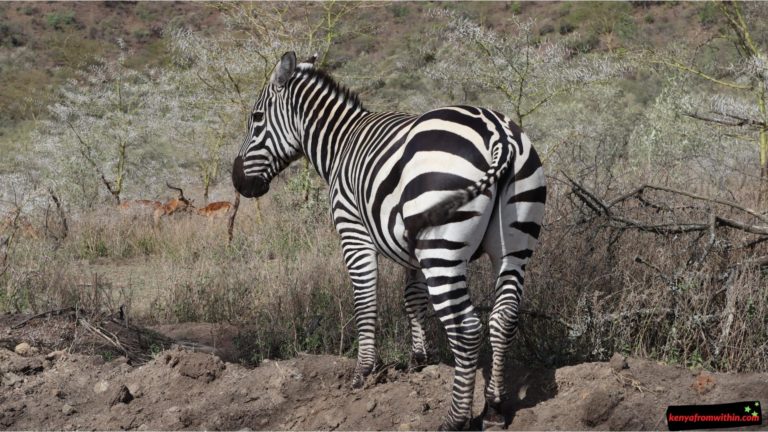
11 Things You Need to Know Before Taking a Kenya Safari
Kenya is known as one of the best destinations for safaris in Africa. The country boasts an awesome diversity of wildlife , beautiful landscapes, and a rich culture that attracts hundreds of thousands of travelers each year. However, before embarking on a Kenya safari, there are a few things that you want to understand to ensure that you have a good and unforgettable experience. In this article, we will spotlight some of the important things you need to recognize before taking a Kenya safari.
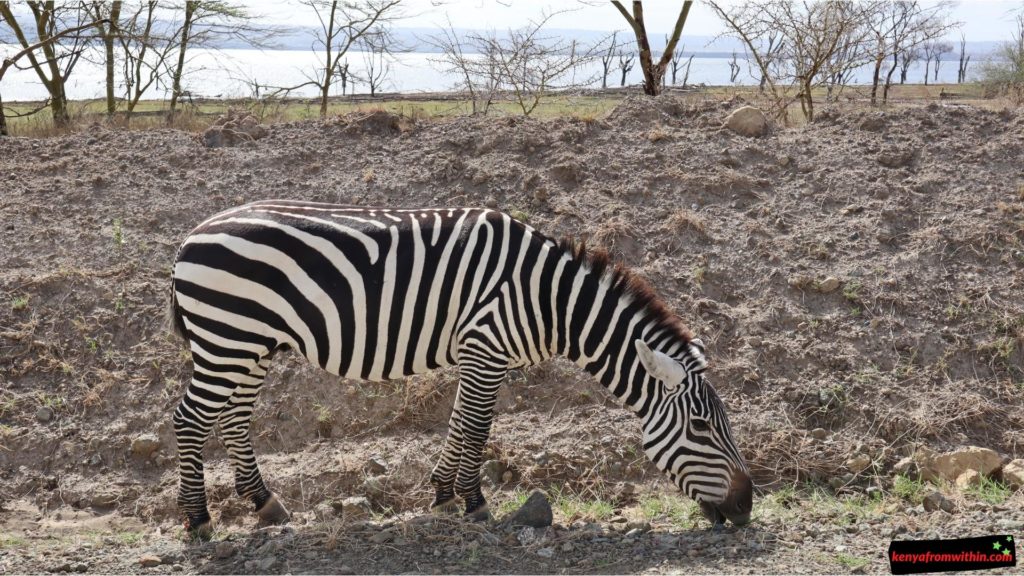
1. The Best Time to Visit Kenya
2. choosing the right kenya safari, 3. choosing the right kenya safari tour company, 4. understanding the culture and customs, 5. your health and safety, 6. wildlife viewing, 7. accommodation options, 8. transportation, 9. kenya safari activities, 10. kenya safari etiquette, 11. budgeting for your kenya safari.
Kenya is a year-round safari destination, but the best time to visit depends on what you want to see and experience. The peak season for safaris is from July to September when the wildebeest migration takes place in the Masai Mara. However, this is also the busiest time, and the parks can get crowded. If you want to avoid the crowds, you can visit during the low season, which is from April to June and November to December. During these months, the parks are less crowded, and you can get better rates on accommodation and tours.
Kenya offers a wide range of safari experiences, from luxury lodges to budget camping safaris. Before booking your safari, you need to decide what kind of experience you want. Luxury safaris offer comfortable accommodation, private vehicles, and personalized service, but they can be expensive. Budget camping safaris, on the other hand, are more affordable but require a higher level of adventure and endurance.
Choosing the right safari tour company is essential to ensuring a successful and enjoyable Kenya safari experience. You want to select a reputable company with experienced guides and well-maintained vehicles. Before booking your safari, do some research, read reviews, and ask for recommendations from friends or family who have been on a safari in Kenya.
Kenya has a diverse population with more than 40 different ethnic groups, each with their unique culture and customs. It’s essential to understand and respect the local culture when visiting Kenya. Learn a few words in Swahili, the national language, and be mindful of dress codes and etiquette when interacting with locals.
Kenya is a safe destination for tourists, but like any other country, it’s important to take precautions to ensure your safety. Before traveling to Kenya, make sure you have the necessary vaccinations and medications recommended by your doctor. Also, be sure to follow basic safety precautions, such as not walking alone at night and keeping an eye on your belongings.
One of the main reasons people come to Kenya is to see the beautiful wildlife. When on Kenya safari, it’s important to follow the rules and guidelines set by the park authorities. Don’t get too close to the animals, never feed them, and don’t disturb their natural behavior. Respect the wildlife and remember that you are a guest in their home.
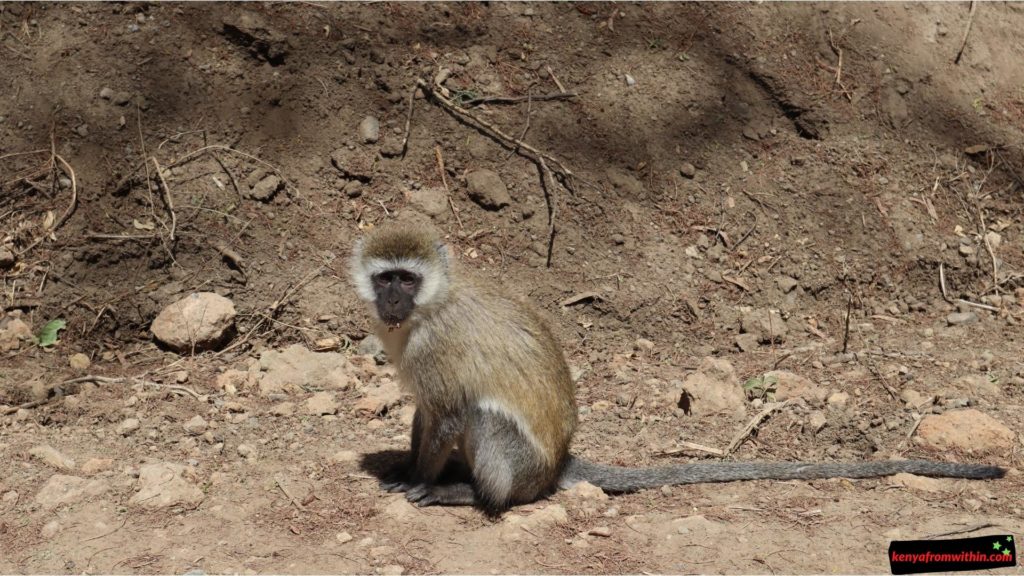
Kenya offers a variety of accommodation options ranging from luxury lodges, tented camps, and budget-friendly hotels. Before booking your safari, consider what kind of accommodation you prefer and what fits your budget. Luxury lodges offer more comfort and personalized service, but they can be expensive. Tented camps offer a more rustic experience, but they are still comfortable and provide an immersive experience in the wilderness.
When planning your Kenya safari, consider how you will get around. Many safari companies offer transportation in 4×4 vehicles, which are ideal for navigating the rough terrain of the parks. Some companies also offer air travel, which is a faster and more convenient way to get from one park to another.
There is more to a Kenyan safari than just game drives. Many parks offer a range of activities such as guided walks, hot air balloon rides, and cultural tours. Before booking your safari, consider what activities you would like to do and if they are available in the parks you plan to visit.
While on safari, it’s important to be mindful of your behavior and follow safari etiquette. This includes being quiet and respectful while viewing wildlife, following the instructions of your guide, and not littering or disturbing the natural environment. Being mindful of these small things can make a big difference in ensuring a sustainable and enjoyable safari experience for everyone.
A Kenyan safari can be an expensive experience, so it’s essential to budget accordingly. Consider the cost of accommodation, transportation, park fees, and activities when planning your safari. Be sure to also budget for extras such as tips for your guide and driver, souvenirs, and other incidentals.
In conclusion, a Kenya safari is an unforgettable experience that requires some planning and preparation to ensure a smooth and enjoyable trip. By considering the factors outlined above, you’ll be able to make the right choices and have a better understanding of the local culture and customs. With these tips in mind, you’ll be well on your way to having an unforgettable Kenyan safari adventure. Take a look at these images of Lake Nakuru National Park to get a preview of how a Kenya Safari looks like.
Related posts:

Leave a Comment Cancel reply
Save my name, email, and website in this browser for the next time I comment.
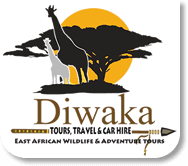
Top Destinations
- South Africa
- DRC Destinations
- Tours & Safari
- Destinations
A First-Timer’s Guide to Planning a Safari in Kenya

Diwaka Safaris
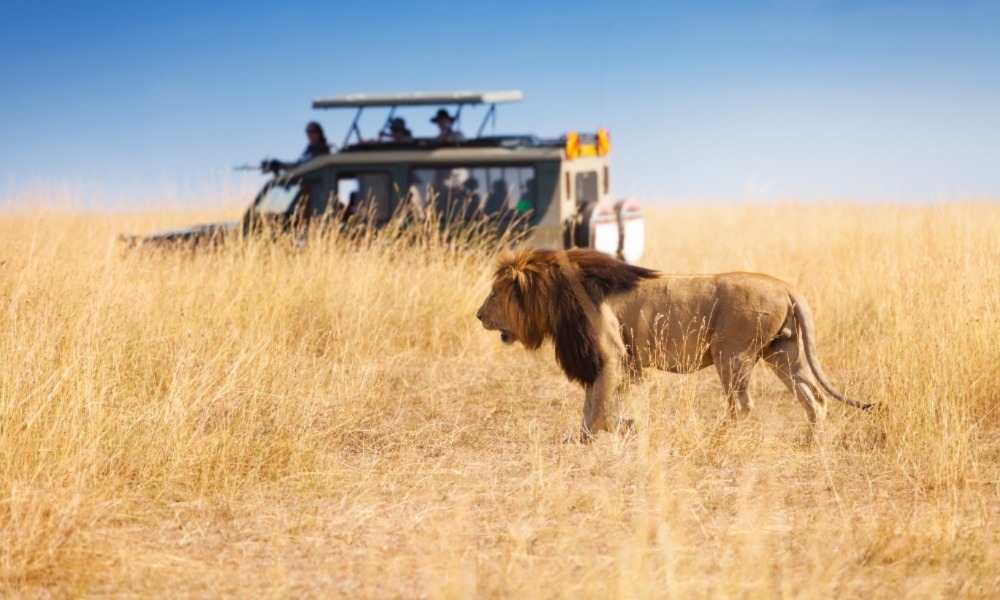
Are you ready for the adventure of a lifetime? Prepare to be whisked away into the untamed wilderness of Kenya as we unveil a first-timer’s guide to planning the ultimate safari experience. Get ready to witness nature in its rawest form, where lions roar, elephants roam, and giraffes gracefully stride across the savannah.
Kenya offers an unparalleled opportunity to witness the wonders of the natural world. From the iconic Maasai Mara, where the Great Migration unfolds, to the majestic elephants of Amboseli National Park and the untamed beauty of Tsavo, each destination promises unforgettable encounters with the animal kingdom. Join us as we explore the untamed wilderness and delve into the rich cultural heritage that makes Kenya Safari a true paradise.
You’ve been dreaming about going on Safari In Kenya and now you’re ready to embark on the trip of your dreams. To make sure you get the most out of the country’s spectacular wildlife and jaw-dropping landscapes, here is the information you’ll need, so that the only surprises you’ll encounter are ones that you’ll love.
What to Expect on Your First Time Kenya Safari
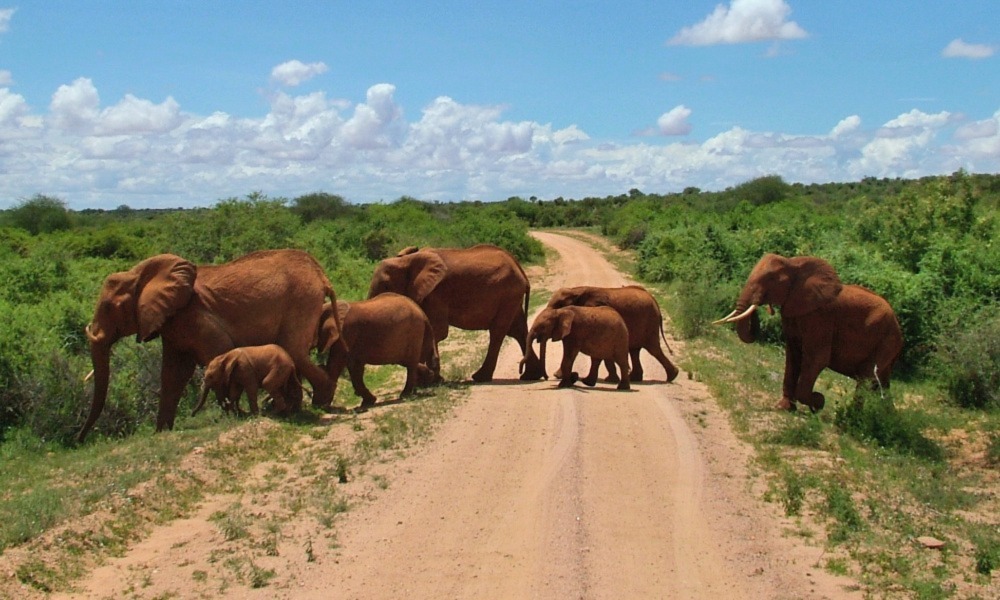
On your First Time, Kenya Safari get an extraordinary experience that will leave you with memories to treasure for a lifetime. Prepare to be immersed in the raw and untamed beauty of the African wilderness as you explore Kenya’s iconic national parks and reserves. Witness the awe-inspiring Great Migration, where millions of wildebeests and zebras brave treacherous river crossings in search of greener pastures.
Encounter majestic elephants up close in Amboseli National Park and marvel at the diverse wildlife that roams freely in Tsavo National Park. Immerse yourself in the rich cultural heritage of the Maasai people and indulge in luxurious accommodations amidst stunning landscapes. Get ready for thrilling game drives, breathtaking sunsets, and a deep connection with nature that will forever captivate your heart.
Kenya’s Must-Visit National Parks and Reserves for First-Time Travelers
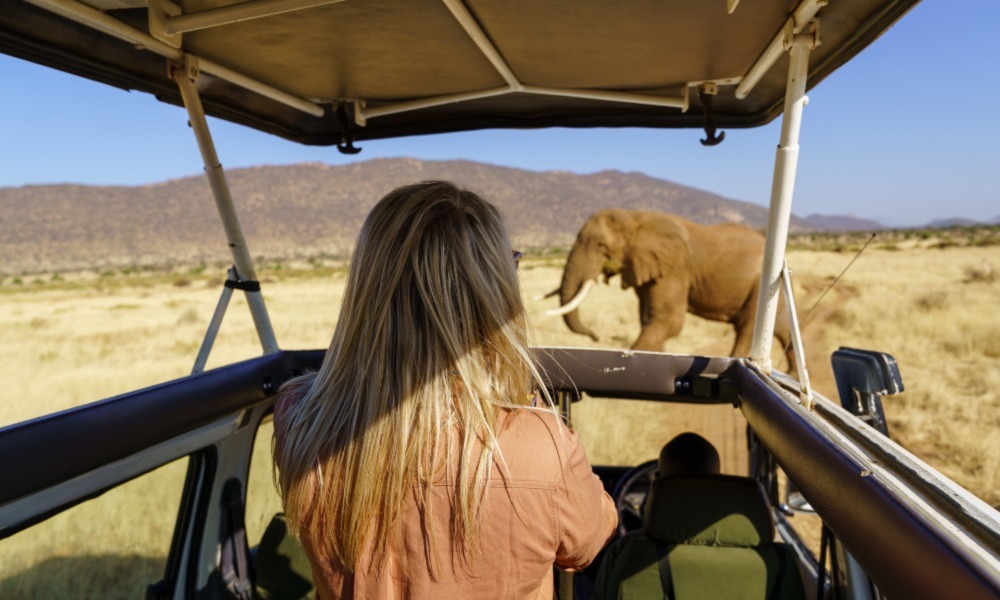
Welcome to Kenya, a land blessed with incredible biodiversity and a myriad of national parks and reserves that will ignite your sense of adventure. Get ready to explore Kenya Destination where wildlife thrives and breathtaking landscapes await. The Maasai Mara National Reserve , with its iconic Great Migration and abundance of predators, is a must-visit destination. Amboseli National Park offers the opportunity to witness majestic elephants against the backdrop of Mount Kilimanjaro. For a unique experience, head to Samburu National Reserve and encounter rare species such as the reticulated giraffe and Grevy’s zebra. Tsavo National Park, divided into East and West, showcases vast wilderness and diverse wildlife. Prepare to be amazed as Kenya National Parks and Reserves reveal the true essence of African safari magic.
How to Choose the Right Safari Itinerary on Your First Time Safari

Planning your first-time Kenya Safari can be an overwhelming task with so many incredible options to choose from. To ensure you have the most memorable experience, it’s essential to select the right safari itinerary. Start by determining your preferences, whether it’s wildlife viewing, cultural immersion, or a mix of both. Research the different national parks and reserves in Kenya, such as the Maasai Mara, Amboseli, and Tsavo, and their unique offerings. Consider the time of year and the specific wildlife sightings during that season. Look for reputable safari operators who can customize an itinerary based on your interests and budget. Lastly, don’t forget to leave room for flexibility and spontaneity, as nature has its own rhythm. With careful planning and the right safari itinerary, your first-time safari in Kenya will be an unforgettable journey of a lifetime.
How To Choose the Right Safari Accommodation on Your First Time Safari
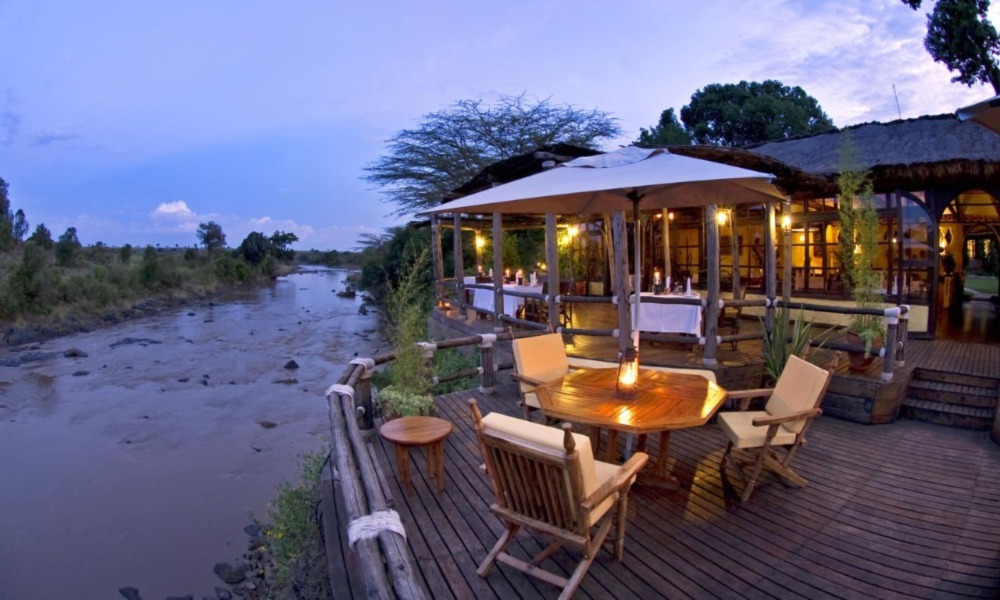
When planning your first Safari In Kenya , choosing the right accommodation is essential for an authentic and memorable experience. Luckily, Kenya offers a range of options to suit different preferences. Safari lodges provide a luxurious blend of comfort and immersion in the wilderness. With spacious rooms, fine dining, and stunning views, they offer a lavish retreat after a day of wildlife encounters.
For a more authentic and adventurous experience, tented camps are the way to go. These camps allow you to connect with nature while still enjoying modern amenities. Falling asleep to the sounds of wildlife and waking up to breathtaking views are the norm in these camps, offering a true safari spirit.
If you’re passionate about sustainability and want to support conservation efforts, eco-friendly accommodations are the perfect choice. These lodges and camps prioritize minimizing their environmental impact while providing an exceptional stay. From solar power to responsible waste management, these options allow you to enjoy your safari while contributing to the preservation of Kenya’s precious ecosystems.
Whether you prefer luxury, immersion, or sustainability, Kenya has accommodation options that cater to every preference. Choose the one that aligns with your desires and embark on a safari adventure of a lifetime.
What Does A Kenya Safari Cost?
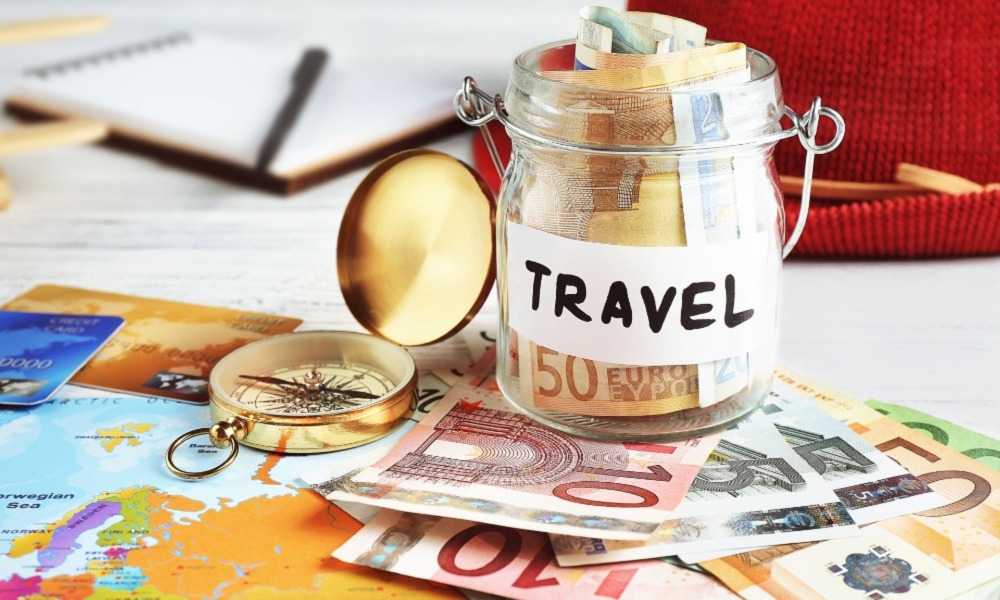
When it comes to Kenya Safari , diversity and choice reign supreme, allowing you to tailor your adventure to match your budget. Kenya offers a more affordable option compared to Tanzania, with prices varying based on your chosen destinations.
Dreaming of exploring iconic parks like Masai Mara and Amboseli? While these may be the pricier options, the experience is worth every penny. Expect a starting point of around USD 150 per day for tours in these popular destinations. For a truly luxurious experience, indulging in the finest camps and using light aircraft to hop between locations can exceed USD 1000 per day.
Kenya has something for everyone. Cycle amidst zebras and giraffes in Hell’s Gate National Park for just USD 30. Camp by the picturesque Lake Naivasha at a modest USD 10 per night, where nightly encounters with hippos are guaranteed. Even with a daily budget of USD 50-70, Kenya offers an array of safari experiences, making it an ideal choice for budget-conscious backpackers seeking unforgettable adventures.
So, whether you’re a luxury seeker or a savvy backpacker, Kenya has the perfect safari experience awaiting you. Unleash the magic of Kenya, where breathtaking wildlife encounters, diverse landscapes, and unforgettable memories are within reach, tailored to fit your unique budget.
Preparing for Your Safari on Your First Time Safari
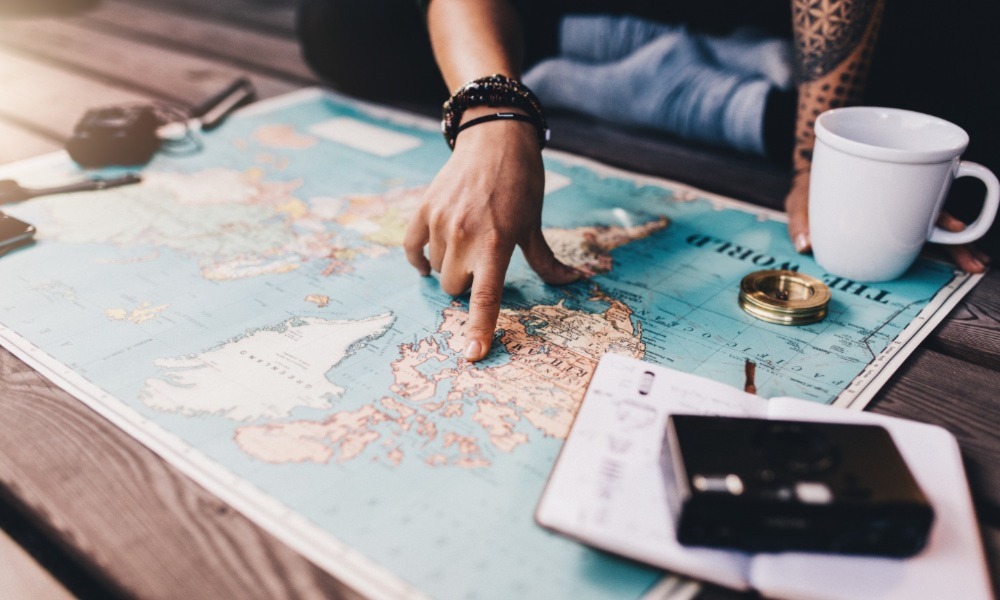
You’ll need a passport that is valid for at least six months prior to your arrival. Your passport must contain a minimum of two blank pages for stamps. You’ll also need a $50 visa. You can apply for a visa online at Evisa.go.ke or you can wait until you arrive at the airport in Kenya.
Vaccinations
According to the Centers for Disease Control, there are no mandatory vaccinations for Kenya Safari Tours though you may be required to get a yellow fever shot if your travels take you through endemic zones prior to your arrival. The agency also advocates being up to date on immunizations for Hepatitis A and B, typhoid, yellow fever, rabies and meningitis. Additionally, you may want to consider pills for malaria. Make sure to speak to your physician about your travel plans to determine what you need.
Pack enough light casual attire for a long weekend and take advantage of the same-day laundry service (weather permitting) that the majority of camps provide. It’s chilly in the morning and evening, but hot in the afternoon, so dress in layers. A good sunscreen is also a must-have, in addition to a wide brim hat and a good pair of polarized sunglasses. And flip-flops are fine for the jeep, but also pack a pair of comfortable sneakers.
Small commuter planes are the main mode of transport into the bush and all the domestic carriers are sticklers about baggage restrictions. Bags must be soft, no longer than 26 inches and wheel-free, and the total luggage weight per person cannot exceed 15 kilograms (33 pounds), including your carry-on. If you go over the limit, your best-case scenario would be paying a fee, but in a worst-case scenario, you may have to buy a separate ticket for your baggage or wait until there is a plane with space available.
Kenya shillings is the local currency. You can pick up shillings at the airport upon arrival, but U.S. dollars are also widely accepted. Keep in mind, accommodations will accept major credit cards such as Visa or MasterCard (American Express is not as widely accepted) for amenities or gift shop purchases, but you should bring cash for gratuity as well as extras, such as cultural visits to local villages or souvenirs like handmade jewellery or other trinkets from local artisans.
Tips are not mandatory, but they are customary. Your guide should be at the top of your list, and according to us, you should plan to pay $15-25 per person per day. If you have a large family, less per person is acceptable. If you want to distribute gratuity to all staff members, most camps have a staff box where guests can leave a gratuity of $5-10 per person per day. When in doubt, ask a manager for advice, Friedman says.
Unique Safari Experiences Only Found in Kenya
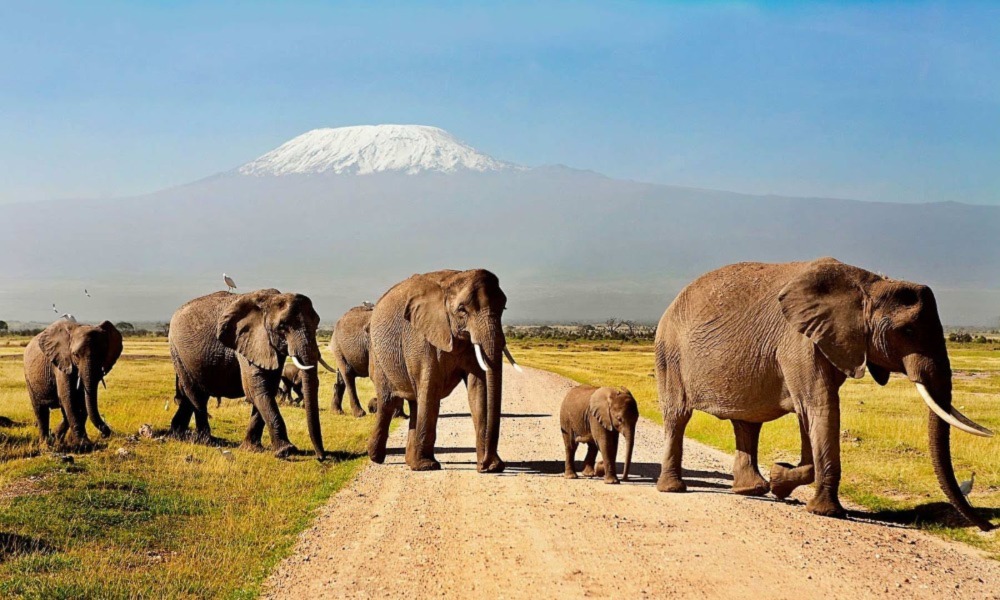
- Watch great herds of wildebeest cross the Mara River , as crocodiles hang out their hungry jaws.
- Go on a mountain bike safari in parks like Hell’s Gate, where the lack of carnivores and elephants means the experience is safe.
- Encounter white and black rhinos together on the Laikipia Plateau (this is very unique indeed!).
- Explore the vast open grasslands of Samburu in the north of Kenya.
- Encounter over a dozen primate species , including rare mangabeys, on walking safaris in Kenya’s forested parks.
- Go on a big-game safari in Nairobi National Park , next to the city.
- Take thrilling nighttime game drives in one of the country’s private conservancies.
- Hot air balloon above the Masai Mara.
- Watch elephants wandering beneath snow-capped Mount Kilimanjaro in Amboseli.
Choose A Tour Operator You Can Trust
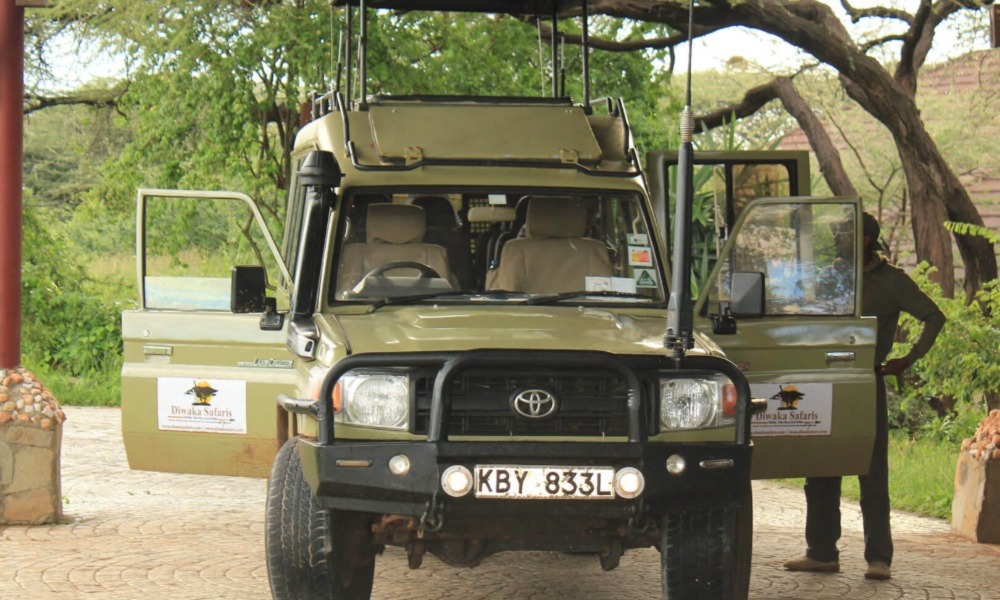
Though self-planned safaris give travellers a purer sense of adventure, booking your next Kenya Safari Tour with an experienced operator is smarter.
With Diwaka Safaris , you have a team who manages your entire journey. They also take care of logistics concerns so that you can spend more time at reserves, parks, and other attractions.
Plus, safari operators have a team of knowledgeable guides proficient in the local history and culture, allowing you to get to know the country as you travel.
If you have specific interests or requests for your trip, a tour operator can make arrangements for you. Whether you want to see landscapes and animals on foot or in a vehicle, an experienced travel provider can make it happen.
Why Diwaka Safaris
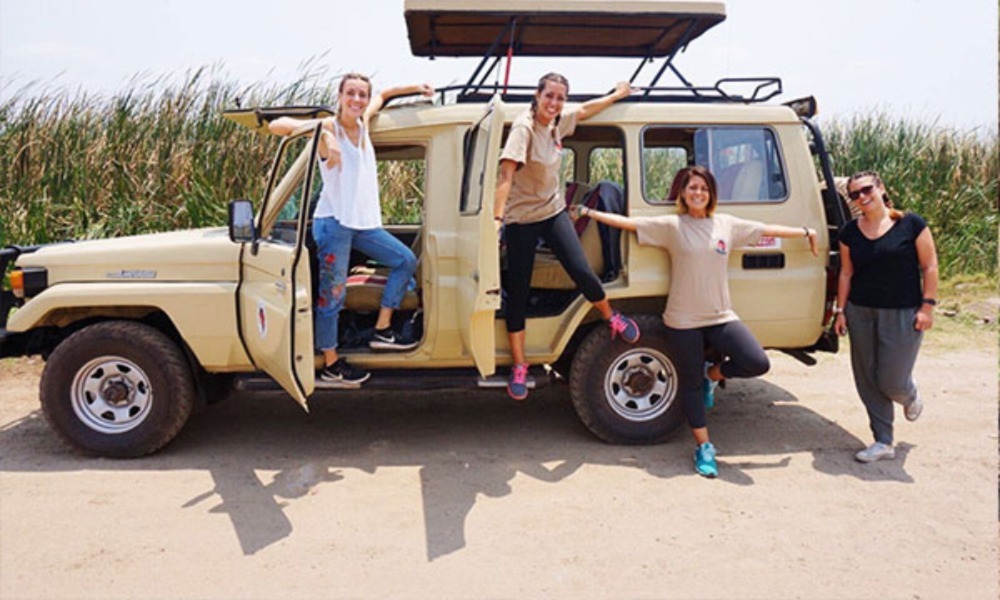
Diwaka Safaris treats all guests as family. “The African Safari is very important to us, and we want travellers to see the continent’s beauty through our eyes and the eyes of the locals.” Therefore, you can expect more when you choose us as your travel operator, including:
- Intimate Experiences: We utilize our local knowledge to help guests find that personal connection with safari destinations.
- Immersive Tours: We allow guests to fully immerse themselves in the local culture and primitive wildlife, creating authentic experiences.
- Value for Money: We tailor your tour to your wants and budget. Once you tell us your preferences, we will send you a detailed quote for your approval. Their services don’t have hidden costs.
- Entirely Local: Diwaka Safaris is a specialist safari, or Destinations Management Company based in Nairobi, Kenya. The entire local team has years of experience in safari logistics and service experience.
Request a free quote with Diwaka Safaris to start planning your next African safari holiday with a local expert.
Go On, Share This Post
Related post.

What To Expect on a Typical Kenya Day Trip Safari: A Journey into the
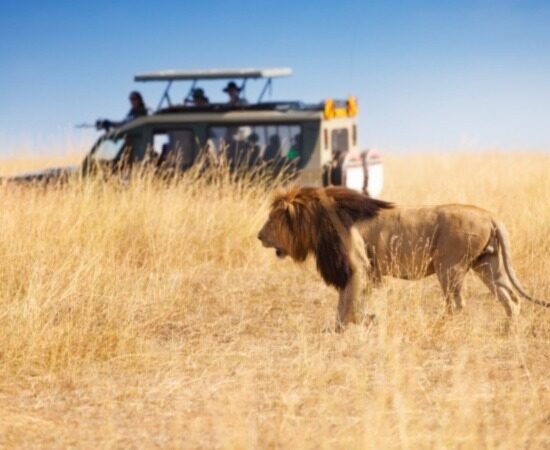
A First-Timer's Guide to Planning a Safari in Kenya
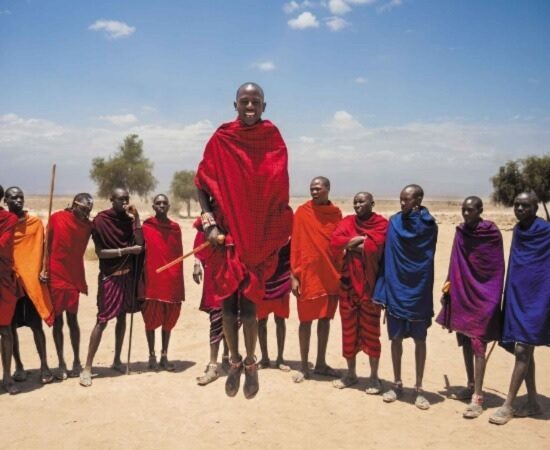
Kenya Cultural Tour: Immerse Yourself in the Rich Heritage

Encounters with Wildlife: A Close-Up Look at Kenya's Safari Marvels
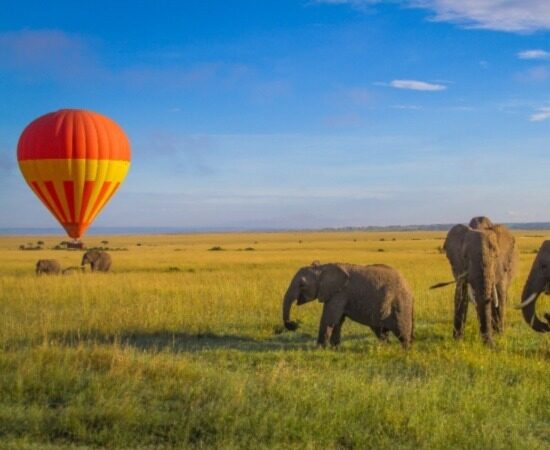
Masai Mara Safari - Discover The Magic Of Masai Mara On Your Kenya Saf
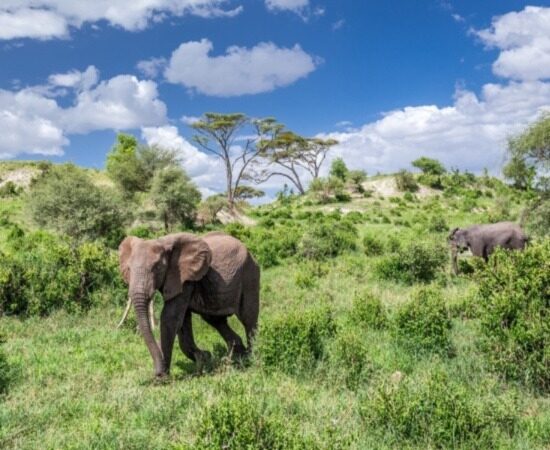
Tanzania Destinations - A Journey To The Heart Of Africa With Diwaka S
Leave a reply.
Your email address will not be published. Required fields are marked *
Popular Posts

Kenya Safari Tour – Why Every Traveller Should Experience A Safari i
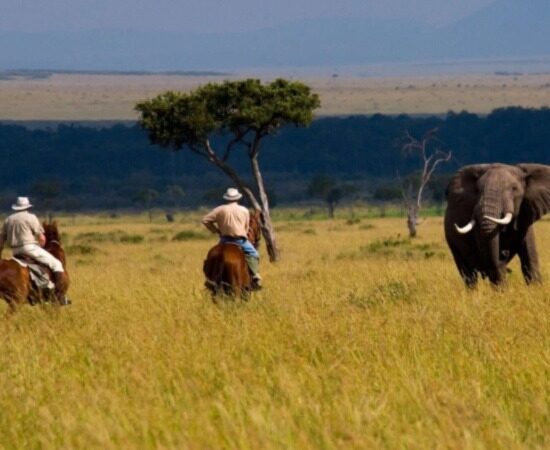
The Call Of The Wild - Explore Kenya's Ultimate Wildlife Encounters
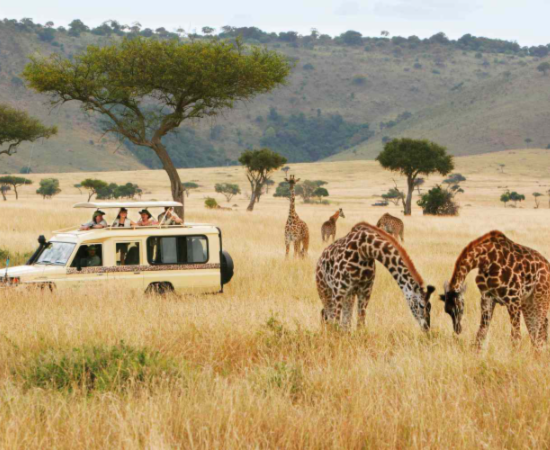
Kenya Safari Secrets - Uncovering The Beauty Of The African Savanna
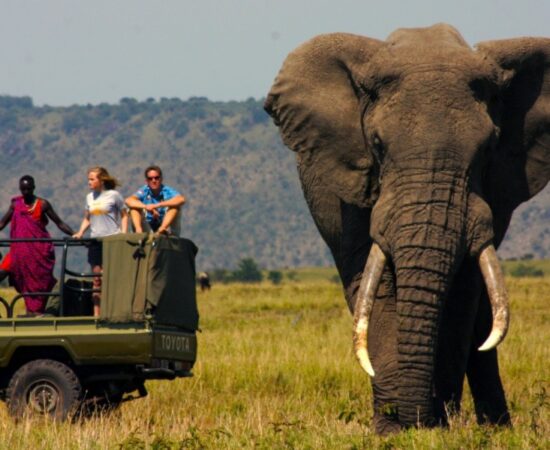
What You Need To Know While Preparing For Your Kenyan Safari For USA T
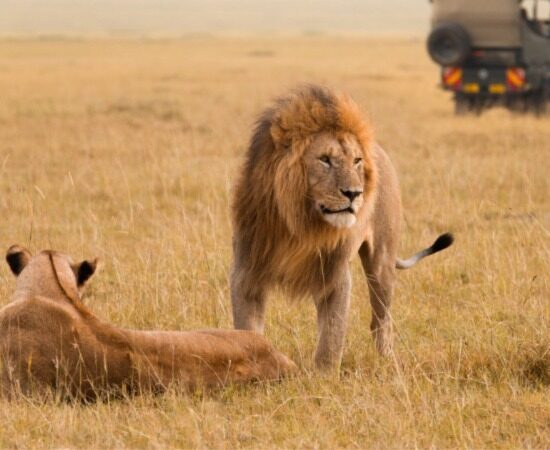
Which Country Offers the Best Safari Experience: Kenya Vs. Tanzania?

Top 10 Places in Kenya Where You Can Spot Rhinos

Why Visit Tsavo East And West Beyond The Expected Masai Mara?

Visit World’s only Wildlife Capital - Nairobi National Park, Kenya!

How UK Travellers Can Plan A Safari To Kenya?
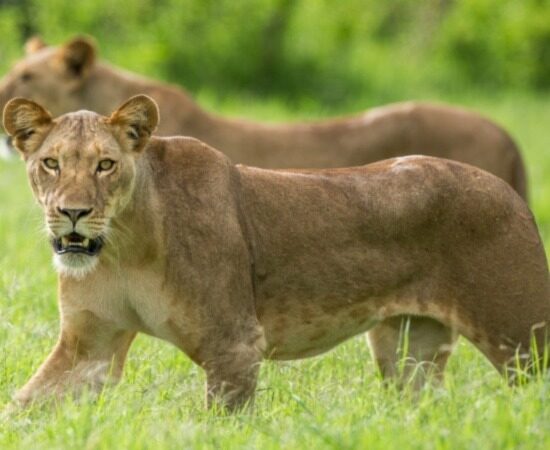
Why Choose The Green Season For A Safari In Masai Mara, Kenya?
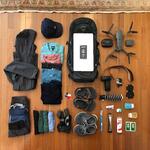
A Comprehensive Guide For A Kenya Safari- Know What To Pack

An Expert Guide To Planning a Kenya Budget Safari
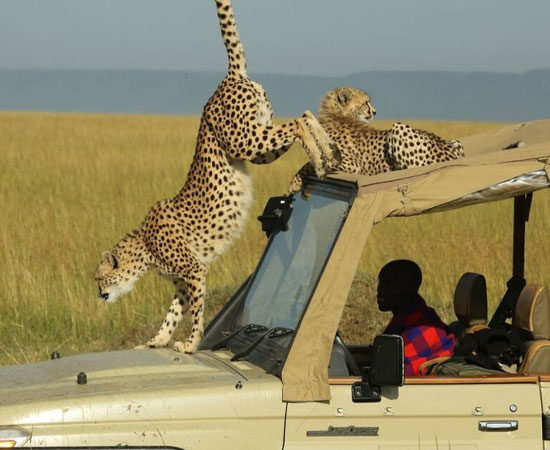
Masai Mara, Kenya-The Ultimate Safari Of A Lifetime!
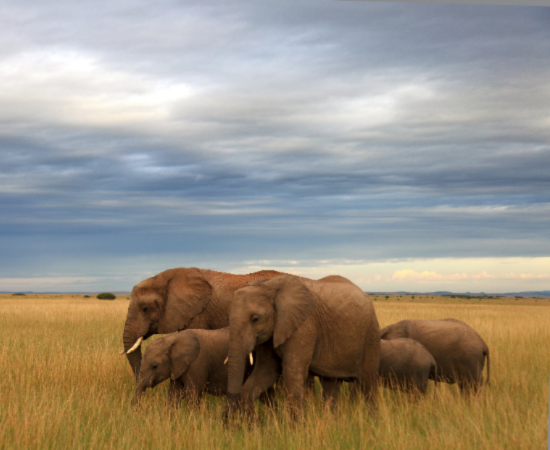
Top 8 Things To Consider When Travelling To Kenya
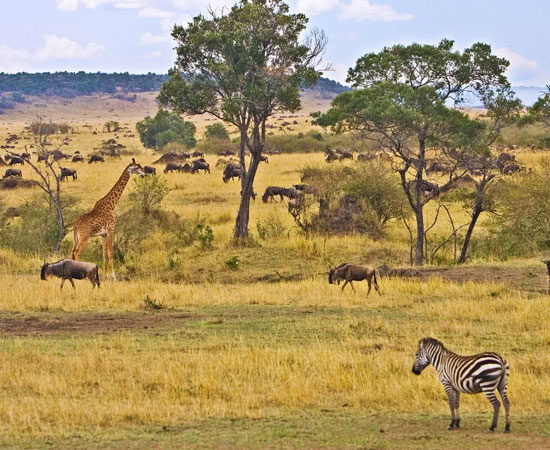
The Ultimate Safari Guide & Experience to Go On a Safari in Kenya!
Latest posts, follow us on.
Kenya safari: the planning guide for first-time visitors
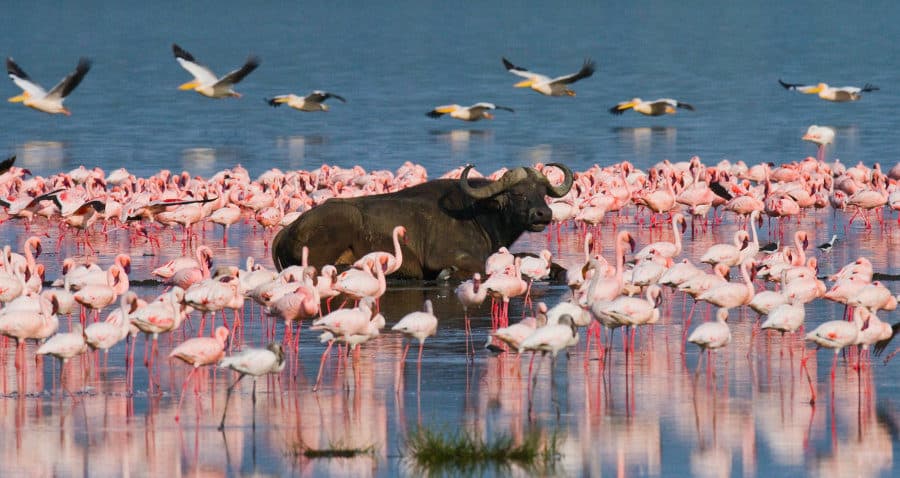
A Kenya safari ignites the imagination . Elephants walking beneath Mount Kilimanjaro; leopards yawning on Mara tree branches; the epic plains of Samburu.
This is the country that came to define an African safari , where you get incredibly close to all sorts of wildlife, on all sorts of landscapes. Almost 50 national parks and reserves provide safari experiences and the wildlife isn’t confined with fences; sometimes it’s walking on the road!
Kenya really put safari on the map. For good reason: in no other country is the wildlife so widespread . In capital city Nairobi you can see giraffe and rhinos backdropped by skyscrapers. Sometimes you see zebra along the highway.
However, Kenya has fallen out of favour in recent years and overtaken by Tanzania in terms of popularity. That’s good news for you . Why? Kenya has all the wildlife and wilderness for an incredible safari experience, plus the well developed infrastructure for making a comfortable connection with your wild side. But the destinations aren’t crowded. Here you can have the safari to yourself.
This detailed guide shows you the places to go , wildlife to see , experiences to consider , and useful tips for planning the adventure. It’s a guide for first-time visitors looking to discover the wonder of a Kenya safari.
Kenya Safari – Essential Information
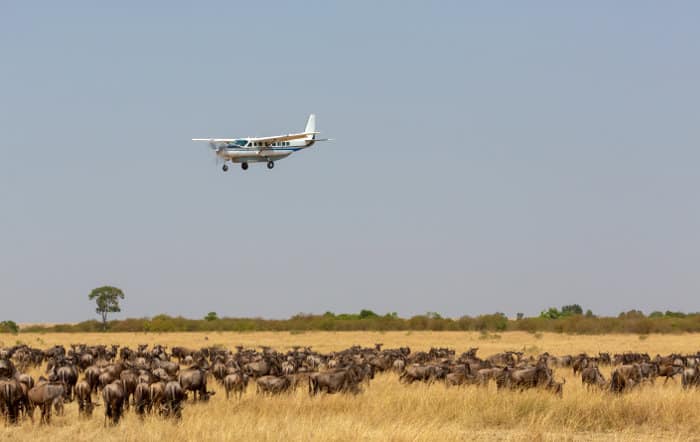
Where is Kenya and how do I get there?
Kenya straddles the equator in East Africa and has a long Indian Ocean coastline. It borders Tanzania, Uganda, South Sudan, Ethiopia and Somalia.
Almost every international visitor arrives into Nairobi’s recently redeveloped international airport . From here it’s easy to travel by air or road to different national parks and safari destinations .
What makes Kenya safaris so special?
While the great wildebeest migration rumbles into Kenya’s Masai Mara every June, Kenya safaris are really special for their ease and diversity . No other country offers so much choice over what to do and where to go. There’s something for every kind of visitor and every level of adventure.
This diversity extends to the settings . Parks like the Samburu feel endless. Others are small and compact. So much choice makes it incredibly easy to go on a safari. Even if you only have a 12-hour Nairobi layover you can still see lions and cheetahs.
What animals can I see on a Kenya safari?

Eclectic landscapes support a stunning array of wildlife. Kenya is superb for encountering the predators , with healthy populations of lion, leopard, hyena and cheetah. It has a growing black rhino population and solid numbers of elephant, buffalo and hippo.
However, it’s usually the supporting cast that makes a Kenya safari so good. Think zebra, different giraffe subspecies, all manner of large antelope, plus primates that swing through the trees around your lodge.
This wildlife is rarely encountered on its own nor is it confined to national parks . You can be relaxing on a white sand beach with colobus monkeys as neighbours. Or taking a bus along the main highway and spotting elephants through the window!
How long do I need a Kenya safari?
To really connect with your wild side it’s better to go on a multi-day , multi-destination safari . Exploring different parks enhances the wildlife experience while staying longer means it’s more immersive.
However, a major highlight of visiting Kenya is that it doesn’t matter how long you have for a safari . You can visit a park for three hours and see a variety of wild animals. Or you could go on safari for a month. With so many destinations to choose from, it’s easy to find a safari that suits your time frame and budget.
What does a Kenya safari cost?
Diversity and choice means a Kenya safari can be tailored around your budget . Kenya is noticeably cheaper than Tanzania although the prices range enormously dependent on where you go.
Famous parks like the Masai Mara and Amboseli are the most expensive , especially if you’re staying within the park or in a private conservancy. Realistically, you should be thinking of USD 150 per day as a starting point when touring the bigger destinations. This rises to over USD 1000 a day for staying in the very best camps and using light aircraft to fly between destinations.
However, you can cycle with zebra and giraffe in Hell’s Gate National Park for just USD 30 . It’s possible to camp on Lake Naivasha for USD 10 a night and see hippos every evening. With a tight daily budget of USD 50 – 70, Kenya is still able to offer lots of safari experiences; Kenya is a good choice for backpackers put off by the expensive fees and permits in Tanzania.
How do I travel around Kenya?
Many of the parks can be accessed by public transport , which keeps the costs down. You can take a bus to a town near the park gate and have a local operator take you from there. Tour operators also provide more complete packages. You drive between destinations in the same vehicle you use for a safari – the roof pops open and you stand on the seats for a prime view.
Note that the distances are long in Kenya . For example, from the Masai Mara to Samburu will take you the best part of three days on the road. Upmarket safaris use light aircraft, bringing such a journey down from three days to under three hours.
Why Choose Kenya for a Safari

Kenya brings to mind wildebeest galloping over the plains, elephants roaming in large herds, and lions with flowing manes. Back in the 1980s, this was the country that really introduced African safari to the world .
Here there is a great abundance of different animals and landscapes . It’s easy to find a safari that suits your interests and budget. Plus, it’s possible to get incredibly close to it all.
In Kenya there is all the promise of an African safari and the adventure can be tailored to you. Furthermore, you don’t even need to be on a safari to see wild animals.
But the best reason for choosing Kenya is the lack of other visitors . The Masai Mara is arguably Africa’s most famous safari destination. This park is popular and can get crowded. But everywhere else isn’t.
It’s not the same experience when there are 20 safari vehicles crowding around a leopard. That’s not the case here – the Mara aside – and in some of the destinations you don’t even need a guide with you. You can be walking through fields of wild zebra and buffalo, with nobody else around, for just a USD 30 entrance permit.
Unique safari experiences only found in Kenya
- Watch great herds of wildebeest cross the Mara River , as crocodiles hang out their hungry jaws.
- Go on a mountain bike safari in parks like Hell’s Gate, where the lack of carnivores and elephants means the experience is safe.
- Encounter white and black rhinos together on the Laikipia Plateau (this is very unique indeed!).
- Explore the vast open grasslands of Samburu in the north of Kenya.
- Encounter over a dozen primate species , including rare mangabeys, on walking safaris in Kenya’s forested parks.
- Go on a big-game safari in Nairobi National Park , next to the city.
- Take thrilling nighttime game drives in one of the country’s private conservancies.
- Hot air balloon above the Masai Mara.
- Watch elephants wandering beneath snow-capped Mount Kilimanjaro in Amboseli.
Safari experiences that are commonplace in Kenya
- Relax by a lake or waterhole and watch hippos coming out at sunset.
- Go on a walking safari – no other county has so many places to do it.
- Fly between remote wilderness areas in light aircraft , landing on dusty, elephant-surrounded runways.
- See giraffe and zebra along the road.
- Track leopards and cheetahs on the grasslands.
- Come to know different monkey species , especially colobus and vervet monkeys .
- Stay in a beautiful camp that reminisces about the time of old explorers.
- Mix up your itinerary to include drives, walks, cycles, boat trips and scenic flights.
Wait, is Kenya safe to visit for a holiday?
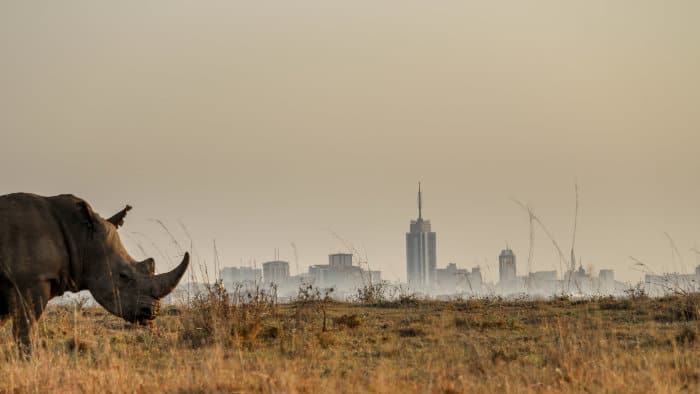
Yes . Yes . And yes once more . Okay, Kenya has suffered from a handful of well publicised terrorist attacks. Newspapers and news channels seem to take glee in these, painting Kenya as a volatile country and prime target for terror attacks.
The narrative says that Kenya is dangerous and should be avoided. But after the Paris terror attack the news never suggested it wasn’t safe to visit France . London is considered a safe and amazing city, yet it has had more terrorist attacks over the last 20 years than the whole of Kenya. Then a small number of isolated attacks in Nairobi and there’s a suggestion that Kenya is like Armageddon.
Without wanting to sound too political, part of the problem could be how well developed Kenya has become . The country is thriving economically and has all the potential to be a major world power – educated and passionate people, an abundance of natural resources, a forward-thinking attitude. It’s not the first time that the West has put a rising African nation down.
There is a no-go area of 100 kilometres to the Somalian border . Other than this Kenya is very safe to visit. You need to watch out for rampaging elephants rather than terrorists. And the isolated attacks have been in the most developed parts of major cities – these are many hundreds of miles away from the wilderness.
To not visit the Masai Mara because there was a terrorist attack in Nairobi, is like not visiting the French Riviera because of what occurred in Paris.
The Best Time to Visit Kenya for a Safari

Kenya straddles the equator and has a classic East African climate of dry seasons and rainy seasons . 50 years ago these seasons were very clear cut.
They have become unpredictable . One Africa Freak contributor was at Lake Naivasha in January 2019 and it rained solidly for four days, something that was unheard of to the locals.
Kenya has a hot and steamy Indian Ocean coastline but most of the safari destinations are found on elevated plateaus. So although you are on the equator it’s never usually too hot , even at the peak of dry season.
January to March – Premium dry season game viewing
- This is usually the warmest time of year and it shouldn’t be raining – even if it sometimes does!
- A lack of water and low grass makes this a premier time for game viewing ; animals are easiest to spot during these months.
- March is a wonderful time of year to visit, before the rains and without any crowds .
April and May – Rains and off season
- The long rainy season , with regular downpours that carpet the landscape in fresh colour.
- Many lodges close during these months and areas of national parks become inaccessible.
- Visit during these months and you’ll have Kenya all to yourself!
June – Lush green plains and a comfortable climate

- A great month as the parks are alive with fresh grass and grazing animals.
- It should be dry and it’s before peak season , making this a good time to see the Masai Mara in bloom.
July and August – Great wildebeest migration and peak season
- Enormous herds of wildebeest make their famous crossing over the Mara River, to graze in the Masai Mara.
- The climate is cool and dry ; lush high grass does make it more difficult to see the predators.
- These are comfortably the most popular months for visiting Kenya, especially the Masai Mara.
September and October – Wildebeest cover the Mara and superb countrywide game viewing
- If you had to choose the absolute best time for a Kenya safari it is now.
- The grass has shrivelled and game viewing conditions are excellent all across the country.
- The wildebeest migration is still in Kenya and the Masai Mara provides stunning scenes of predator versus prey.
- July and August crowds have disappeared , leaving Kenya back to its quiet best.
November and December – Short rains; still good for safari
- The short rains bring some rainfall, but not as frequent or abundant as earlier in the year.
- Most destinations remain good for safari although some of the highland areas can become inaccessible.
Where to Visit in Kenya for a Safari
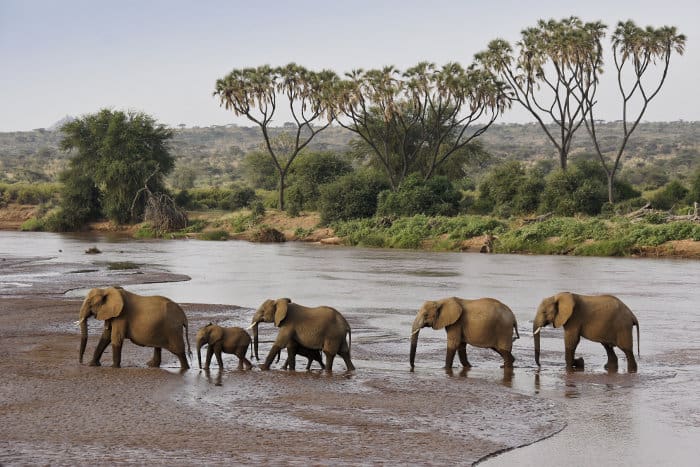
This article provides a more detailed guide to the main safari destinations in Kenya . There are a lot of parks and reserves to choose from and you shouldn’t feel geographically restricted to a particular area .
Combining a selection of these parks is what a Kenya safari is all about, particularly destinations in different parts of the country. The most famous itinerary is the Masai Mara combined with Samburu and a park in Central Kenya .
Note that there are more parks and reserves than this . Only the premier destinations have been listed here.
Southern Kenya
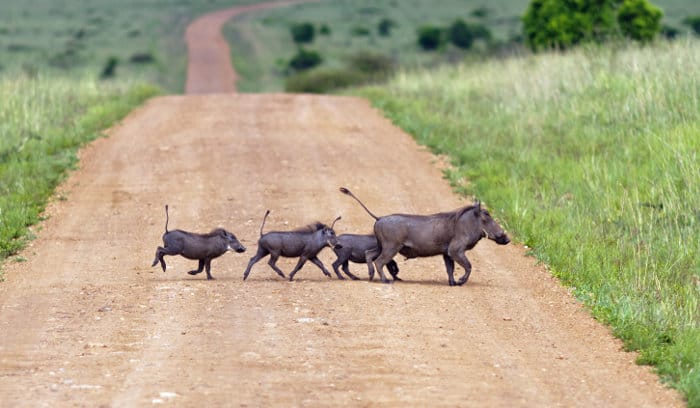
The most famous and popular place to go on a Kenya safari . These parks are a half-day drive or one-hour flight south of Nairobi. They are easily combined with a safari in Tanzania, most famously the Masai Mara with the Serengeti .
Amboseli – With large elephant herds backdropped by Mount Kilimanjaro, Amboseli is as iconic as it comes. It’s a great safari introduction and there’s a real wow factor to the setting.
Chyulu Hills – Mammals roam rolling green hills here, sometimes alongside Masai tribesmen herding their cattle. You’ll struggle to find the predators but it’s an exquisite place, especially if you’re seeking a little rest and relaxation.
Masai Mara – Africa’s most famous destination, where grasslands are carpeted in wildebeest and zebra. It’s arguably the best place in Africa for encounters with lion prides and to witness raw hunting scenes. The wildebeest migration stays here from July to October but the park is packed with other life all year around.
The Masai Mara is surprisingly small in comparison to the Serengeti and if visiting in peak season (July and August), it’s better to stay in one of the private conservancies.
Central Kenya
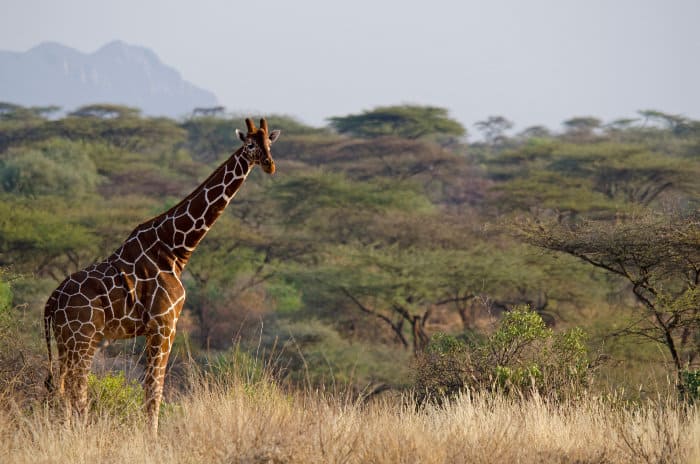
A kaleidoscope of different landscapes come together in Central Kenya. Volcanoes soar, forests entice, grasslands extend and the lakes are filled with hippos. Each of these safari destinations has a specific appeal .
They are all worthy places to visit if you seek a short safari experience , or only plan to visit one park. Combining any of these destinations is relatively straightforward and you could see one park a day should you wish.
Aberdares National Park – A forest in the clouds offering stunning multi-day walking safaris. Don’t come for the big five. Instead, Aberdares is a haven for animals you don’t normally see on safari, especially rare and endangered monkey species.
Central Rift Valley – There are more than ten parks and reserves in the Rift Valley, between Nairobi and Nakuru. Most are small and best for unique half- or full-day activities, such as hiking Mount Longonot or self-guided mountain biking in Hell’s Gate. This is where you’ll see large animals along the highway and the lack of carnivores makes it very safe for different activities.
Kakamega Forest – A rainforest ecosystem reminiscent of Central Africa, Kakamega is cool, calm and completely different from everywhere else in Kenya.
Laikipia Plateau – Home to many private conservancies, this mystical wilderness offers luxurious lodges and exclusive safari experiences. It’s a great place if you have never been on a safari. Here you can encounter lots of different animals in a small area, including the famous big five .
Lake Naivasha – Camp besides a hippo-filled lake and enjoy some of Africa’s best bird watching, without having to pay any national park fees or book a guided safari.
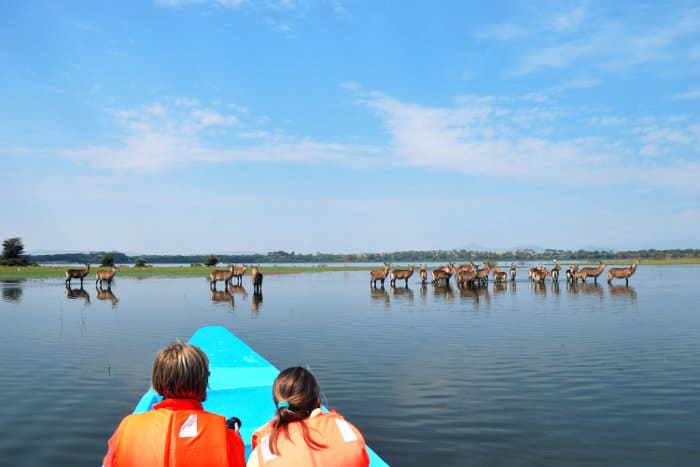
Lake Nakuru National Park – A flamingo-filled lake combined with both black and white rhinos makes this a popular Kenyan destination. You only need a day to see it all.
Lewa Wildlife Conservancy – One of Africa’s best private conservancies or reserves. Lewa is expensive but offers a perfect three-day safari itinerary, mixing different ecosystems and activities with luxurious accommodation.
Meru National Park – The complete big five and more on the slopes of a volcanic mountain.
Mount Kenya National Park – Not as famous as climbing Kilimanjaro but a beautiful 5,199 metre mountain to climb, with lots of monkeys still living in the forests.
Nairobi National Park – The perfect stopover destination or place to spend the day before your international flight. Rhino, buffalo, lion, hyena, giraffe – backdropped by the lights of a modern city!
Ol Pejeta Conservancy – A small conservancy and the best place in East Africa to see rhinos in the wild, with both the black and white subspecies, along with the only two northern white rhinos left in the world. There’s also a large chimpanzee sanctuary and you can go on a lion-tracking patrol.
Northern Kenya
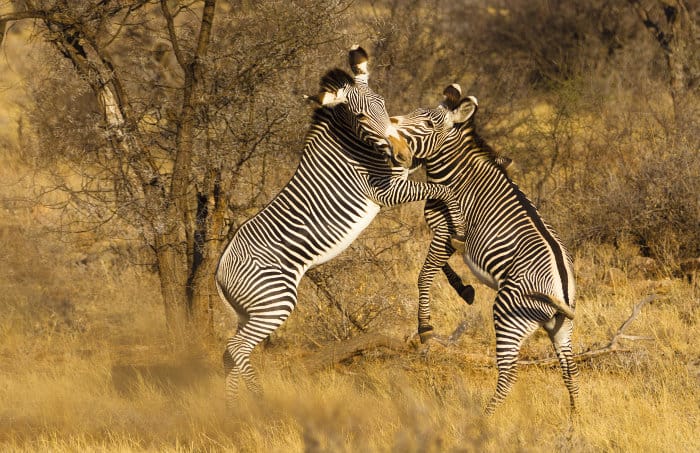
Wild northern Kenya is home to the Samburu , a tribal people who have expertly preserved both the wilderness and wildlife. Getting here is a challenge but it’s so worth it. As long as you have enough time to enjoy the safari that is, northern Kenya is not for a one-day safari!
Samburu – Wrapped around mountain slopes, Samburu is an escape from the world. If you want a truly wild safari, in a truly untamed wilderness, this is where you should come. Walk with local warrior guides, track the famed big mammals and many others, and experience the beauty of the unknown. You can stay in the national park or in one of the Samburu-owned conservancies.
Coastal Kenya

Over 500 kilometres of white beaches skirt the Indian Ocean, as tropical and exotic as any of the nearby islands like the Maldives. Yet there aren’t any people on the sand.
The classic Kenya vacation is to combine an African safari with some downtime on the beach . Or you can stay on the coast and choose to make a day or overnight safari trip.
The Beaches! – Kenya has the best beaches in the world. Monkeys fill the forests behind endless kilometres of white sand. Indian Ocean waters are rich in marine life and form tropical lagoons. Stunning resorts are spaciously set out but there isn’t much tourism anymore – so their prices are cheap and you can get the beach almost to yourself.
Diani is a stunning destination for all budgets. Malindi has many boutique, upmarket resorts. Lamu is a miniature version of Zanzibar, with coral houses, Swahili culture and open beaches.
Shimba Hills National Reserve – Hundreds of elephants and a handful of other wildlife make this a worthy day trip from Kenya’s southern beaches. There are far better safari destinations in Kenya, but it’s so magical to combine elephants with white sand in a single day.
Tsavo East – This large national park is all about surprise. The biodiversity is breathtaking and you need to visit for at least two days. Large sections of the park lie empty but patience rewards as you stumble upon intimate and dramatic safari scenes.
Tsavo West – Separated from Tsavo East by the Nairobi to Mombasa highway, this park of green mountains and wetlands is scattered with the big five. It’s a good place to see hippos and other wildlife as most action is easily found around the Tsavo River and Mzima Springs.
What is a private conservancy and why do I need to know about it?
National parks and national reserves are managed by the Kenyan government . Anyone can visit them and you pay a daily park fee. Rules are relatively strict in order to preserve the landscape, such as no driving off road; these rules vary by park .
Private conservancies are privately managed wilderness areas . Usually you can only visit if you’re staying at a lodge or camp in the conservancy. They are more expensive and exclusive, offering a wider variety of activities and less rules. Usually you can get closer to wildlife in conservancies.
Some conservancies share unfenced boundaries with national parks ; for example, there are almost a dozen of them around the Masai Mara. Visit these and you enjoy all the beauty and bounty of the famous park, but with more flexibility about what you do and even fewer other visitors.
Tips for Planning a Kenya Safari
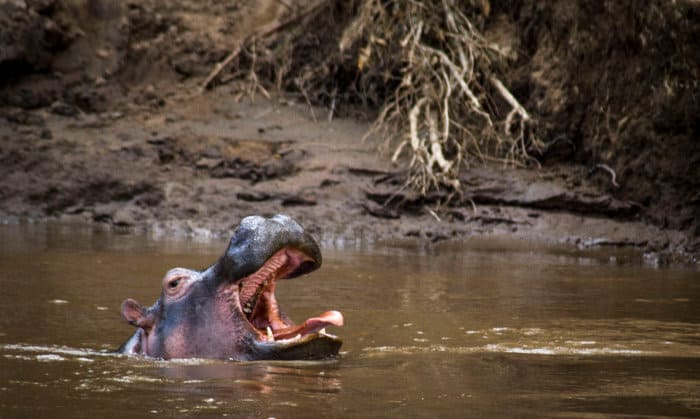
Safari is all about connecting with your wild side and Kenya has more wild places than anywhere else. Africa Freak partners with top safari specialists , who can help plan a trip that’s best for your interests and budget. You can do this by clicking here .
We’re also confident that the warm Kenyan people will assist you once you arrive . If you have time for a two- or three-week trip it’s easy to plan when you arrive and fit in a huge variety of safari destinations.
About The Author
Editorial Team
Related posts.

5 wildlife-related activities you can do in Nairobi

Amboseli National Park – Discover more than elephants

Lake Naivasha – One of Africa’s best-kept secrets
3 thoughts on “kenya safari: the planning guide for first-time visitors”.
There are no elephants in Nairobi NP!
Indeed, thanks for pointing that out.
There are no “wild” elephants in Nairobi National Park, only “orphaned” ones at the Sheldrick Wildlife Trust.
We just made the appropriate changes, thanks again.
Awesome guide! Learned a lot reading your blog. And the photos are incredible! Loved that you mentioned that Kenya is a safe place to explore. I guess many people think twice about visiting the country due to bad news about war and terrorist attacks. But seeing your blog is just so light and refreshing. It’s nice that you mentioned the parks in the country that we can go see and brief descriptions about them. Great work! Keep it up!
Leave a Comment Cancel Reply
Your email address will not be published. Required fields are marked *
- +256 (0) 779 820 753
- +250 (0) 790 089 902
- [email protected] | [email protected]

Kenya Safari Guide: The Ultimate Safari Guide to Kenya
This handy Kenya Safari Guide: shows you when to go to Kenya, and how to combine the best safari destinations. If you’re planning a first-time safari in Kenya, you’ve come to the right place.
Kenya routinely ranks as one of Africa’s top safari locations, that much is certain. Numerous thousands of tourists visit the country’s incredible wildlife areas each year, as well as events like the Great Wildebeest Migration . Kenya offers incredible safari experiences all year round because of its temperate temperature, vast open areas, and a profusion of animals in iconic locations like the Masai Mara and Amboseli.
You’ve come to the perfect site if you’re thinking of going on your first safari in Kenya . We have created remarkable itineraries to the “birthplace of safari” since 1998 for thousands of tourists from around the world. Our greatest travel tips, from travel budgets and the best wildlife regions to Wildebeest Migration schedule and the best locations to stay, are included in this practical Kenya safari guide.
What we’ll cover in this Article
- Location & Landscape
- Getting Around
- Kenya Safari Budget
- Accommodation
- Best Time to Go
- Best Suited For…
- Health & Safety
- What to Wear on Safari
- Kenya Combines Well With…
- Kenya Safari Itinerary Ideas
The Ultimate Safari Guide to Kenya
Location and landscape.
East Africa’s Kenya is a small nation. Nairobi, located largely in the center, serves as both the nation’s capital and primary transportation hub. Safari tourists arrive at Jomo Kenyatta International Airport and connect at Wilson Domestic Airport, which is right next door, to reach their safari locations. These are the principal regions to the north, south, east, and west of the capital, using Nairobi as a central point:
Central Kenya
All Kenya safari itineraries normally begin here because Nairobi serves as the nation’s logistical center. There are many conservation areas in the vicinity of Nairobi, the most well-known of which are the Aberdare Mountains, Lakes Nakuru and Naivasha, and Nairobi National Park. During the rainy season, the area is lush and verdant, and the lakes provide a haven for wildlife and birds.
Western Kenya
The Masai Mara National Reserve, which hosts some of Africa’s best year-round game watching as well as the annual Wildebeest Migration, is without a doubt the most well-known location in western Kenya. Massive herds of wildebeest and zebras are present from roughly August to November, and because they constantly draw the attention of Africa’s top predators, peak season visitor numbers are high (about June to October).
The broad, flat grassland of the Masai Mara affords excellent grazing, which is the main factor attracting the Migration there. The broad landscape is a safari classic with green grass that changes color as the seasons change, and there are few thickets, forests, or high peaks. The Thomson’s gazelle, topi, and reticulated and Masai giraffe are among the animals that frequent the plains, which are also occasionally populated with flat-topped acacia trees.
Northern Kenya
As you move farther north, the country gets drier and hillier since it doesn’t get as much rain as the southwest of Kenya does.
Nevertheless, there are still some excellent safari alternatives in this area, including Samburu National Park, Lewa Wildlife Conservancy, and Laikipia. The drier circumstances are ideal for animals like the Grevy’s zebra, the Somali ostrich, and the gerenuk. The best location in Kenya to regularly and reliably witness rhinos is Lewa. You might be fortunate enough to glimpse Mounts Kenya and Meru on a clear day.
Southern Kenya
This is the greatest location to see snow-capped Mount Kilimanjaro, the highest peak in Africa and the tallest free-standing mountain in the world, as it shares the longest portion of Kenya’s border with Tanzania. Kili is really in Tanzania, but Kenya’s Amboseli National Park has amazing vantage views because it is so near to the border.
The topography is more diversified and the area of Kenya is wetter: For instance, Amboseli has a stunning combination of open grassland, wetlands, woods, and hills, making it perfect for a range of species, from elephants to bat-eared foxes. Chyulu Hills and Tsavo East and West National Parks are close by.
Some of Kenya’s nicest beaches can be found down on the south-eastern coast. Visit Diani and the neighboring Galu for luxury beach resorts and kiteboarding. Visit Funzi Island to go diving and snorkeling.
THINGS TO DO IN KENYA Sustainable Tourism


- Switzerland
- United Kingdom
- South Africa
- The Bahamas
- United States of America
- United Arab Emirates
- Safaris & Wildlife
- About & Contact
Magical Kenya: Our 2022 itinerary for a perfect safari & beach holiday
(Advertisement | Press Trip)
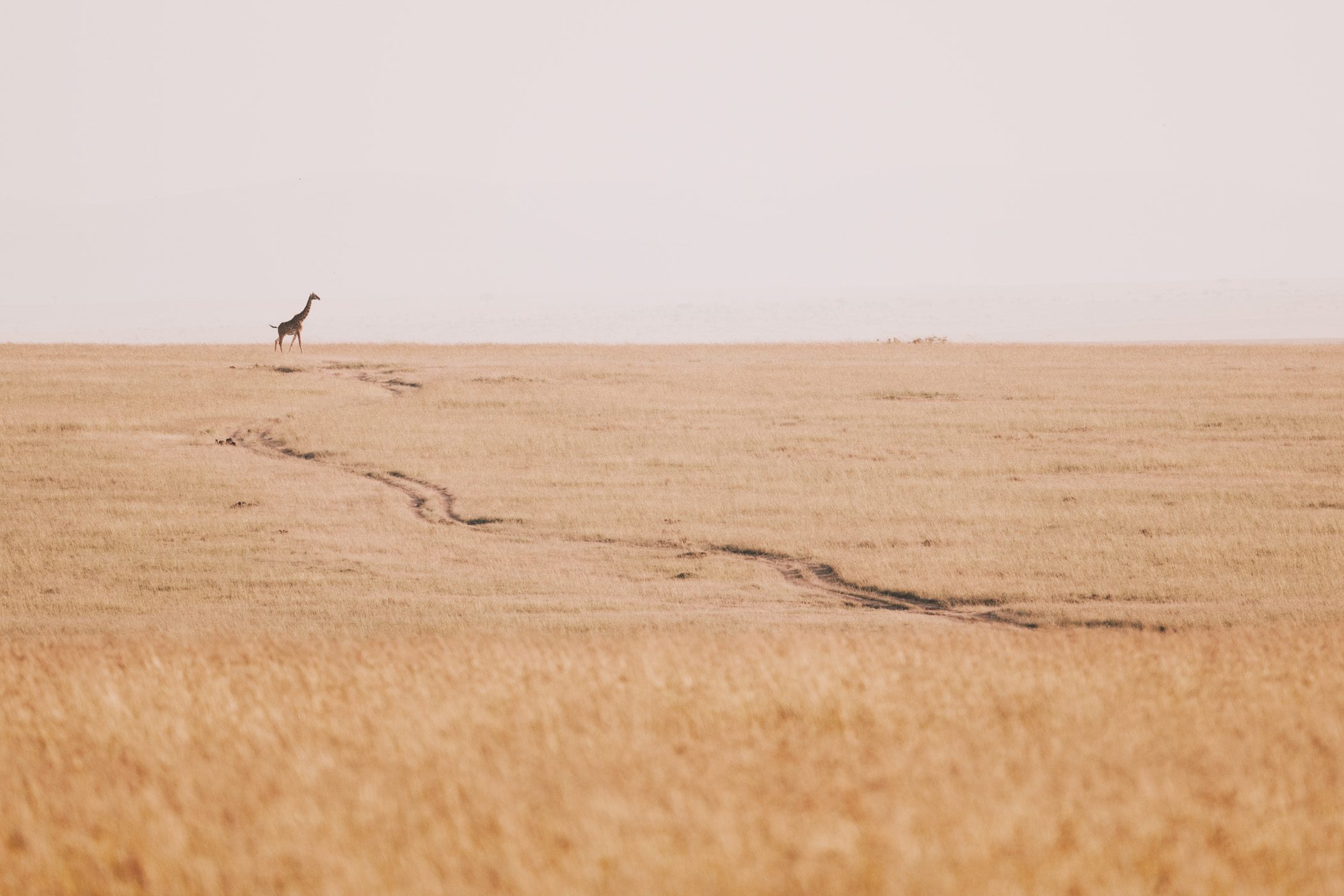
(Last Updated, September 2023) . Kenya has cast a spell on us, and that’s why we already visited the country twice within just 2 years! In the beginning of 2021 we visited Kenya for the first time and fell head over heels for it’s splendid safaris, incredible lodges, unique wildlife and for the lovely people who welcomed us with open arms after the challenges of the pandemic. So, when the Kenya Tourism Board asked us if we would re-visit Kenya in 2022 , we immediately said YES!
This time we travelled to a few new regions within Kenya, but also re-visited the famous Maasai Mara (because you can never have enough of this safari wonderland). In this blogpost we will share the full 2 week itinerary and updated tips for a Kenya visit .
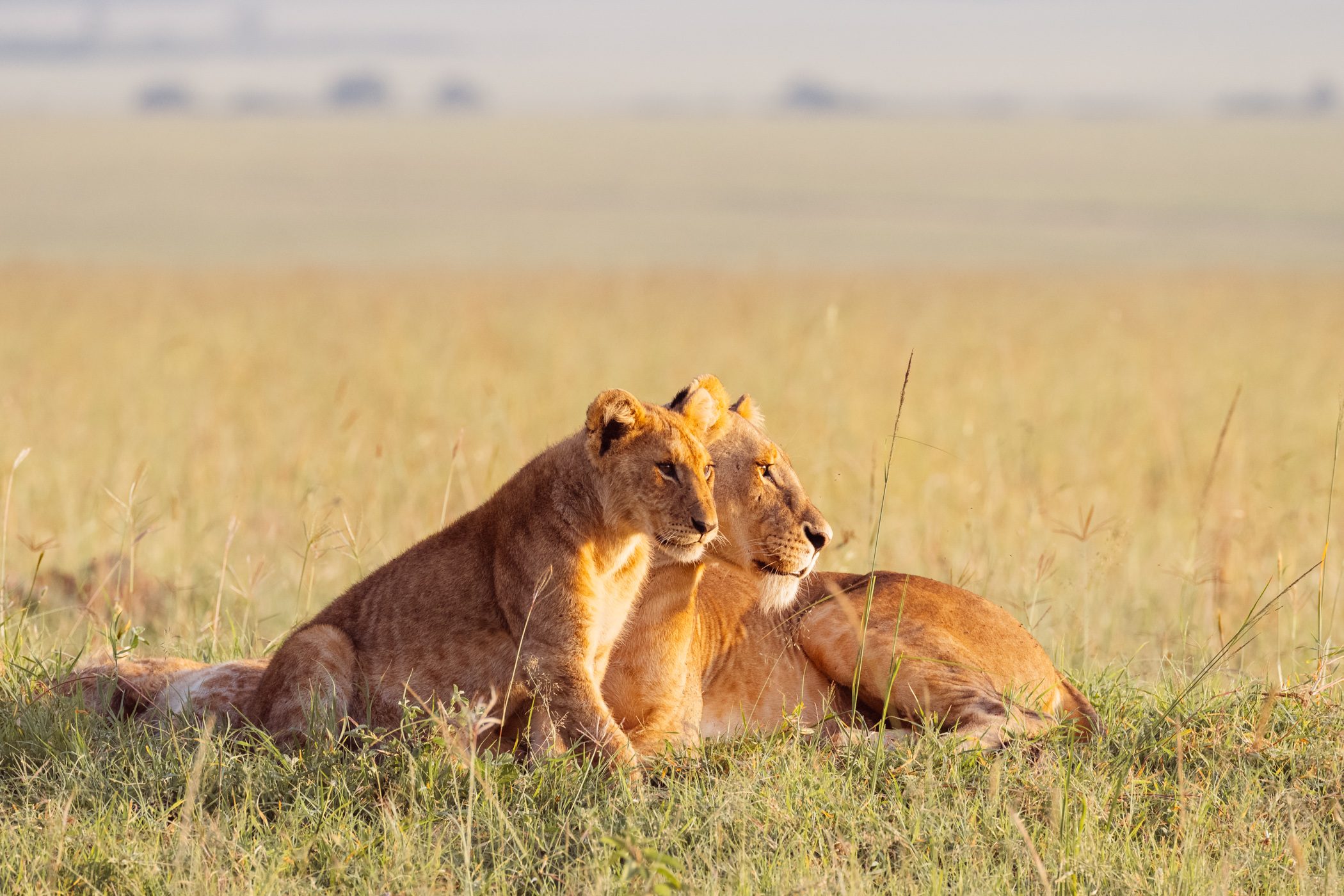
This time we combined our safari with a beach holiday – and can highly recommend this!
Table of Contents
Our two week itinerary in Kenya in 2022
This time we planned an itinerary that combines safari and beach holidays – which we believe is the perfect way to really enjoy the variety of Kenya ! Last year we missed out on the beaches, but little did we know how incredible the coastline of Kenya is. Here is the detailed itinerary of our 2 weeks in Kenya:
- 1 night in Nairobi: Nairobi Tented Camp
- 3 nights in the Maasai Mara: Emboo River Camp
- 3 nights in the Maasai Mara: Olimba Mara Camp
- 3 nights in Tsavo West: Kipalo Hills by Secluded Africa
- 3 nights at Kuruwitu Beach, Vipingo: Cardamom House by Secluded Africa
- 1 night in Nairobi: Nairobi Tented Camp
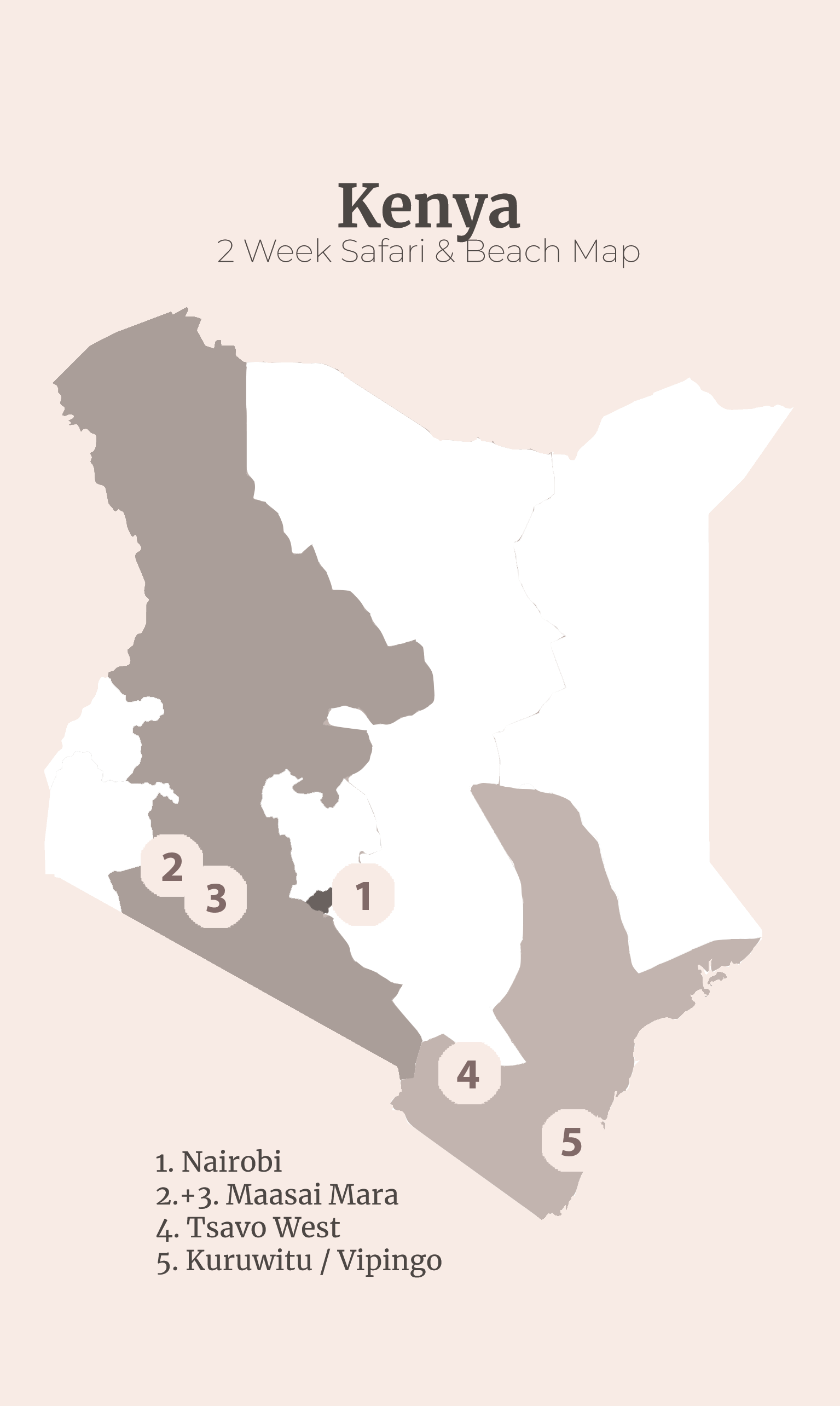
Most first time Kenya visitors will focus on Nairobi and the Maasai Mara (and maybe adding Lake Nakuru on the way). For two week itineraries some operators also combine Kenya with Tanzania, but we think if you have more than one week it’s best to extend your Kenya trip and add either the Northern parts (Laikipia and Samburu) or venture further to the East (Tsavo and the coastline).
In 2021 we decided to leave out the beach portion of the Kenya trip and went to the North instead , which is famous for it’s incredible conservancies and for cultural encounters with the Samburu and also worth a trip. This year we opted for the Eastern parts with the famous Tsavo National Park and it’s abundance of elephants as well as a few days at the beach.
In the end it depends on your preferences, if you’re into beach holidays go to the beautiful coastline, but if you prefer nature and safaris go to the North instead and visit Lewa or Samburu.
The Maasai Mara is always a staple when it comes to Safaris in Kenya and should not be missed!
Which regions to visit during a two week kenya roundtrip.
Just like the year before we spent two weeks in Kenya, but this time we travelled to these regions:
- Nairobi (1 night): We’re not huge city fans, so we decided to only spend one night in Nairobi, but stayed right inside the famous Nairobi National Park. There’s only one safari camp located right within the National Park called “Nairobi Tented Camp”, which is rustic, but offers a great gateway to a safari holiday in Kenya. This way your pick-up from the airport is already your first game drive! Other than that Nairobi has a lot to offer besides the National Park as well, if you’re opting for a longer stay.
Where to stay: Nairobi Tented Camp – a rustic tented camp inside the National Park
Read more about a stay at Nairobi Tented Camp inside Nairobi’s National Park here.
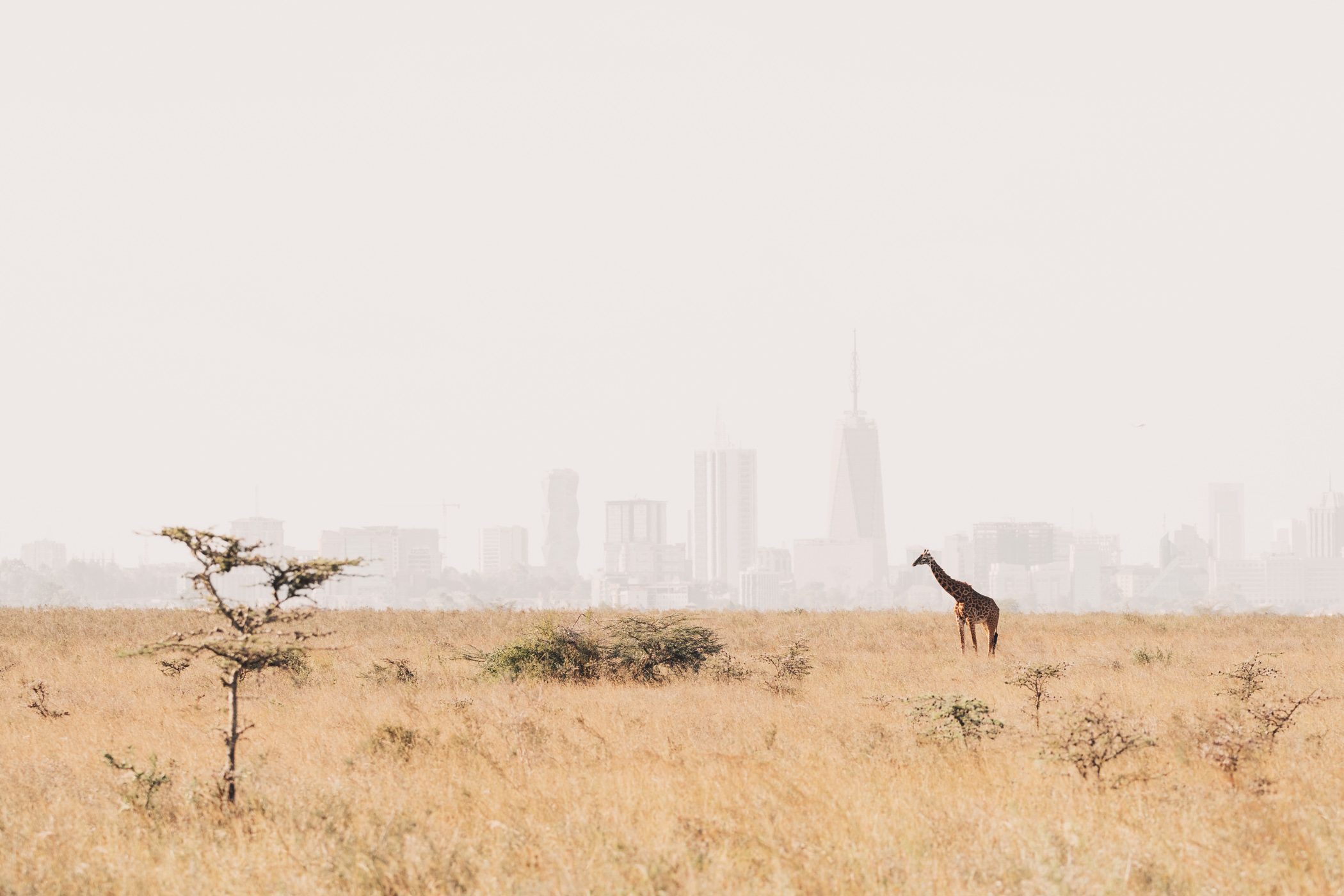
- Maasai Mara (6 nights): We already learned that this is the crown jewel of Kenya’s safaris last year, so of course we couldn’t pass the Mara this time around. We stayed in two different camps to get to know new areas of the national reserve. The Maasai Mara is – next to the Serengeti on Tanzania’s side – the location of the great migration, when millions of wildebeests and zebras inhabit the large grassy plains. But we visited outside of the main season twice now and can give testament to it’s plentiful wildlife in the low season as well.
Where to stay: Emboo River Camp – the first 100% carbon neutral eco luxury camp in the Maasai Mara. Olimba Mara Camp – a brand-new camp for socially responsible travellers, that is co-owned by a Maasai.
Learn more about the Maasai Mara and the different areas and lodges here!
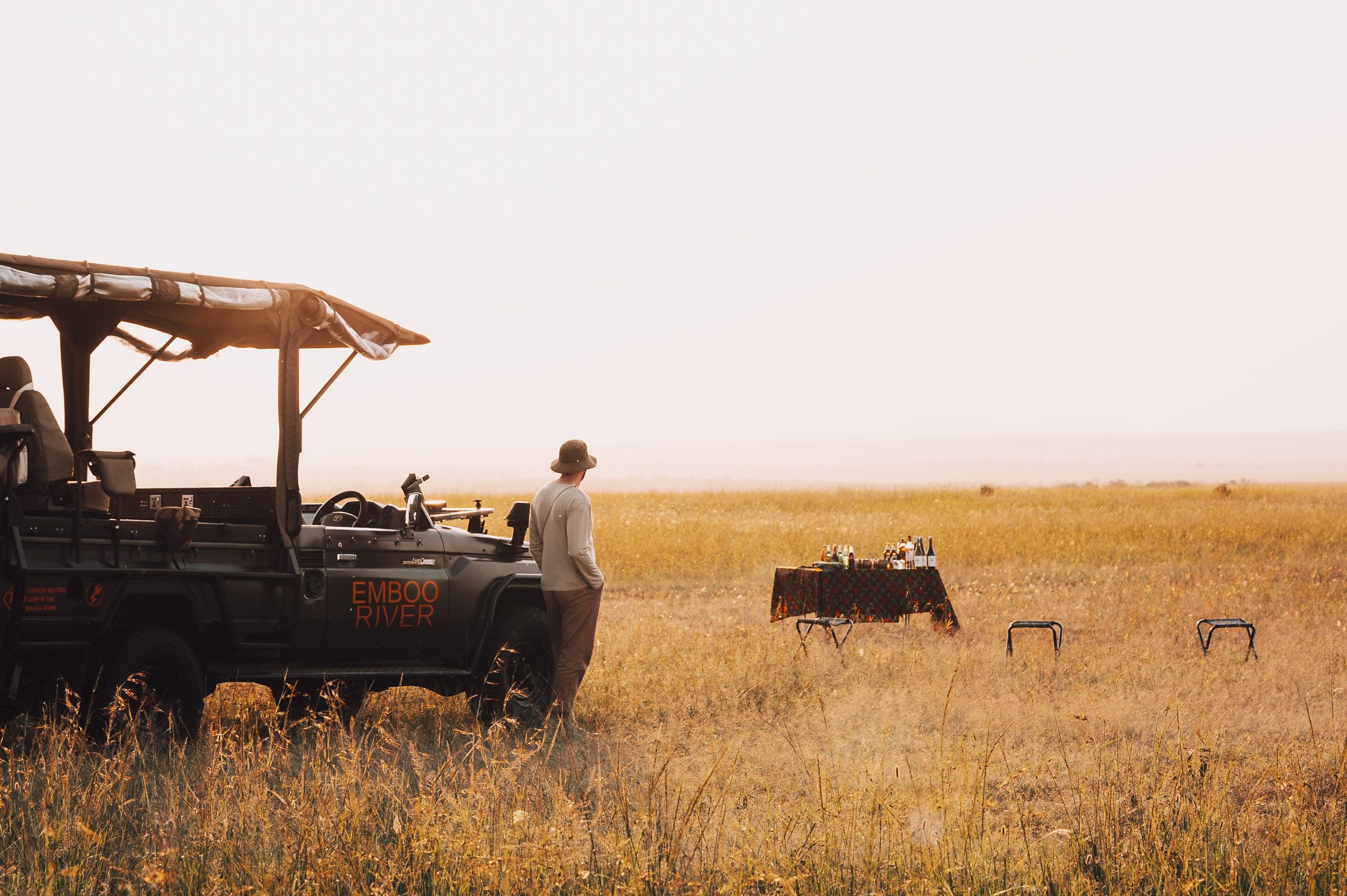
- Tsavo (3 nights): Together Tsavo East and Tsavo West form the largest National Park in Kenya – combined they have the size of Israel and are famous for the red soil and huge elephant populations. For us it was the first time in this part of Kenya and we had some of the most incredible wildlife encounters here – including seeing 3 leopards drinking at the water hole right next to our lodge during one dinner!
Where to stay: Kipalo Hills – a secluded barefoot luxury camp in it’s own private conservancy adjacent to Tsavo West and with access to Tsavo East
Read more about where to stay in Tsavo and why it’s worth a trip!
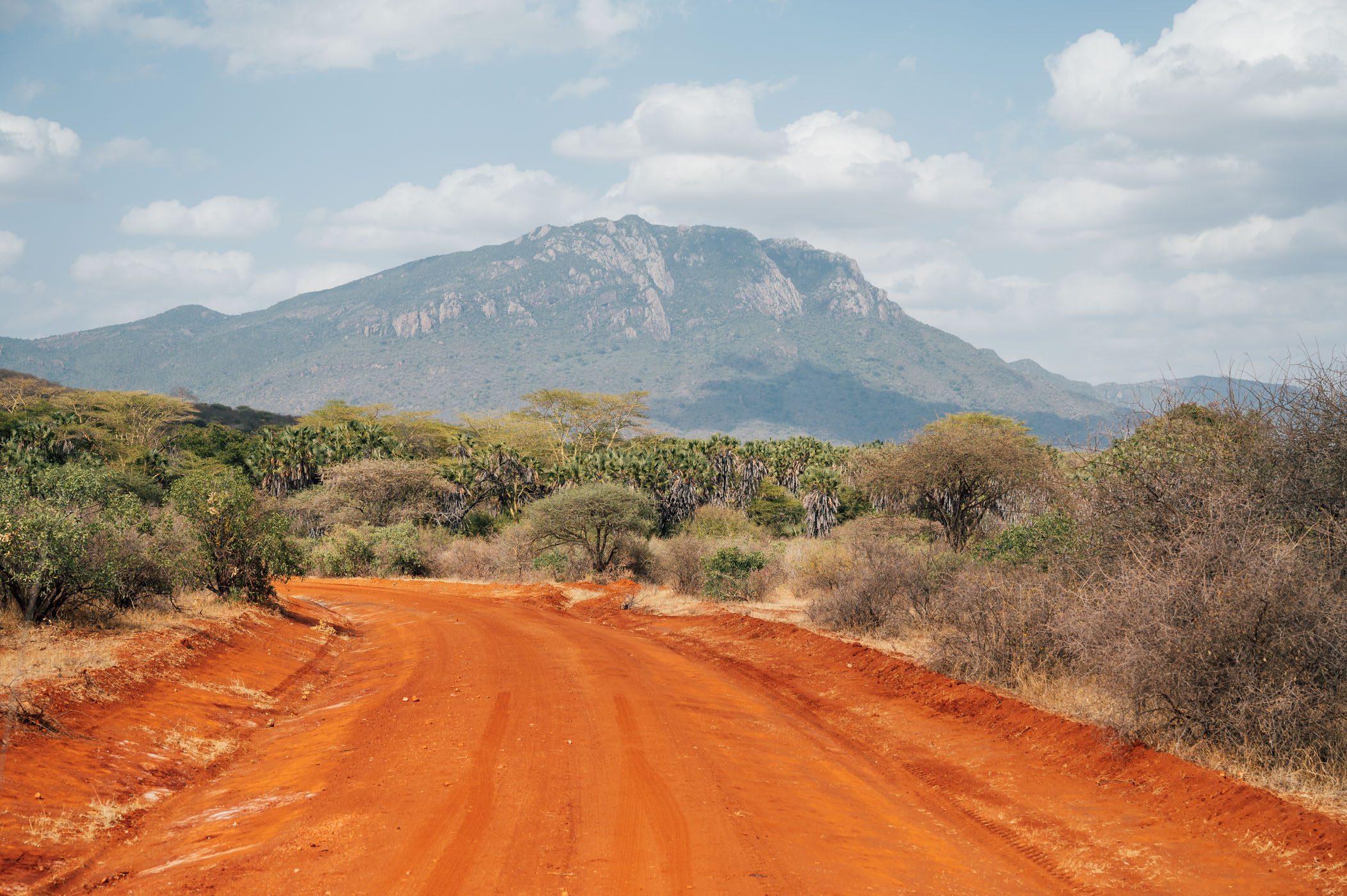
- Kuruwitu / Vipingo (3 nights): The coastline of Kenya has a bit of a mixed reputation (ever heard of the infamous beach boys before?). You might want to avoid their efforts to score a relationship and therefore it’s crucial to choose the right spot. Kuruwitu has a private bay, that is inaccessible for the beach boys, that not everyone is seeking when going on beach holidays. So this is a bit of an insider tip and comes highly recommended! There’s only a handful of villas at the beach, most of them privately owned – so it doesn’t get better than that.
Where to stay: Cardamom House – a Swahili-style beach villa at a private stretch of beach in Kuruwitu, Vipingo
Find out more about Kenya’s beach paradise Kuruwitu here!
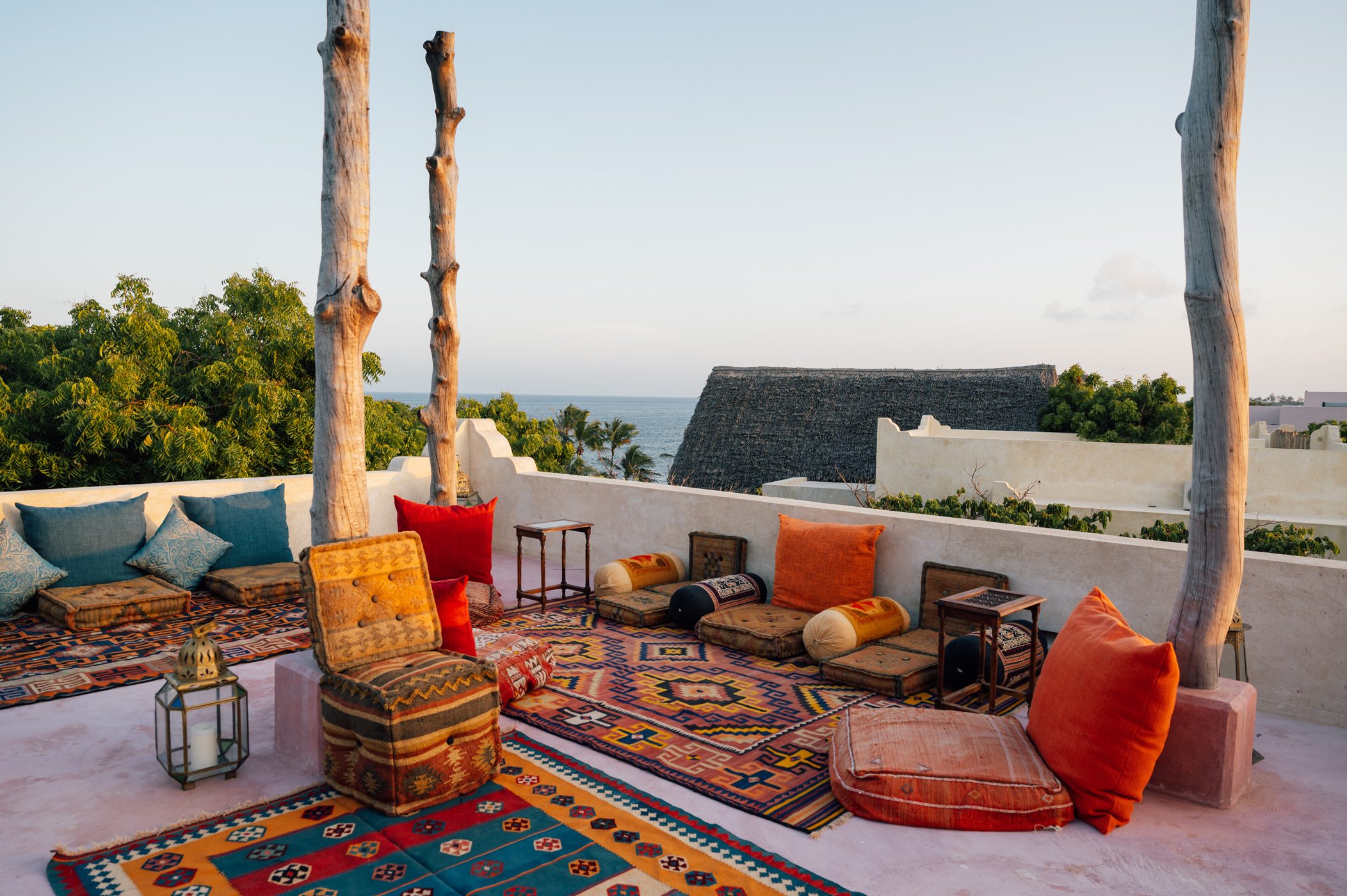
- Nairobi (1 night): To finish our trip we stayed one more night in Nairobi again. This time we didn’t need to get a COVID test anymore to return to Austria, but we still enjoyed one last day in Nairobi National Park before the night flight back home. Another option would be to book yourself a more luxurious stay to end the trip, like The Emakoko or Hemingway’s!
Find out more about other options to stay in Nairobi here!
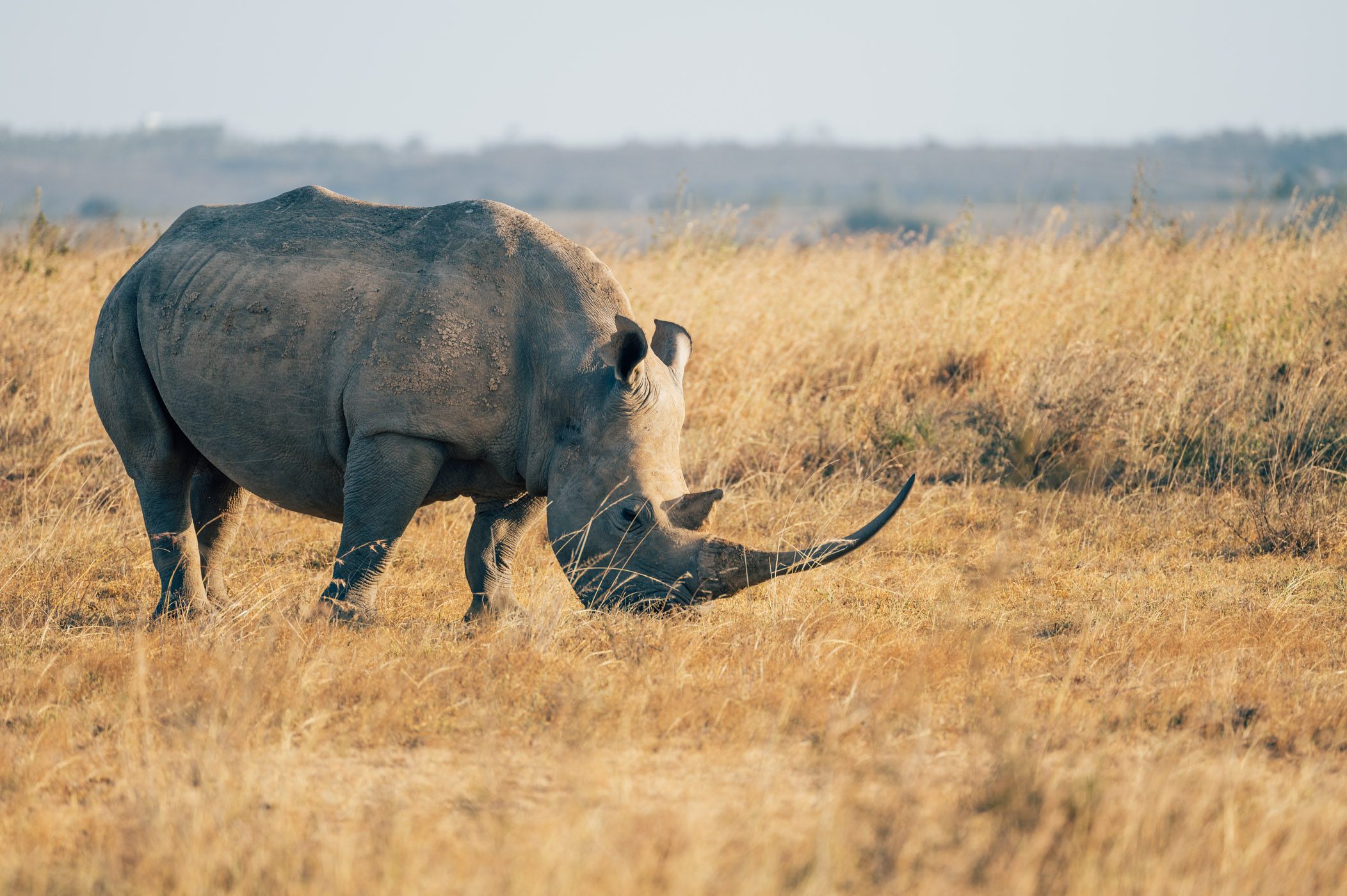
What has changed since 2022 in Kenya?
A year after our first visit the most distinct difference is that tourism is slowly returning after more than two years of battling with COVID-19 travel restrictions. In March 2022 Kenya lifted the test mandate , so for entering the country now you only need a full vaccination – PCR-tests are not required anymore. But please check the regulations before you travel again to make sure you cover any changes!
During our time in the Maasai Mara we also noticed that visitors are returning, the bush planes were full (as opposed to 2021, when we were alone in most of the camps) and at leopard sightings you could easily meet 20 other cars. Outside of the Maasai Mara it’s still rather “empty”. Many lodges have had a higher influx of local Kenyan tourists in the last months, but we were alone in the lodges in Tsavo and at the coast. The bookings for the next months are looking promising though as international travellers are returning now step by step.
One of the reasons why we chose Kenya in 2021 was that the government took COVID-19 really seriously and had put enough measures in place. In March 2022 COVID cases in Kenya were at an all time low, but there were still measures in place, which felt quite reassuring. Masks were still worn in public places, in the planes, there’s hand sanitising stations everywhere and our temperature was checked at several entry points to National Parks for example. Also all the staff members in the lodges and camps were fully vaccinated.
All in all life in Kenya is spent outside, which makes it a safe travel destination – even if COVID-19 isn’t gone yet.
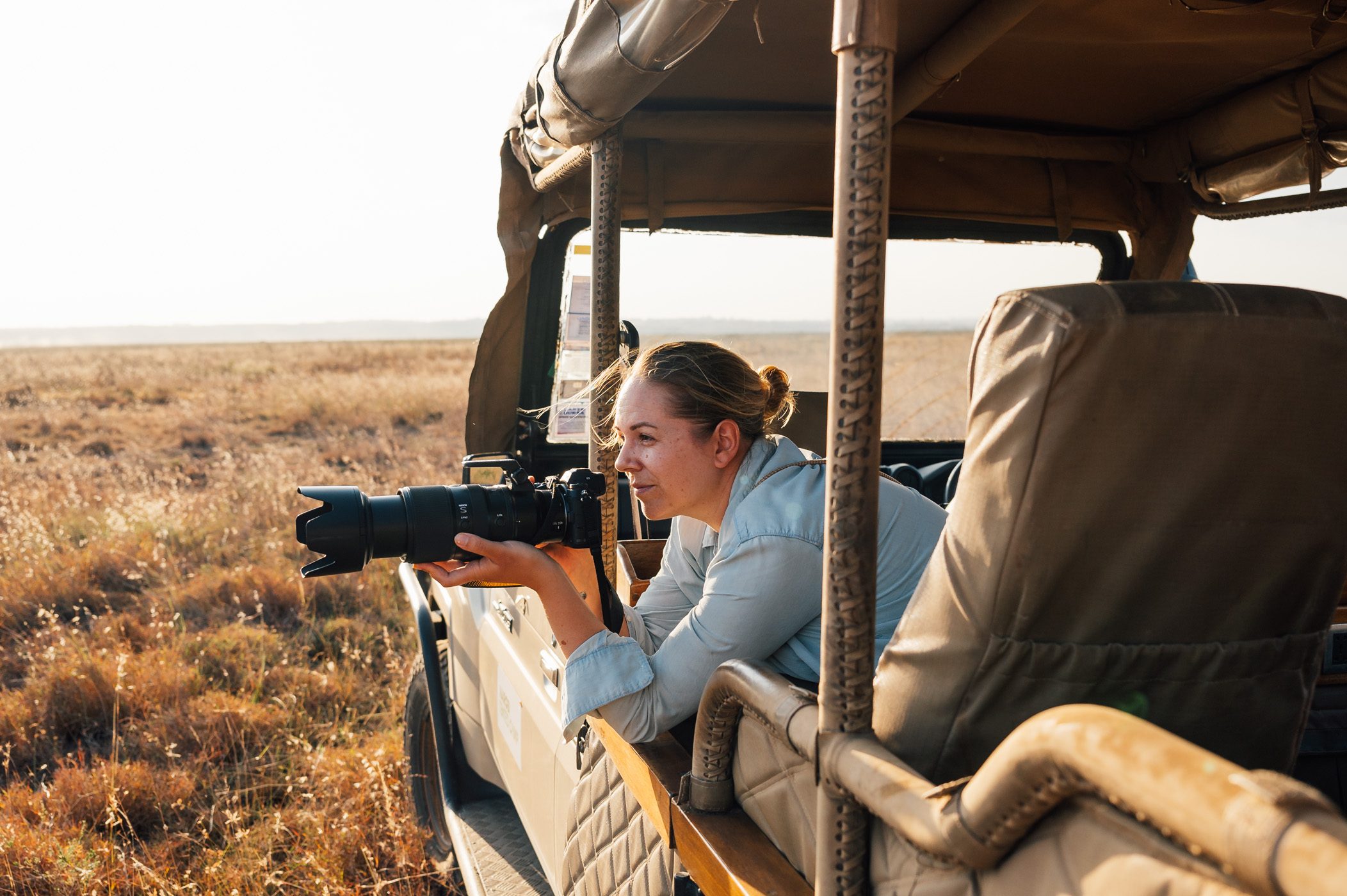
More details about our first Kenya trip
If you’ve now got a taste for Kenya, we recommend you also check out all the locations from our first round trip through Kenya. In 2021 we also travelled around Kenya for 2 weeks with a bit of a different itinerary, focusing on the Maasai Mara and the Northern parts of Kenya with Lewa and Samburuland. Here are all the blogposts and tips from that trip:
- Remote luxury safaris with an abundance of rhinos at the incredible Lewa House
- From camels to helicopter rides and Samburu encounters – the unique Ol Malo Lodge
- Safaris in 1920’s style at the original Cottar’s
- The ultimate in luxury in the Maasai Mara at andBeyond Bateleur Camp
And here’s our full 2 week Kenya itinerary from 2021.
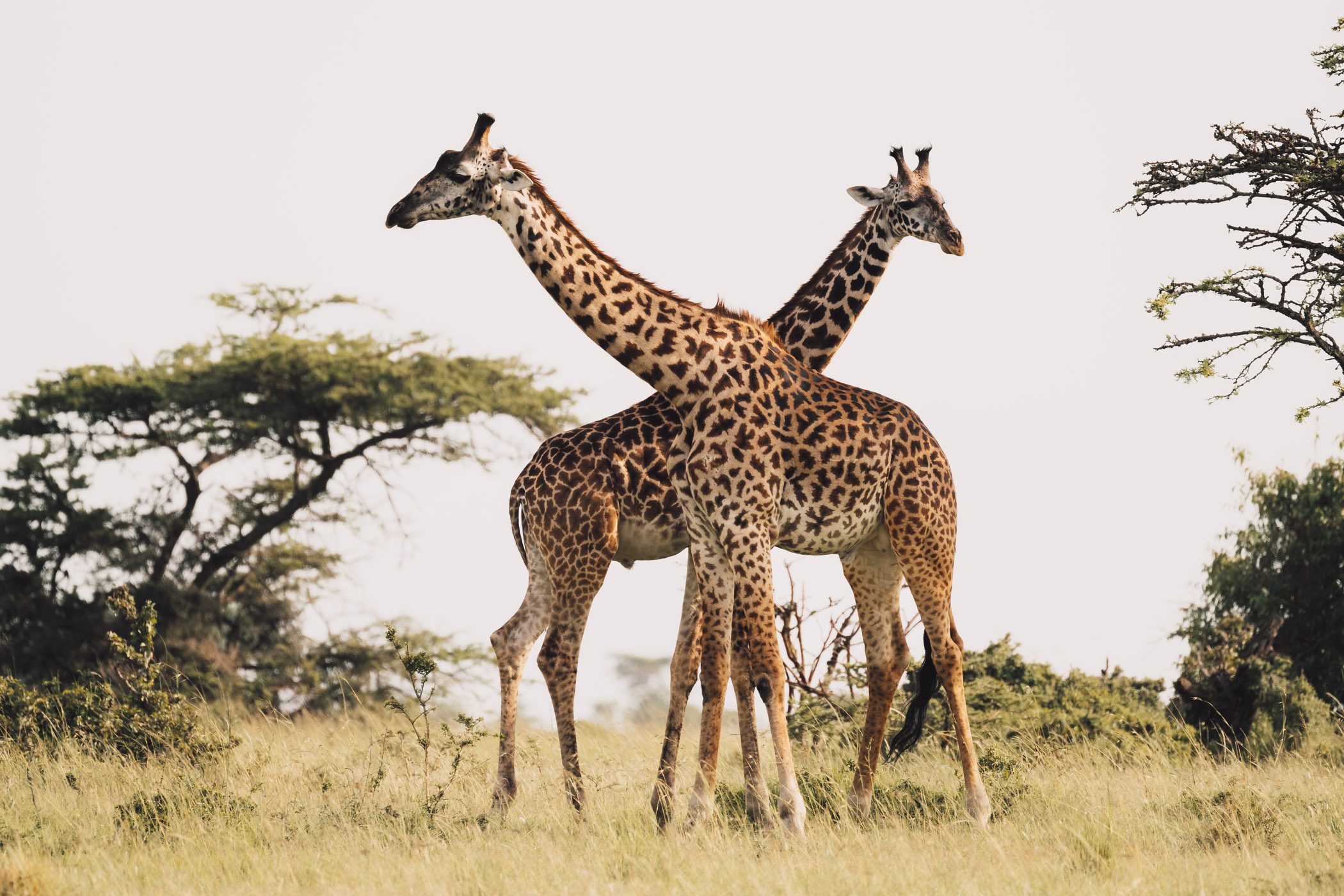
We hope this post included some valuable tips for your Kenya travel plans! Do let us know if you have any further questions.
Interested in a Kenya trip, but not right now? Pin this post post for later:

Disclaimer: This is not a sponsored post, but we stayed in the mentioned safari camps and lodges as part of a press trip in collaboration with Magical Kenya. The views in this blogpost are our own.
Kenya Kenya 2 week itinerary Kenya itinerary Kenya safari and beach itinerary Magical Kenya
More Stories
Destination unknown: a spontaneous trip with bbacksoon.
(Advertorial)
Olimba Mara Camp: Socially conscious safaris in the Maasai Mara
in collaboration with Magical Kenya (Advertisement | Press trip)
Privacy Overview
- How to Use Points for Free Flights
- The Best Carry-On Luggage
- The Ultimate Guide to Traveling Like a Pro
- My Favorite Travel Credit Cards
- lake louise
- new orleans
- new york city
- palm springs
- packing lists
- product reviews
- How to Use Vitamin C Serum
- Easy Step-by-Step Skincare Routine
- Drunk Elephant: Best & Worst Products
- Fitness & Wellness
- How I Edit My Photos for Instagram
- Furniture My Interior Designer Loves
- Best Strapless Bras
- blogging & business
- Amazon Finds
- Hotel Lobby Candle
- Shop My Faves
- Promo Codes and Discounts
- Shop My Instagram

Everything You Need to Know About Planning a Safari

When Matt & I decided we wanted to do a safari this year, I literally didn’t know where to start. We had no idea where in Africa we even wanted to go, how long we should go for, which airport to fly into, which camp to book, what time of year was best, etc etc. I spent hours and hours on research that ultimately left me even more confused. We ended up choosing a safari in Kenya, and it was one of the most memorable experiences we’ve ever had.
Below is a guide that will help you make sense of everything beforehand. It’s something I wish I had when we were planning ours!
HOW TO APPLY FOR A KENYA VISA
US citizens will need to get a Kenyan visa prior to visiting, and you can apply online without having to visit a consulate. Be sure to have a copy of your hotel confirmation and flight info ready, as you’ll need to attach the documents to the online e-visa form. The cost (including a processing fee) is $51 per person.
We checked in on our applications about two weeks later and saw that our visas were approved. You don’t receive anything physical in the mail, so be sure to print out the receipt and confirmation of your approval and have it with you at the airport. We didn’t realize we’d need a print-out, so when immigration asked for it, we were scrambling to pull it up on our phones.
It’s also possible to apply for a visa at the airport when you arrive in Nairobi (and the cost is only $21) but most people prefer to avoid the headache by doing it in advance.

QUICK TIP: Apply for your visa online—it’ll save you the hassle of having to do it at the airport.
Vaccinations for kenya.
One of the most confusing aspects of preparing for the trip was vaccinations. We needed the yellow fever vaccine—but only because we were heading to the Seychelles after Kenya, and the Seychelles requires it for visitors coming from Kenya. We also got malaria pills, antibiotics (to have on hand in case we got sick during Safari), and shots for Hepatitis A&B. Passport Health is a fantastic resource for travel immunization information—the site breaks down every vaccination that’s needed for each country, and can even assist with booking appointments in your area. Best of all, they’ll create an itemized print-out for you to submit to your insurance company for reimbursement.
Quick Tip: Confused about vaccinations? Passport Health makes the process seamless.
What to pack for your safari.
Check out my EXHAUSTIVE safari packing guide here .

Photo: @lindsaysilb
OVERNIGHT IN NAIROBI + GIRAFFE MANOR
Depending on when you arrive, you’ll typically fly into Nairobi and spend the night before heading to your destination first thing the next morning.
Close to the city center and not far from Nairobi airport is Fairmont Norfolk , a historic British colonial hotel that feels like a journey to a bygone era. The accommodations are perfect—rooms are centered around a quaint courtyard, there are Le Labo amenities, and a phenomenal morning breakfast spread. At the bar, musicians play live music, while locals and businesspeople have wine, cocktails, and (surprisingly delicious) tapas. We stayed here and we loved it—plus, they stored our bags for us so we didn’t have to worry about baggage weight requirements for the safari (more on that below.)

If you choose to spend extra time in Nairobi, I would also recommend checking out Hemingways— or you might consider extending your stay at Instagram favorite Giraffe Manor . It’s definitely pricey… rooms at Giraffe Manor typically start at $620 per person, per day (all inclusive) and they’re usually booked out more than six months in advance, but if you have the budget and want a truly once-in-a-lifetime experience, I would absolutely recommend it. Personally I don’t think you need more than one night; two at the most. You can check out their rate sheet here for more details.
Full disclosure: We didn’t plan far enough in advance to book a night, so I emailed them to ask if we could just come by for a meal—I offered to post on my IG feed, pay full price, etc.—and they still said no. Apparently it’s against their policy to allow non-guests onto the property. However, after a lot of begging, they agreed to let us come for tea, but only because I was able to cover their other properties in a magazine. All of this is to say…if you *really* want to go, you’ll have to book a room. It’s an annoying policy, but I get it—it’s their way of preserving the intimacy of the experience for guests that are paying a lot of money to stay there.
TRANSFERRING TO YOUR FLIGHT
After your overnight, you’ll be transferred to Wilson Airport, a smaller, regional airport where most of the safari flights depart from. Bear in mind that the planes are small, so you’ll likely be told to bring only one duffel bag per person that weighs no more than 15 pounds. (Most camps and luxury lodges provide daily laundry service, which helps when you’re forced to pack minimally.) Flight times vary depending on where you’re headed and how many drop-offs the plane makes, but they can be anywhere from 45 minutes to over an hour. In my experience, the 15lb rule wasn’t strictly enforced, but it’s probably not worth taking your chances. (More on this under “FAQ’s”.)
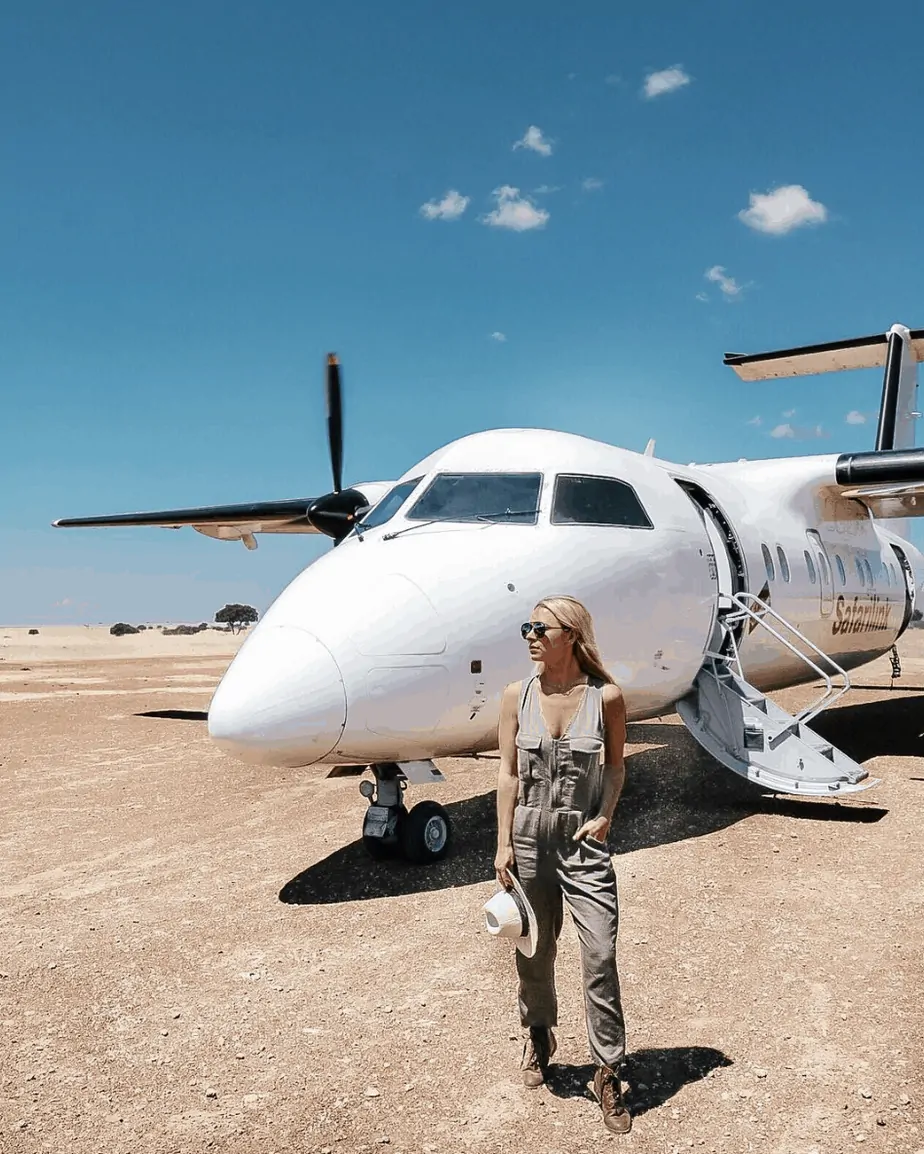
CHOOSING A CAMP + COST
One of the most difficult aspects of planning a safari is choosing which camp to stay at. They truly run the gamut—from posh five-star lodges to rugged tented retreats. In general, properties fall into two categories: lodge-style and tent-style. There are some pretty incredible and luxurious tented camps (& Beyond and Angama are two of the best) but I knew I was more of a lodge person.
I’d heard incredible things about Sanctuary Retreats Olonana , which is where we chose to stay, and it truly exceeded expectations. Rates include everything—food, wine, tours, private guide, spa treatments, daily laundry and even gratuity. They start at $350/night per person and can go as high as $1,000/night per person depending on the time of year. It’s definitely pricey, but I really believe you get what you pay for. (They have full price list on their website here .)
The resort was completely redone in July so everything is brand new. Daily meals take place during specific times and there are set menus, but the property was totally willing to make adjustments according to your personal preferences.
Quick Tip: Decide whether you want a traditional “tented camp” experience, or if you’d be more comfortable in a lodge.

Rooms are stunning (see above – do you die?!) and have every amenity imaginable: Wifi, filtered water bottles, french press coffee, bathrobes, toiletries, and a minibar. The 14 suites are situated on the Mara River, so you’re able to see some pretty crazy things right outside of your window—we watched hippos splash around in the water from the comfort of our bed.
TYPICAL GAME DRIVE SCHEDULE
Upon arrival at the airstrip, we met our guide who would be with us throughout the trip, and did our first game drive for a few hours before sundown that day. The next morning, we went out from 7am – 10am, and then again from 4pm – 7pm. Since it tends to get extremely hot during the day, drives often take place in the morning and before sunset, but full-day drives are also an option for those who prefer it.
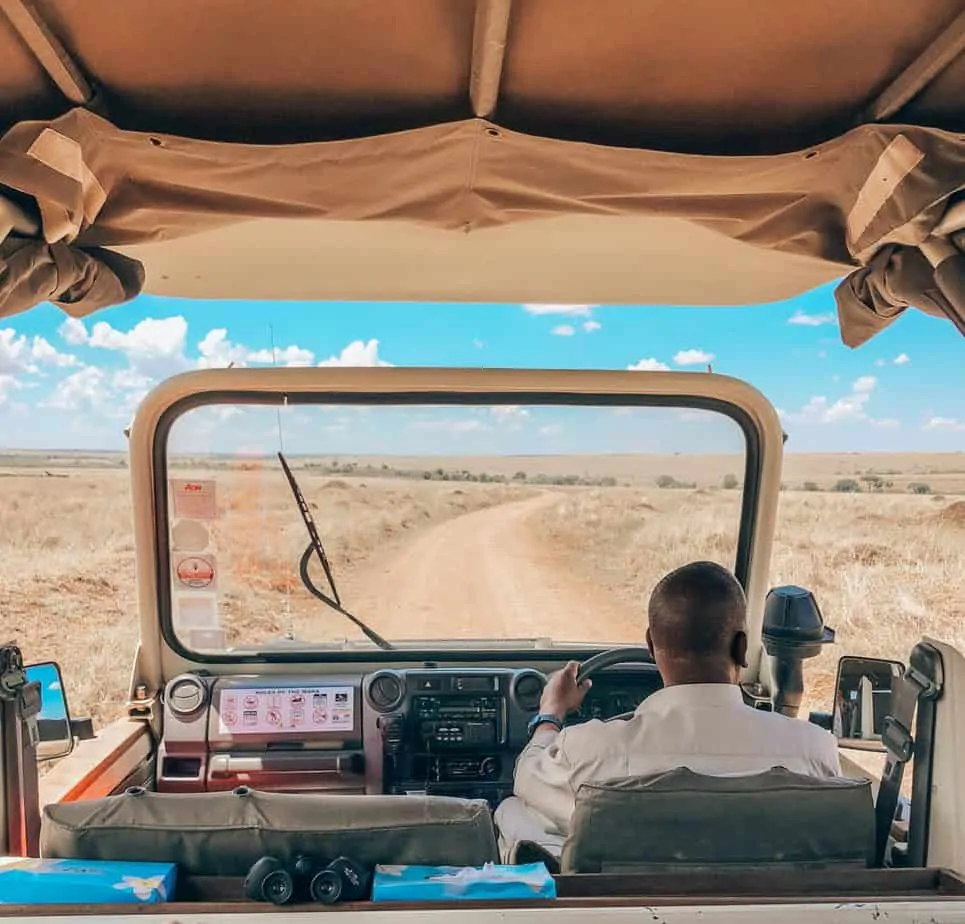
During our downtime, we rested, had leisurely lunches and cocktails, and visited a local school and Masai village nearby, which, to be honest, was possibly my favorite part of the entire trip. (You can learn more about the charity efforts that help support local Masai communities here .) Of course, each camp is different, but the staff at Sanctuary Olonana worked with us to set up activities according to what we were interested in. They also took special requests, like having coffee carafes in the van for the morning drives, beer and wine in a cooler for sunset cocktails, and even a picnic lunch for our last day.
THE WILDLIFE
If you visit during The Great Migration (which descends upon the Mara in July and lasts until October), you can expect to see thousands upon thousands of zebra and wildebeest en route to the Serengeti. Lions, giraffes, hippopotamus, and impalas are also fairly common, while rhinoceros and cheetahs are decidedly more rare to spot. Our guide told us that although certain seasons are rainier others, there truly isn’t a bad time of year for a Kenyan safari.

Quick Tip: Ask your camp/hotel staff what other activities or special arrangements they can arrange beyond safari—like seeing a local school or visiting a nearby village.
What to bring with you for your game drive.
I had a tote packed for each ride with the following items:
- Scarf (it can get cold and dusty)
- Hairbrush (the wind really did a number on my hair & I obviously want to look FRESH for my pics)
- Lipbalm/Chapstick
- External battery & charging cord
- Deet wipes (these came highly recommended – in a resealable pack. Only got bit once)
- Bottle of water
- Powder sunscreen (to reapply to my face; I hate putting liquid sunscreen on top of makeup)
- Jacket (for early in the morning and after the sun went down)

SAFARI FAQ’s:
Q: do you recommend using a travel agent or tour operator.
A: 100%. There are so many moving parts and logistics (with flights, baggage rules, locations, etc) that it’s almost impossible to figure everything out on your own—throughout our safari, Matt & I kept saying “thank GOD we didn’t try to do this ourselves.” We used Abercrombie & Kent, a company that I’d worked with before through Town & Country . (They have a team that specializes in Africa, and Kenya more specifically.) They were incredible and answered all of our questions + came up with a loose itinerary within 24 hours of our call.
Q: Is the baggage weight requirement for real?
A: They didn’t weigh our bags when we checked in, but that’s probably because we only had duffels with us—we left our other luggage at the hotel. Even if your hotel doesn’t offer it, t he airports have luggage storage facilities for your extra stuff. I know it seems impossible to keep it to 15 pounds, but it honestly wasn’t as bad as I thought it would be!
Q: How many days do you recommend?
A: My advice is to think long and hard about how many days you’ll actually need for your safari. I had initially assumed we’d want at least 5 days, but our travel agent insisted that 3-4 days would be plenty. She was right. What I didn’t realize is that while the game drives are incredible, they can also be extremely long, hot, and exhausting—we spent around 6-8 hours a day driving through the desert. Our experience was AMAZING, but by the last day of our trip, I felt like it had been the perfect amount of time.
Q: Would you recommend going on safari for a honeymoon?
A: My answer is unequivocally yes. I have a lot of thoughts about honeymoons (you can check out my guide to honeymoon planning here ) but I do think a safari is one of the most surreal, once-in-a-lifetime experiences that is wildly cool to have as a newly married couple. My ONLY caveat is that you should pair the safari with a second, more relaxing destination. Going on safari isn’t what I would call leisurely—it requires waking up at 6am and long afternoons in the heat. In an ideal scenario, I’d suggest starting your honeymoon with a safari and ending with a relaxing beach destination. Popular combinations include Krueger National Park in South Africa + Cape Town + Winelands; Kenya + Seychelles; Tanzania + Mozambique; Sri Lanka + Maldives.
You Also Might Like

What to Wear On a Safari: Safari Outfit Ideas & Inspo
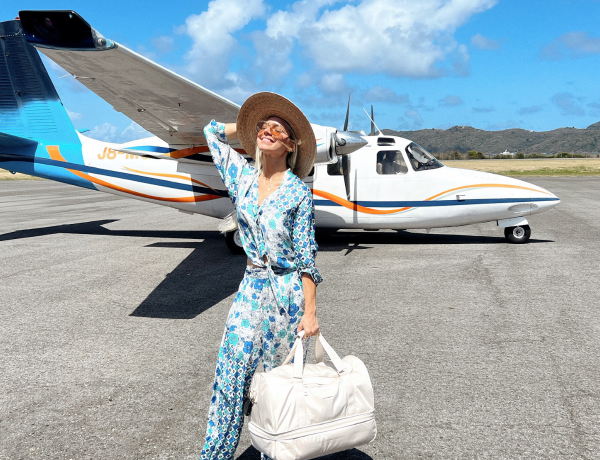
What To Wear For a Passport Photo

The Best Things to Do in Palm Beach: An Insider’s Guide
Kathy Vayda
Thank you for all the information! We are in the middle of planning our Kenya trip next December over the busy holiday season! Looking forward to rereading this and rereading this until it stays in my head. And making sure my girls do as well. All your pictures are stunning…I better start planning although won’t come close to what you have posted! Thanks for all the help!! Kathy
Lindsay Silberman
So glad you found it helpful! It’s going to be such an amazingly memorable trip for you and your family!
Ana Katrina Lopez
Hi Lindsay! Just wanted to say I enjoyed reading your blog post. And definitely learned a lot of useful advice for a Kenya safari as well as styling ideas for when I do go there. I’m definitely going to be referring to your post for when I plan and prepare for my own safari adventure. I can only hope to have the same memorable exciting experience as you! I heard there’s a lot of wildlife action and scenic views to see in Kenya as well as a cultural side as well. Did you get to explore the tribes in the area?
so glad to hear that!!
Robyn Henry
Hi Linsday,
Thank you for creating such a well designed article.
I would love to know how you would describe the Secluded Africa lodge experience in Kenya or South Africa. With a diverse focus on conservation, cultures and communities while simultaneously offering every accommodation type, it offers something for every traveler.
I do hope we have the chance to discuss.
Safe travels, Robyn
Hi- this is so helpful! Would love to go on safari, with of course the relaxing trip afterwards! Curious, and I’m sure things have changed some, but what is the ballpark price for this sort of vacation? I know we can’t do super luxurious, but definitely want nice. Truly clueless!
thanks for the great info – do you recommend simply using a newer I-phone for photos while on safari- or purchasing a DLR camera with an extended lens?
I think it totally depends how serious you are about photography! I personally would just do iPhone because I don’t have the patience to go through hundreds of photos shot on a camera, but i totally understand that other people might not mind!
Leave a Reply Cancel Reply
Save my name, email, and website in this browser for the next time I comment.
I'm Doing a Meet & Greet in NYC...And You're Invited
That time i threw a frette pajama party at the st. regis.

A Guide to Planning an African Safari in Kenya
Written by dynie sanderson, africa | luxury travel | travel.
An African safari is the dream of a lifetime. Ensure it’s the best experience by reading our guide to planning an African safari.
Planning a 7-day safari in Kenya and choosing a safari outfitter was an exhilarating and meticulous process involving carefully considering various factors. To begin with, we had to decide on the ideal time of year for our adventure, considering the migration patterns of wildlife and the climate.
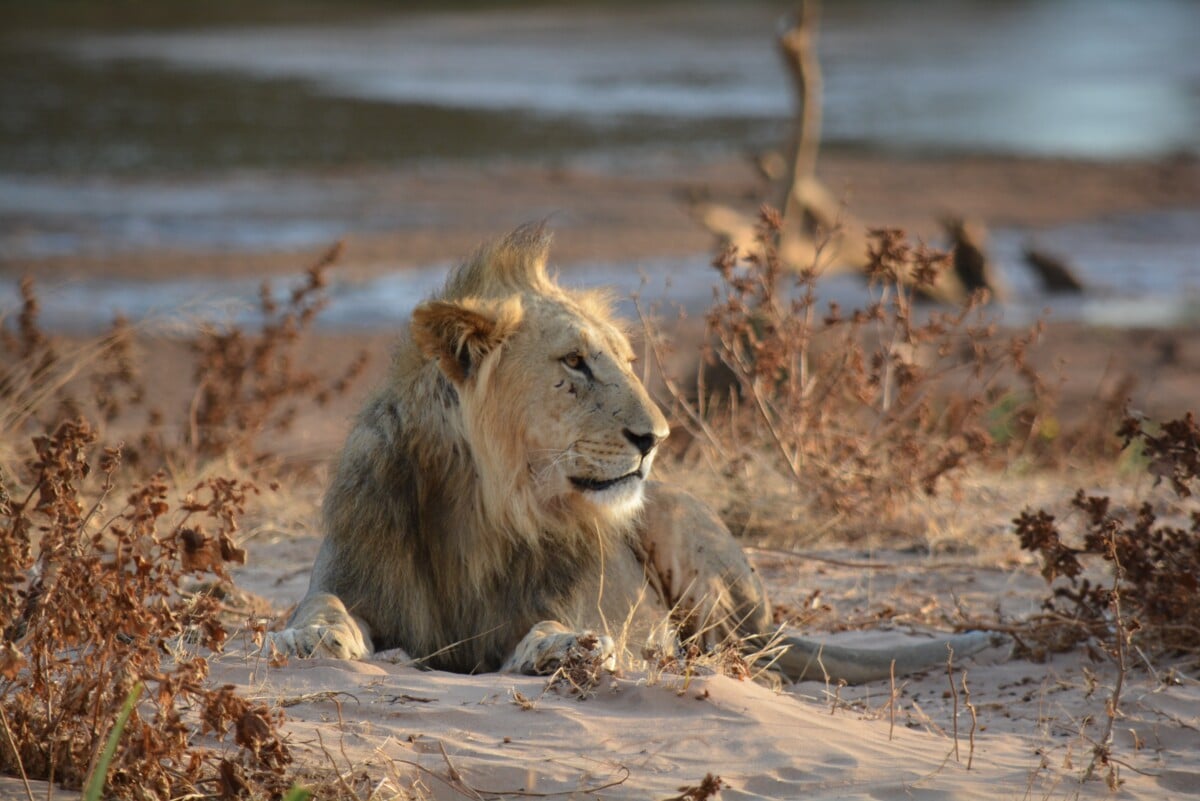
Lion in Samburu National Reserve. Photo by Dana Sanderson
After settling on the perfect season, under the guidance of our chosen safari outfitter, Safari Herd Holidays , we had to select the national parks, conservancies, and reserves we were interested in visiting as each offers unique wildlife and landscapes. The types of accommodations we would be staying in and how many days we were comfortable trekking in the wild were also factors.

Wildebeest Migration Masai Mara National Reserve. Photo © Giancarlo Bisone
An African safari is the adventure of a lifetime, promising unforgettable moments in the wild and the chance to witness Africa’s magnificent wildlife. However, a successful safari requires meticulous planning and choosing the right safari outfitter. In this guide, we’ll explore the process of planning an African safari and selecting a safari outfitter, focusing on Kenya, as this was our destination of choice.

Samburu National Reserve. Photo courtesy of Safari Herd Holidays
What's in This Article:
When to Start Planning
Choosing your safari destination should be at the top of your list in your planning process. The timing of your safari planning is crucial to securing the best options. While there is no fixed rule, planning at least a year in advance is advisable, especially if you intend to travel during the peak season.
Initial Research on Selecting a Safari Destination
Selecting the right safari destination is the first crucial step in planning your African adventure. Africa is a vast continent with numerous countries offering diverse wildlife experiences.

Sunrise in Masai Mara. Photo by Dynie Sanderson
Africa boasts 54 countries, but not all are known for their wildlife safaris. These nine countries are renowned as prime safari destinations:
- South Africa
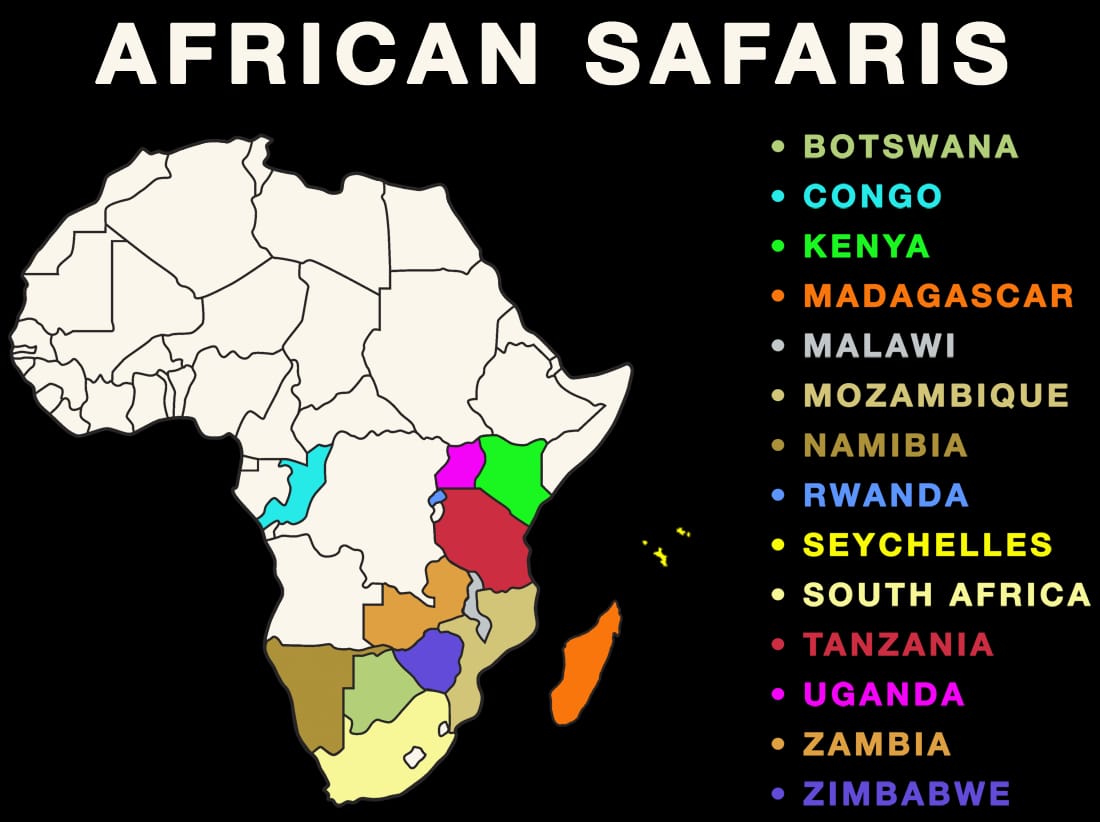
Safari Map. Photo courtesy Safari Herd
Among these countries, Kenya, South Africa, and Namibia are often considered the more affordable options for safari enthusiasts.

Giraffes in Kenya. Photo Photo © Giancarlo Bisone
Conduct Research
Begin by conducting thorough research to understand the different safari destinations and what they offer. Dive into travel books, websites, YouTube videos, and social media to gather information.

Seek Recommendations from Fellow Safari Adventurers
Reach out to friends, colleagues, or fellow travelers who have embarked on similar African safari journeys. Their insights and recommendations on where to go and what to do can be invaluable.
Consider Your Budget
Determine your budget for the entire trip, including flights, accommodations, safari packages, and other expenses. Keep in mind that some countries are more budget-friendly than others.
Choose a Safari Outfitter
Begin to research safari outfitters a year ahead to gain a comprehensive understanding of your options. There are so many safari outfitters that it can be daunting to pick the safari planner for your specific travel desire, dates, and budget.
Your safari planner can take it from there if you have already chosen your safari destination and dates. Or if you are not quite sure of which safari location to choose, your outfitter can also make recommendations. You will find them helpful in guiding you to set up the perfect itinerary. Most safari companies have a wide selection of options for different safaris, styles, and pricing all over Africa. You can go with one of their set safari packages or have them personalize it for you, which is what we ultimately did with Safari Herd Holidays.
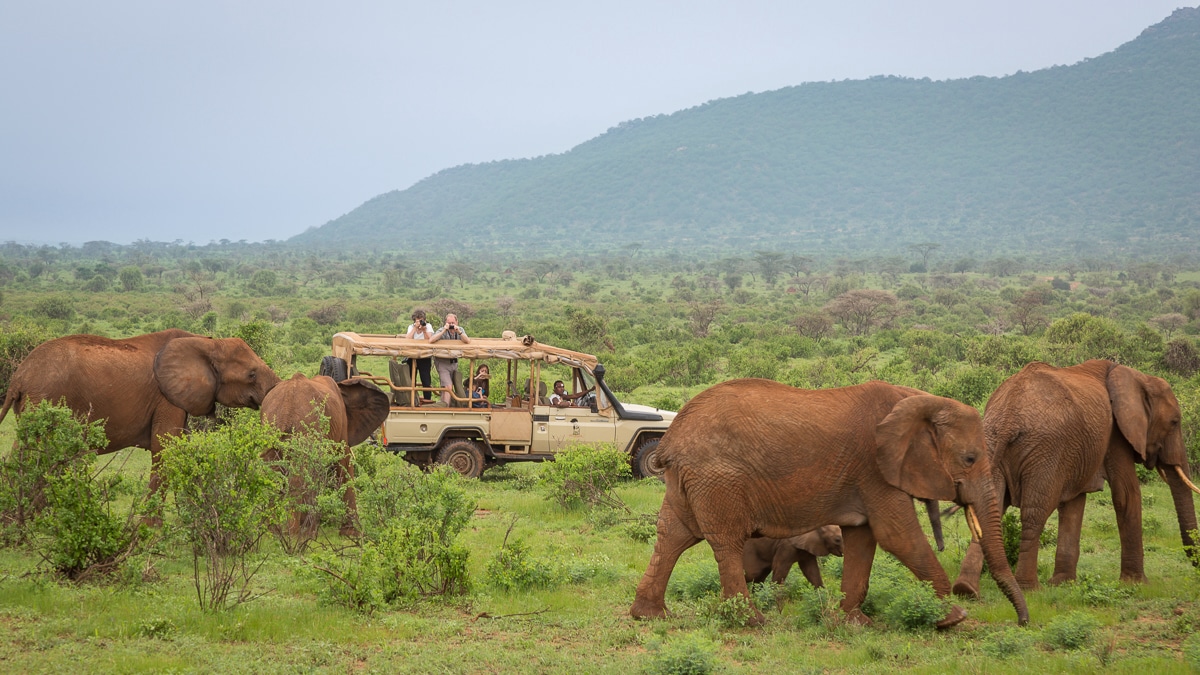
Samburu National Reserve. Photo courtesy of Safari Herd
These were important steps for us in the process:
- Conduct Extensive Research . Begin by researching safari companies that operate in your chosen destination for your African adventures. Seek recommendations and read reviews to gauge their reputation and offerings. Look at the various packages the different operators offer, as it will give you a better idea of what they can customize for you.
- Amenities and Inclusion . Determine the amenities and services included in the safari packages. Most safaris typically include transportation, accommodations, guided tours, game drives, meals, and some beverages. Extras like balloon rides, spa treatments, premium wines and liquors, and tips are usually not covered.
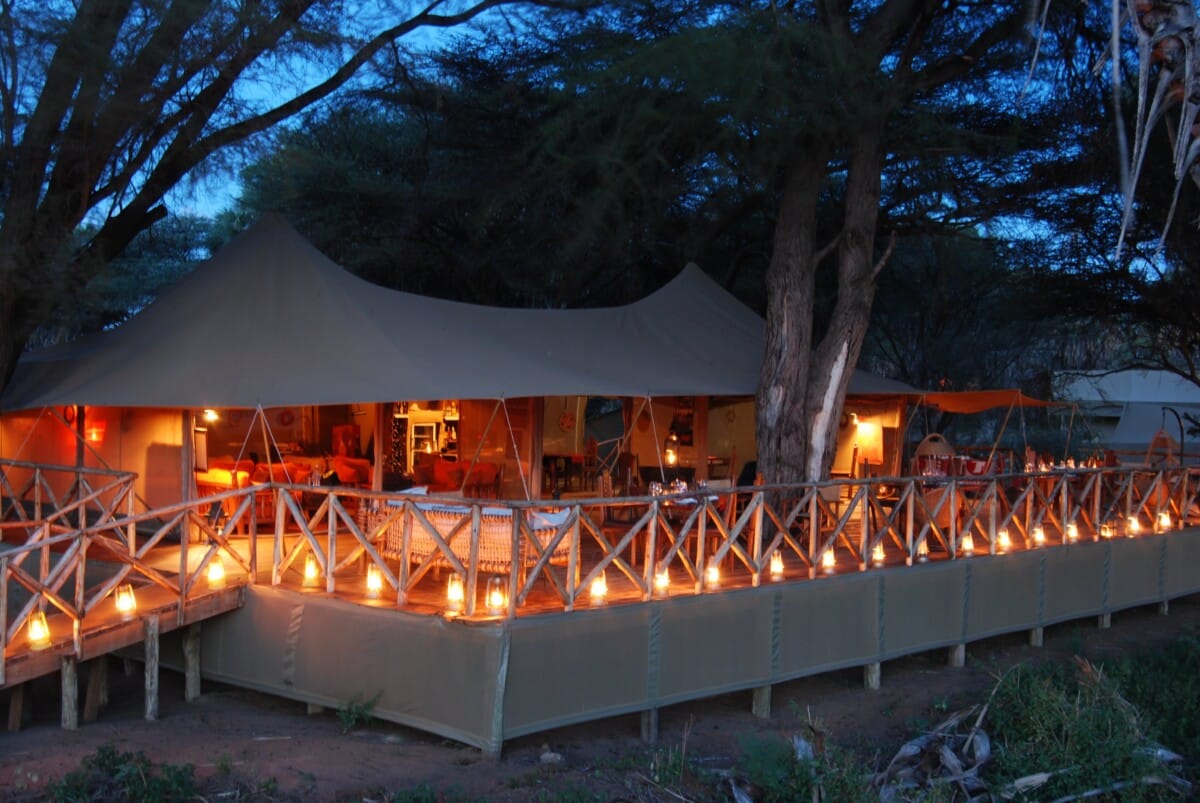
Main Lodge Elephant Bedroom Camp Samburu National Reserve. Photo courtesy of Safari Herd
- Flight Logistics . Consider your flight logistics and how they align with your safari plans. Ensure you have your flights secured before finalizing your safari dates.
- Customization . Work closely with the safari outfitter to customize your safari experience based on your preferences and budget.
- Budget Considerations . Establish your budget and choose a safari outfitter that offers a package that aligns with your financial plans.
- Destination Expertise . Opt for a safari outfitter with extensive knowledge of your chosen destination. They should help you create an itinerary that maximizes your wildlife encounters.
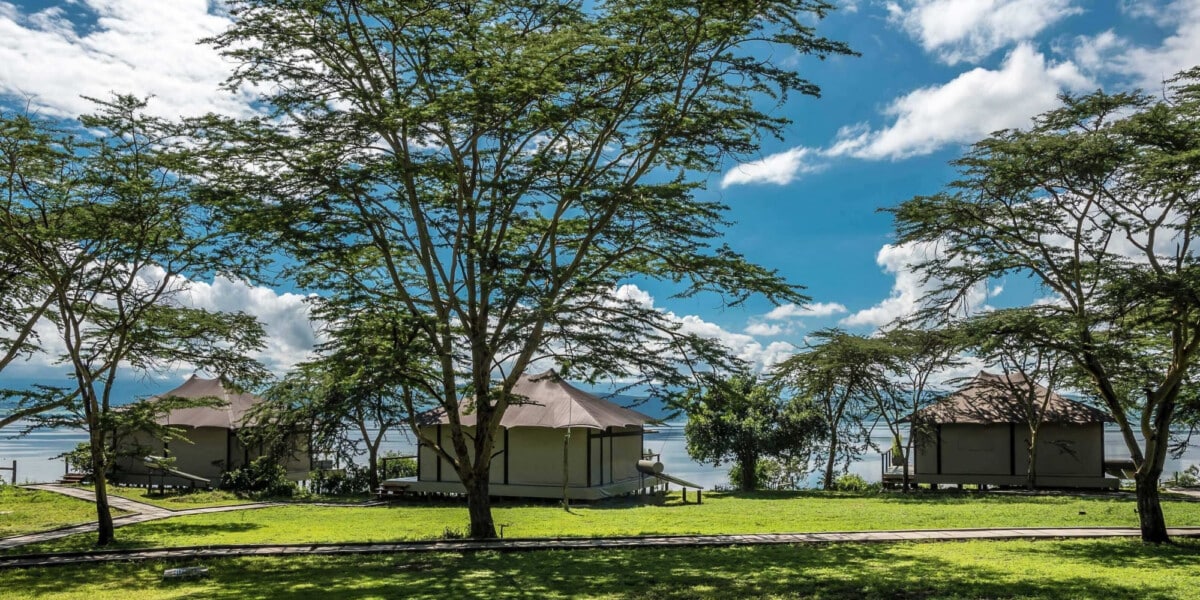
The Cliff Lake Nakuru Camp. Photo courtesy Safari Herd
Wildlife Sightings in Kenya Were a Big Part of Our Choice
After extensive research on the numerous safari regions available in Africa, we settled on Kenya as our safari destination. Kenya offers an array of diverse landscapes, incredible wildlife, and convenient access through Nairobi, the capital city. Choosing your destination will also help you to narrow down your options when selecting a safari outfitter. Safari Herd Holidays offers several safari selections in Kenya .
Kenya is the origin of safaris and will likely deliver some of the best African safaris. The standards of service are high and range from lavish luxury, colonial lodges, contemporary boutique hotels, and authentic tented camps. Masai Mara is a top pick as it provides an abundance of wildlife, such as the Mara’s Big Five—lion, leopard, rhinoceros, elephant, and African buffalo.
The Masai Mara National Reserve and Samburu National Reserve in Kenya are known for their large populations of big cats, hippos, the rare black rhino, elephants, zebra, giraffes, and spotted hyenas. The abundance of wildlife led us to choose Kenya as our destination.
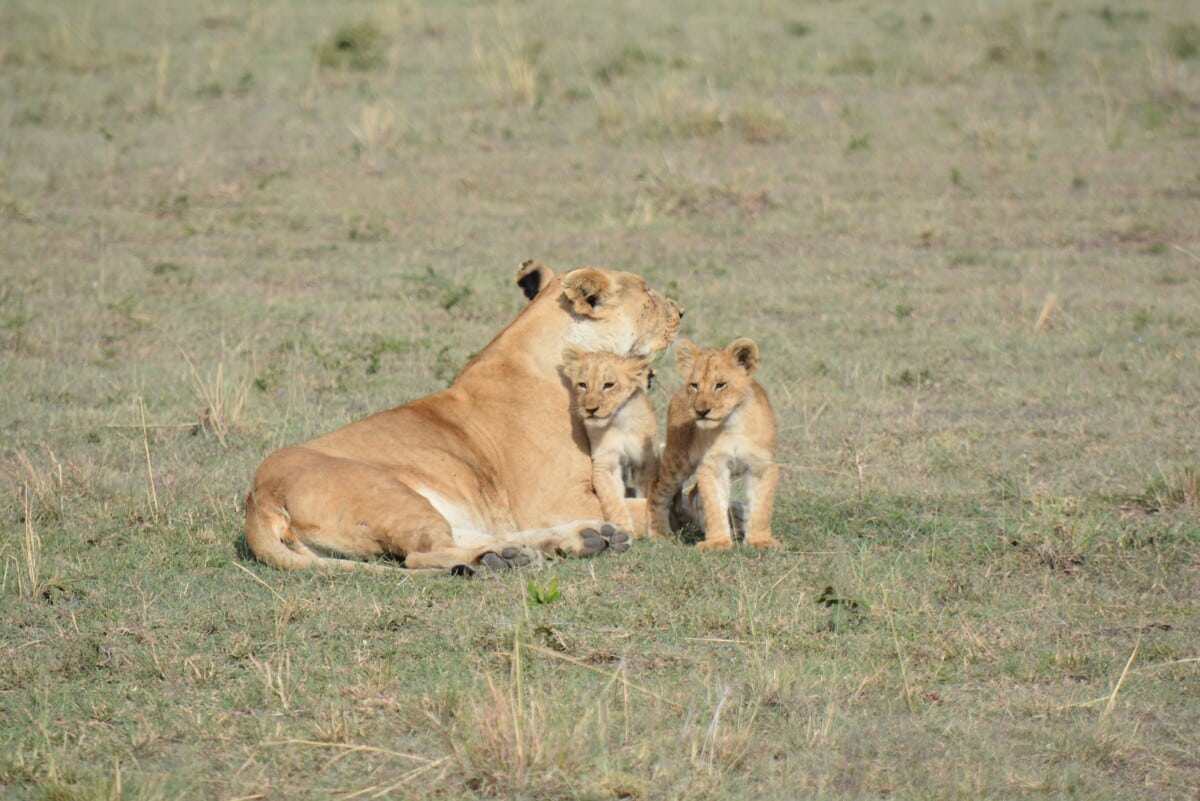
Lioness and her cubs in Masai Mara. Photo by Dynie Sanderson
Locking in Your Destination and Travel Dates
Once you have your destination and your outfitter, it’s time to lock in your travel dates and make final arrangements.
Safari Season Dates
Our first step was to determine the best time to travel. When did we want to travel, and when are the best months to go on safari? What is the high season, and what is the low season in Kenya?
High or Peak Season runs from May to September. The weather is colder and drier during the peak season. You will find the highest rates during that time and must book at least a year in advance.
The Low or Green Season runs from March to June and October to December. During those dates, it will be a bit hotter, and there will usually be more precipitation.
The best time for a safari in Kenya is September to October and late December to February. The best weather is in February and September, while the worst is in April and May. Some lodges close down in high rainfall areas.

Black rhinoceros in the Samburu National Reserve. Photo courtesy Safari Herd Holidays
Flight Bookings
Book your flights as early as possible to secure the best availability, particularly if you plan to use frequent flyer miles. If you plan to use airline miles, book at least nine months out, as there are limited award travel options, particularly if you want to travel in business class. Check with your safari outfitter, as they may have international travel packages.
Inter-Africa Travel
Also, if you plan on traveling to other countries while you are in Africa, most safari companies offer to set up your inter-Africa air travel for you. As we were also traveling to Victoria Falls and Cape Town, South Africa, our travel coordinator made these flight arrangements for us well in advance to secure our spots.
International Flights into Africa
Once your International flights are confirmed, choose the beginning of your safari dates based on the day of your arrival in Africa. If you travel long distances from the United States, take a day or two to explore Nairobi, Kenya, for example, before commencing your safari sojourn. The days out on safari can be long and grueling, as you may go on several safari treks daily. The last thing you want to do is start your safari adventure exhausted and jet-lagged.
Our Kenya Safari with Safari Herd Holidays
Safari Herd’s flexibility and attention to detail were key factors in our decision-making process. Their safari expert’s communication provided extensive safari particulars and personalized touches and presented an excellent experience.
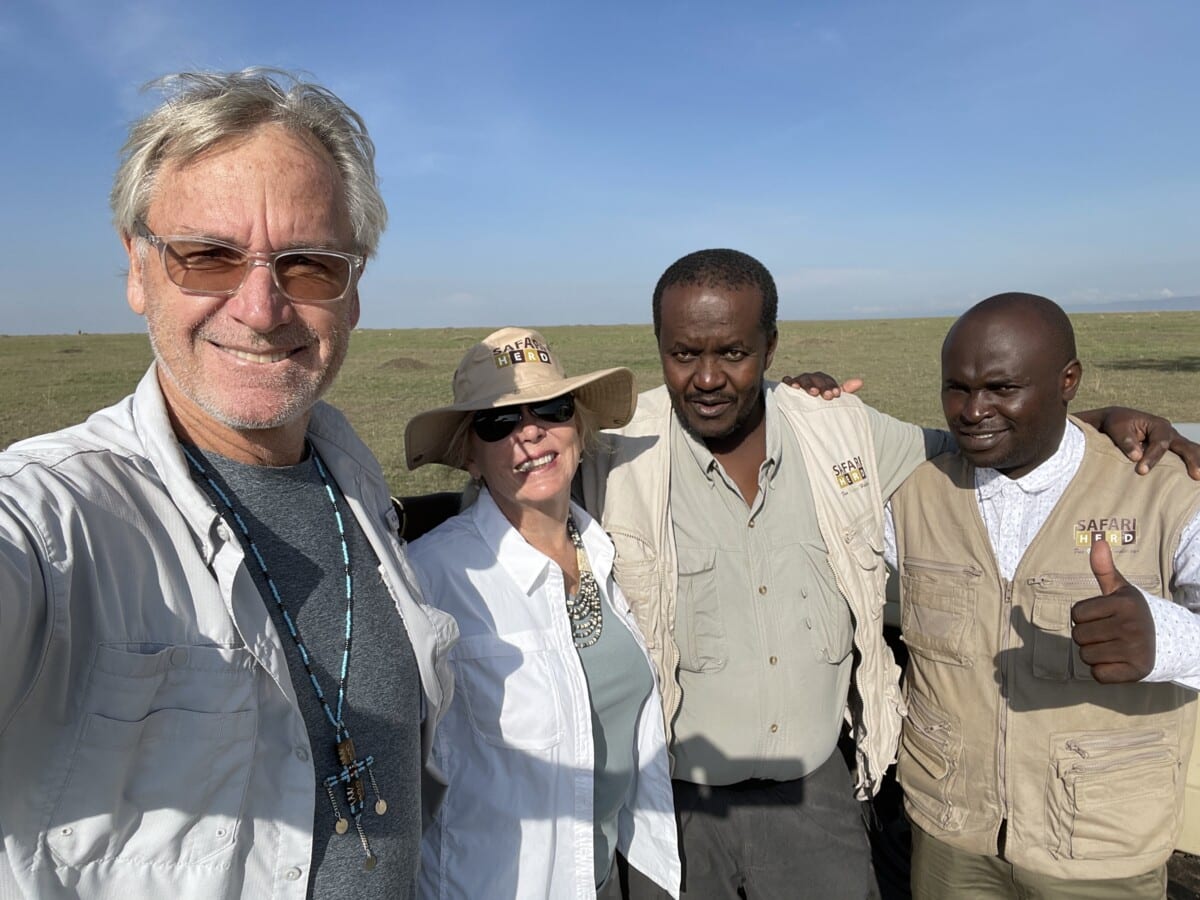
Exploring the Masai Mara with our team from Safari Herd Holidays. Photo by Dana Sanderson
Here are some additional tips to help you choose the right safari outfitter:
- Compile a List . Begin by compiling a list of potential safari outfitters based on your research, recommendations, and reviews.
- Read Reviews . Thoroughly read testimonials and reviews from previous clients to gain insights into the outfitter’s performance.
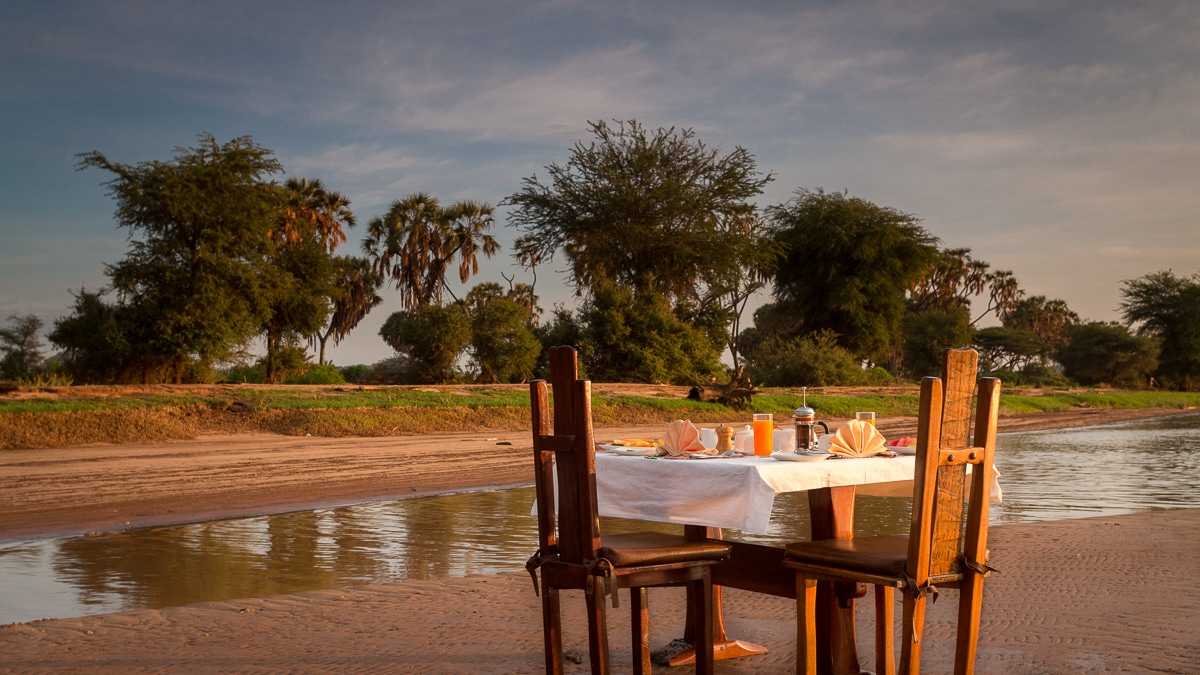
Elephant Bedroom Camp – Samburu National Reserve Courtesy of Safari Herd

The Cliff Lake Nakuru Camp Luxury Tent Courtesy of Safari Herd
- Destination Knowledge . Opting for an outfitter with in-depth knowledge of your chosen destination and knowledgeable, experienced guides is essential. They should be well-versed in the region’s wildlife, culture, and unique experiences.
- Booking Logistics . Evaluate the booking process, including payment terms, cancellation policies, and flexibility in customizing your itinerary.
Preparing to Depart for Your African Safari
Once you have your trip booked, there are several things you need to do before departing on your African safari. Here are the most essential ones:
- Packing and Attire . Pay close attention to the outfitter’s recommended packing list and attire. These may vary based on your destination, the time of year, and other factors.
- Incidental Costs . Discuss incidental costs, such as tips and additional activities, with your outfitter to clearly understand your overall expenses. Nobody likes surprises.
Articles Related to Planning an African Safari
- What You Need to Know for Planning a Hot Air Balloon Safari in Kenya
- On Safari in Zambia: The Bush in Photos
- Up Close and Personal with a Leopard in Zambia
- Best Places to Visit in Tanzania
Embarking on Your Dream African Safari
Planning an African safari is an exhilarating journey that involves careful consideration of your destination, itinerary, and safari outfitter. Kenya is a remarkable safari adventure choice with its diverse landscapes and abundant wildlife.
Starting your planning process well in advance, staying informed about your destination, and selecting a safari outfitter that aligns with your preferences are essential steps in ensuring a memorable and fulfilling safari experience. With meticulous planning and the right outfitter by your side, you can embark on your dream African safari adventure in Kenya with confidence, excitement, and anticipation of unforgettable memories.

Elephants in Kenya. Photo © Giancarlo Bisone
We invite you to explore Wander With Wonder for more of our favorite destinations across the African continent .

Outdoor Activities | Outdoor Adventures | Safari
You may also like….

Mastering the Art of Gift Selection: A Comprehensive Guide
by EJ Ray | Apr 15, 2024 | Bring Travel Home , Travel
Having trouble choosing the right gift? Selecting meaningful gifts is an art. This comprehensive guide to gift...

Best Supplements to Help Boost Your Immune System When You Travel
by EJ Ray | Apr 13, 2024 | Travel , Travel News , Travel Tips
Read on to learn more about the best supplements to boost your immune system when you travel—and every day!...
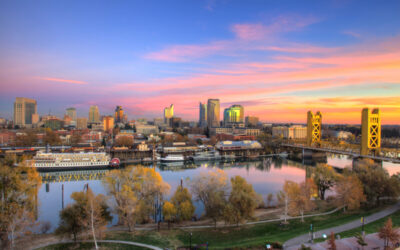
What to Do and Where to Go if You’re Visiting Sacramento
by EJ Ray | Apr 10, 2024 | California , Destinations , North America , Travel , United States
Sacramento offers a captivating history, beautiful outdoor landscapes, a vibrant arts scene, and locally sourced...
Submit a Comment Cancel reply
Your email address will not be published. Required fields are marked *
Submit Comment
Subscribe To Our Newsletter
Sign up for our newsletter to get the latest food, wine & travel updates! We look forward to having you Wander with us.
You have Successfully Subscribed!

- South Korea
- Indonesia (Bali)
- Central Asia
- African Safari
- South Africa
- Itinerary Ideas
How to Plan a Thrilling Safari Trip to Kenya
Kenya will abolish visa requirements for global visitors starting in January 2024, guaranteeing a smooth and expedited entry process.
Africa's awesome wildlife has always been a top draw for adventure seekers. So, you may be dreaming of a once-in-a-lifetime safari adventure to behold the majestic wildlife in Kenya.
However, planning such a trip, particularly for first-timers or families, can be overwhelming due to the number of available options and making the best of the weather conditions.
Our experience and knowledge of safaris across Africa could provide helpful insights into making your important trip decisions. Whether you are planning a family trip , an anniversary celebration , or fulfilling a bucket list journey , our article offers solutions tailored to all types of adventures.
The Best Time to Travel to Kenya for a Safari Trip
The best time to visit Kenya weather-wise is during its dry seasons : from July to October and from January to March.
During these periods, the weather is warm during the day and cool at night. Animals are easy to spot as they gather around waterholes. There is also no vegetation to obstruct your views.
You may worry about the crowds . It is true that this period is the high travel season and there are many crowds in the parks, but a skillful driver and guide would help you to avoid crowding wherever possible. If you really hate crowds, we suggest that you avoid the period from July to September as this is the busiest travel time.
If you care more about the travel price , you could travel in the rainy season from March to May. It is the low travel season and you can get great discounts on lodges. However, for a safari trip during the rainy season, you'd need quite a bit of patience and flexibility. Disruptions and changes of plan are possible, such as roads in the park becoming impassible due to floods and mud.
We can tailor a Kenyan itinerary for you based on your schedule , enabling you to experience the best of Kenya's wildlife.
We have more detailed travel advice on the Best Time to Visit Kenya
Choosing the Right Safari Parks
You may have heard about the Maasai Mara National Reserve, however, it may not be the best choice for you if you prefer a quiet safari experience...
There are numerous private reserves and public national parks in Kenya. Here are our recommendations to tailor your safari experience, depending on your personal interests, your travel budget, the length of your itinerary, and who are you traveling with.
- Maasai Mara National Reserve
If you want to see the Great Migration and the most animals or the Big Five , Maasai Mara is your best choice (from July to October).
This national park has the densest concentration of animals. Each year from July to October, millions of wildebeest, zebra, and gazelle travel across Maasai Mara.
Maasai Mara is the premier park for you to have a hot-air balloon safari . Watching millions of animals grazing below, you are a king surveying your domain. Watching millions of animals grazing below, you would be like an eagle surveying your domain.
Maasai Mara is the only park in Kenya where you may spot all of the big five in a single day. Having a skillful driver is very helpful to lead you to find them as he would know where the animals appear. The chances of you seeing them in Mara are still far less than in Kruger National Park in South Africa though.
Please be aware that Maasai Mara is the most crowded park in Kenya , especially during the migration period from July to October. Lodges and camps are the most expensive and can be fully booked early. We recommend that you book at least 6 months in advance to ensure a suitable lodge of your choice.
You should also know that as Maasai Mara is very big, there may be long drives along the tracks to search for the animals you are looking for.
Amboseli National Park
If your time is tight and you want a simple safari , Amboseli is your best choice. The park is small, being about one-fifth the size of Maasai Mara. It is close to Nairobi and easy to access, which makes it great for short trips.
There, you will see herds of elephants in groups of 20 or 30, and thousands of flamingoes flying around and dancing in the air. If you are lucky enough, you can catch sight of Mount Kilimanjaro.
However, the amount of wildlife in Amboseli is less than in Maasai Mara. Big cats are harder to spot. But your skillful driver and guide would use their knowledge of the park to increase your chances of seeing these elusive creatures.
Lake Nakuru
If you're keen on a bird safari , Lake Nakuru National Park is a great choice. More than a million pink flamingoes flock to the shores of Lake Nakuru. There are also white rhinos, warthogs, giraffes, zebras, hippos, ostriches, and lions in the park.
Besides, Nakuru is also very easy to travel to. It is only 170 kilometers from Nairobi (2–3 hours' drive). The short distance means that a day trip to Nakuru from Nairobi is possible.
Samburu National Reserve
If you're seeking a unique safari experience without crowds around you and wish to encounter distinctive wildlife, consider Samburu National Reserve. This park is very different from other popular parks, such as Maasai Mara. The landscape is strikingly raw and overflowing with untamed wilderness.
Besides, the park has its own unique "Special Five": the Beisa oryx, Grevy's zebra, Somali ostrich, gerenuk (a long-necked antelope), and reticulated giraffe. You could opt for a camel safari there.
Furthermore, it's common to see large herds of elephants migrating in search of water in this park.
Tsavo National Park
If you're after a serene self-driving safari amidst great expanses, Tsavo National Park is an ideal choice. As one of Kenya's largest national parks, it sees fewer visitors, making it perfect for a self-drive safari.
At Tsavo, you don't need to worry about being surrounded by dozens of cars when spotting a lion or a massive elephant.
However, the spotting of wildlife is way more difficult due to its massive size and large amount of vegetation. A skillful guide is very important to help you find the animals there. Without one, you could spend a full weekend driving around without spotting a big cat.
Best Safari for a Family Trip
The highlights of a family safari in Kenya are much the same as for couples: the thrilling variety of wildlife. However, when traveling with kids, there are special things to consider. Your children may be thrilled at the sight of wild animals initially but could quickly grow bored or tired during long, hot game drives. Choosing child-friendly lodges is also a significant factor.
If you are traveling with children, pick parks that offer a diverse animal population, are easily accessible, and have family-friendly lodges . The following parks could be perfect for your family trip:
- Lake Naivasha
- Lake Nakuru National Park
- Tsavo East National Park and Tsavo West National Park
- Nairobi National Park
Continue to read: how to plan a Family Trip to Kenya
Personalize Your Safari: Explore the Best Activities
There are many activities you can do during a safari trip, such as game drives, walking safaris, self-driving safaris, aerial views of magnificent wildlife, and visits to local villages around the park. Choose the best activities to suit your preferences.
If you are passionate about a certain type of animal , consider a specialized game drive safari. This experience would mean being accompanied by an experienced guide, focusing on spotting specific animals that you're the most passionate about, such as big cats.
However, this may not be the best fit for first-time safari explorers. For first-timers or family trips , a general safari trip is recommended. This type of safari offers chances to see as many animals as possible without dedicating long drive times to tracking one specific species.
When planning your trip, tell our travel advisor what experiences you are looking for. They will custom-make the best safari trip for you , ensuring that you go home with unforgettable memories.
How Long Should Your Safari Trip Be?
How long your trip should be depends on what you want to see. Generally speaking, if you mainly want to see the classic Kenyan wildlife, a week-long safari would provide a sufficient and immersive experience. Selecting two or three national parks within a convenient distance of Nairobi, such as Lake Nakuru and Maasai Mara National Reserve, would help you make the most of your time.
However, we recommend that you stay for longer in Kenya, if you can, to further immerse yourself in the diverse wildlife, unwind on the spectacular beaches, and gain a deeper understanding of the local culture and people.
If your safari trip is a significant event or a bucket list goal, you might prefer a relaxed pace to savor each moment and indulge in a more comprehensive exploration. In such a case, allow more time for your journey.
Remember, your safari is not just about the destination but also about the journey that unfolds along the way.
What Should Your Budget Be?
While a safari trip can represent a significant expense, it is a once-in-a-lifetime experience that makes it well worth the money you spend. A safari tour is usually an all-inclusive experience, including accommodation, meals, and game-viewing activities.
The exact price of a Kenya safari can vary. Things like how luxurious you'd like your stay to be, whether you fly or drive between destinations, whether or not you go private and exclusive, the time of year you travel, and any extra stuff, such as spa days or cultural visits, can all change the price.
We can, however, give you a rough idea of the costs (per person per night) in high season for reference:
- 450 USD for a budget camping tour
- 800 USD for a mid-range lodge tour
- 1,000 USD for a luxury lodge tour
If you are particularly worried about your budget, you may choose to travel in the low season (March to May), which can significantly lower your travel prices. At Global Highlights, we are committed to crafting a safari experience that's tailored to your unique budget and personal desires.
How to Travel to Kenya and Get to the Safari Parks
The major gateway to Kenya is the capital of the country: Nairobi. Jomo Kenyatta International Airport (NBO) is the primary point of entry, with flights in originating from various locations across America and Europe. For example:
- For travelers from the United States , Delta Air Lines provides a direct flight service from New York's John F. Kennedy International Airport (JFK) to Nairobi's Jomo Kenyatta International Airport (NBO).
- If you're traveling from Europe , British Airways offers a non-stop flight from London Heathrow Airport (LHR) to Jomo Kenyatta International Airport (NBO) in Nairobi.

Traveling from Nairobi to Your Safari Destinations
Upon landing in Nairobi, numerous flights are available from the city's Wilson Airport to most safari destinations. Taking a flight is the most comfortable way to reach your safari destinations. There are several flights each day so you don't need to worry about missing one. Take Maasai Mara, for example. There are multiple flights per day from Wilson Airport to Maasai Mara by different providers.
Please note that these routes typically use small, light aircraft with 12 to 50 seats.
You may consider using a private transfer by land, but we don't recommend it. Traveling by land in Kenya is challenging because of the long journey on bumpy and dusty roads. Your comfort and enjoyment of the safari experience are our priorities and we believe that air travel provides the best solution for these long distances.
Why Global Highlights (10,000+ reviews & 98.8% 5-star rating)
- Save Your Time:
- Less research, more enjoyment!
- Real-time 1V1 expert planning
- Maximize Your Flexibility:
- Personal local guide and ride
- Explore at your own pace
- Celebrate Your Journeys:
- Specially-crafted family adventures
- Celebrate milestones with style!
- 9-Day Kenya Active Family Private Safari Tour
- 12-Day Kenya Best Safari Tour with Amboseli
- 12-Day Kenya and Tanzania Best Safari Tour
- 15-Day Egypt and Kenya Highlights Tour
- How Long to Spend in Kenya?
- 1 Week in Kenya — 4 Time-efficient Itineraries
- 10 Days in Kenya - 4 Unique Itineraries with Special Experiences
- 2 Weeks in Kenya — 4 Unique Itineraries for Families and Couples
- Kenya Weather in January: Travel Tips for First-Timers
- Kenya Weather in February: Travel Tips for First-Timers
- Kenya Weather in March: Travel Tips for First-Timers
- Kenya Weather in April 2024: Travel Tips for First-Timers
- Kenya Weather in May 2024: Travel Tips for First-Timers
- Kenya Weather in June 2024: Travel Tips for First-Timers
- Kenya Weather in July 2024: Travel Tips for First-Timers
- Kenya Weather in August 2024: Travel Tips for First-Timers
- Kenya Weather in September 2024: Travel Tips for First-Timers
- Kenya Weather in October 2024: Travel Tips for First-Timers
- Kenya Weather in November: Travel Tips for First-Timers
- Kenya Weather in December: Travel Tips for First-Timers
Get Inspired with Some Popular Itineraries
More travel ideas and inspiration, sign up to our newsletter.
Be the first to receive exciting updates, exclusive promotions, and valuable travel tips from our team of experts.
Why Global Highlights
Where can we take you today.
- Southeast Asia
- Japan, South Korea
- India, Nepal, Bhutan, and Sri lanka
- Travel Agents
- Privacy Policy
Address: Building 6, Chuangyi Business Park, 70 Qilidian Road, Guilin, Guangxi, 541004, China
Nairobi: Wat te doen in de hoofdstad van Kenia?
Op safari in tsavo national park in kenia, ontdek tsavo east & tsavo west, zonaanbidders opgelet: dit zijn de 5 mooiste stranden van kenia, een kijkje achter de schermen bij tenboma, zo worden olifanten beschermd in kenia, hier wil je ooit slapen: salt lick lodge in de taita hills in kenia, tips voor het aanvragen het kenia visum, op vakantie naar kenia zo plan je jouw trip langs de mooiste highlights.

The Ultimate Kenya Safari Tips and Travel Guide for Beginners
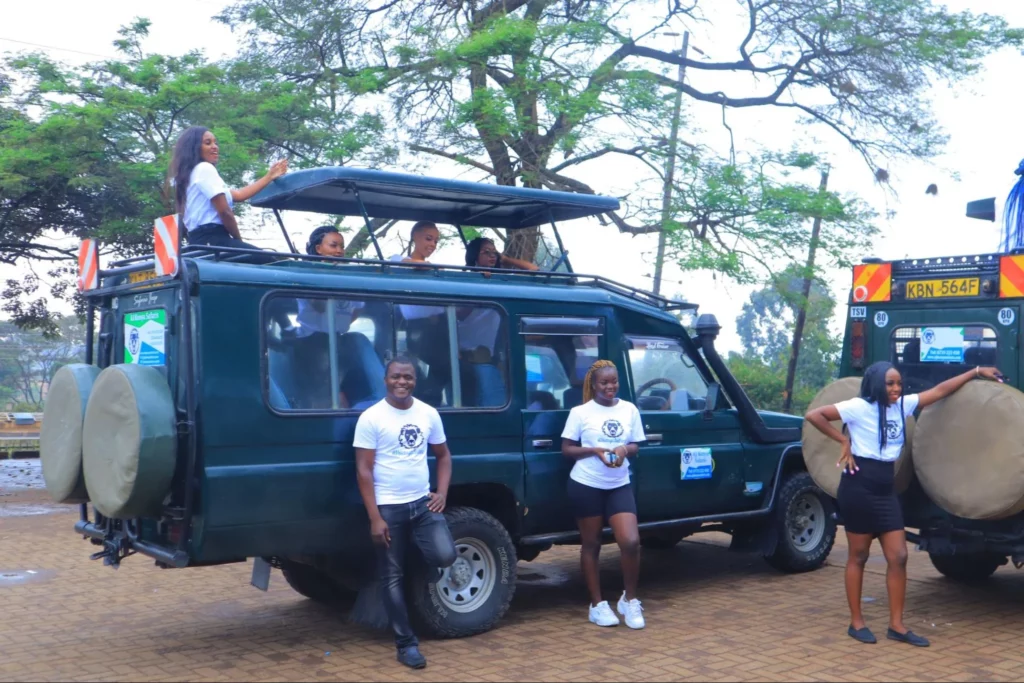
Are you looking for the best Kenya safari tips, tricks, and travel guide? Look no further! Kenya is a top safari destination known for its diverse wildlife, stunning landscapes, and rich culture. But before you embark on your adventure, it’s important to know the dos and don’ts of traveling in Kenya .
Welcome to your comprehensive guide to embarking on a safari in the majestic terrains of Kenya . This guide provides beginners with vital tips on how to make the most of their Kenyan safari. We cover areas such as how much to tip your safari guide, tipping etiquette in Kenya’s restaurants and hotels, safety measures during your safari, and much more.
Buckle up and prepare for an incredible journey into the heart of Africa.
How to Book Our Kenya Safari Packages and Tours
We are one of the top safari operators in Kenya , providing luxury and budget-friendly tours to some of the best destinations in Africa. Our team of experienced guides will ensure that your safari is filled with unforgettable experiences and memories.
So why wait? Booking your family safari is a straightforward process. You only need to contact us at +254-748-258-880 or email at [email protected] or [email protected] .
View Our Most Booked Kenya Safari Tours and Packages
Kenya travel advice for beginners ultimate guide.
There are a few things you should keep in mind before embarking on your Kenya safari adventure. Here are some important tips to help you plan and prepare for your trip:
Research the Best Time to Visit
The weather in Kenya can greatly impact your safari experience. While peak season is from July to October, there are also shoulder seasons that offer great deals. Do your research and choose the best time to visit based on your preferences.
Jan - March - High Season
The weather is hot and dry, making it perfect for game viewing. This is also the high season, but with less crowd compared to the peak season.
April - June - Low Season
The rainy season arrives in Kenya during these months, but this can be a beautiful time to visit as the landscapes are lush and green. You may also find great deals on tours and accommodation.
July - October - Peak Season
This is peak season in Kenya, with the famous Great Migration occurring during this time. It’s also a popular time for tourists, so be prepared for crowds and higher prices.
November - December - High Season
The short rainy season arrives during these months, but it usually doesn’t last long. This can be a great time for budget travelers as there are fewer tourists and lower prices.

Tipping in Kenya : A Comprehensive Guide
Tipping is not mandatory in Kenya, but it’s always appreciated as a gesture of gratitude for good service. Here’s a breakdown of tipping etiquette in different areas during your safari:
How Much to Tip Your Safari Guide
Your safari guide plays a crucial role in making sure you have an unforgettable experience. It’s customary to tip your guide around $10-15 USD per day, per person. If you’re traveling in a group, you can pool the tip and give it to your guide at the end of your safari.
Tipping in Kenya Restaurants and Hotels
In most restaurants and hotels, a service charge is already included in the bill. Tipping in Kenya hotel establishments is not expected, but you can leave a small amount for the staff who provided exceptional service.
Tipping in Kenya Taxi
It’s not customary to tip taxi drivers in Kenya, but rounding up your fare is appreciated. If you receive good service or a long trip, you can also give a small tip of around $1-2 USD.

Kenya Safari Safety Measures
While Kenya is a safe country to visit, it’s always important to take precautions and be aware of your surroundings. Here are some safety tips for your safari:
Choose a Reputable Tour Operator
Make sure to book your safari with a reputable tour operator like us. This will ensure that all necessary safety measures are taken care of during your trip.
Follow Park Rules and Guidelines
When on safari, be sure to follow all park rules and guidelines. This includes staying in your vehicle at all times, not feeding or approaching animals, and listening to your guide’s instructions.
Avoid Malaria and Other Diseases
Before embarking on your trip, make sure to consult with a travel doctor and take all necessary precautions to avoid diseases like malaria. Always pack insect repellent and follow recommended guidelines for staying safe.

Clothing and Packing Tips for Your Safari
Packing the right clothing and gear is crucial for a comfortable and enjoyable safari experience. Here are some tips to keep in mind:
Light, Neutral-Colored Clothing
Pack light, breathable clothing in neutral colors such as khaki or beige. This will help you blend in with your surroundings and avoid standing out to animals.
Comfortable Shoes
Bring comfortable, closed-toe shoes for your safari to protect your feet from any thorns or sharp rocks. Also, make sure to pack a pair of sandals for relaxing at the lodge.
Essential Gear
Don’t forget to bring a hat, sunglasses, and sunscreen to protect yourself from the sun’s rays. Also, pack a pair of binoculars for better wildlife viewing and a camera to capture all your incredible moments.
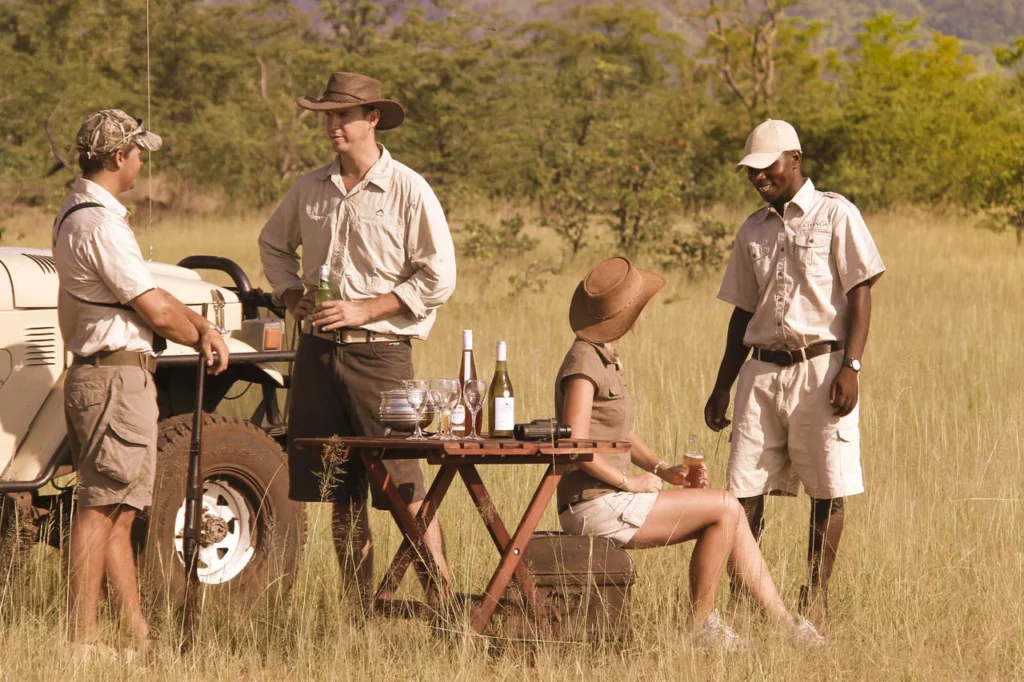
Travel Documents, Vaccinations, and Travel Insurance
Before your safari, make sure to check all the necessary travel documents and requirements. Here are some important things to keep in mind:
Passport and Visa Requirements
Make sure your passport is valid for at least 6 months from the date of entry into Kenya. You may also need a visa depending on your country of origin, so be sure to check beforehand.
Vaccinations
Consult with a travel doctor before your trip to ensure you have all the necessary vaccinations. This may include shots for hepatitis A, typhoid, and yellow fever.
Travel Insurance
It’s always recommended to purchase travel insurance before your safari. This will protect you in case of any unexpected events or emergencies during your trip.

Getting Around Kenya
While on safari, you’ll most likely be traveling in a 4×4 vehicle with your guide . However, if you plan to do any independent travel within Kenya , here are some transportation options:
Domestic Flights
Kenya has several domestic airlines that offer flights between major cities and popular safari destinations . This is a quick and convenient way to get around the country.
Buses are a popular mode of transportation for locals and can be a budget-friendly option. However, they may not always be reliable or comfortable for long distances.
Taxis are readily available in cities and towns, but it’s important to negotiate the fare before your trip. You can also use ride-hailing apps like Uber in major cities.
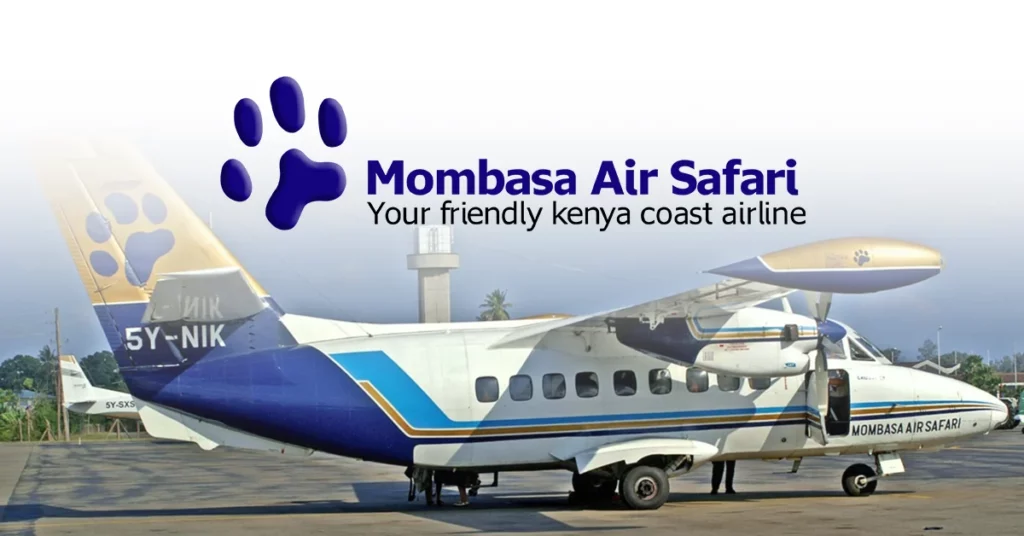
Kenya People, Culture, and Etiquette
Kenya is a diverse country with over 40 different ethnic groups. Here are some cultural tips to keep in mind during your visit:
When meeting someone, it’s customary to shake hands and ask about their well-being. Use the phrase “sasa” (which means “hi”) followed by “habari yako?” (meaning “how are you?”)
In general, Kenyans dress modestly. When visiting villages or religious sites, make sure to cover your shoulders and knees out of respect.
Tipping in Masai Mara
If you’re visiting the famous Masai Mara reserve, it’s customary to tip your Maasai guide or warrior. You can give around $5 USD per day, per person.

Money, Banks, Mpesa, & Credit Card Use
The currency in Kenya is the Kenyan Shilling (KES). Here’s some information about using money and banking services during your safari:
Exchanging Currency
It’s best to exchange your currency at a bank or authorized foreign exchange bureau. Avoid exchanging money on the street, as you may be given counterfeit bills.
Mpesa is a mobile money transfer service widely used in Kenya. You can easily load money onto your phone and use it to pay for goods and services, or even withdraw cash from an Mpesa agent.
Credit Cards
Credit cards are accepted at most hotels, restaurants, and shops in major cities. However, it’s always a good idea to have some cash on hand, especially when traveling to more remote areas.

FAQs About Kenya Safari Tips and Travels
We will end this guide with some frequently asked questions about safari tips in Kenya:
1. How much should I tip my safari guide?
A general rule of thumb is to tip your safari guide around \$10-15 USD per day, per person. However, if you receive exceptional service or go on a longer trip, you can give more.
2. Do I need to tip at restaurants in Kenya?
A service charge is often included in the bill at restaurants, but it’s still customary to leave a small tip if you received good service. A 10% tip is usually sufficient.
3. Should I tip hotel staff in Kenya?
It’s not necessary to tip hotel staff, but you can leave a small amount for housekeeping or bellhops if you’d like. The amount is at your discretion.
4. Is it okay to tip my taxi driver in Kenya?
It’s not expected to tip taxi drivers in Kenya, but you can round up the fare or add a small tip if you received good service.
5. How much should I tip my safari driver in Kenya?
It’s customary to tip your safari driver around $5-10 USD per day, per person. However, if you have a private vehicle and guide, you may want to give more.
6. Is it safe to go on a safari in Kenya?
Yes, as long as you follow the safety guidelines provided by your tour operator or guide. Always listen to their instructions and respect the wildlife. It’s also important to have travel insurance in case of any emergencies.
7. What should I do if I encounter a wild animal during my safari?
Do not panic or approach the animal. Always follow your guide’s instructions and stay inside the vehicle at all times unless instructed otherwise. Remember, you are in their natural habitat and should always respect their space.
8. Are there any specific cultural customs I should be aware of during my safari in Kenya?
Yes, it’s important to ask for permission before taking photos of local people, especially the Maasai tribe. It’s also respectful to not touch or disturb any cultural artifacts or ruins you may encounter on your trip.
9. Do I need to bring cash on my safari in Kenya?
Yes, it’s always a good idea to have some cash on hand for tips, souvenirs, or any unexpected expenses. However, most major cities and tourist areas accept credit cards. Just be sure to notify your bank before traveling to avoid any issues with using your card abroad.
10. Do I need to tip my tour operator or safari company in Kenya?
It’s not necessary to tip the entire company, but if you had a particularly great experience, you can give a small tip directly to your guide or driver. You can also leave a positive review or recommend their services to others.
We are travel. We are local. We are your wildest safari expectations fulfilled. We show you Kenya better than anyone.
Itineraries
- 3 Days in Masai Mara
- 4 Days Masai Mara
- 18 days Kenya Family safari
- 18 Days Kenya Safari
- 16 days kenya safari
- Diani Beach
- Amboseli Park
- Booking Terms and Conditions
More guides
- Mombasa beach
- Kenya Safari
- Kenya Photo safari
- Kenya wildlife safari
- Kenya Adventure
- Kenya Migration Safari
- Honeymoon Packages
- Kenya, Kiambu County, Ruiru Town Greec Towers, Office Number D7 and D8
- +254-704-532-105
- [email protected]
How to Plan a Safari in Kenya: A Beginner's Guide
From vaccinations to visas—and choosing where to stay—here's a primer for safari newbies.
For the uninitiated, the process of booking a safari can be daunting. Which is why, when it came time to plan my own trip earlier this year, I decided to enlist the help of experts—but only after wasting hours on research that ultimately left me even more confused. The logistics are understandably complicated: Which airport do you fly into? What time of year is best for each destination? How many days should you go for? Which camp should you book?
PREPARATION
US citizens will need to get a Kenyan visa prior to visiting, and you can do so online without having to visit a consulate. Be sure to have a copy of your hotel confirmation and flight info ready, as you'll need to attach the documents to the online e-visa form. The cost (including a processing fee) is $51 per person. It’s also possible to apply for a visa at the airport when you arrive in Nairobi (and the cost is only $21) but most people prefer to avoid the headache by doing it in advance.
VACCINATIONS
One of the things people find most confusing is vaccinations: which are required, and when you're supposed to get them. Passport Health is a fantastic resource for travel immunization information—the site breaks down every vaccination that's needed for each country, and can even assist with booking appointments in your area. Best of all, they’ll create an itemized print-out for you to submit to your insurance company for reimbursement.
Check out my full packing guide here .
OVERNIGHT IN NAIROBI
Depending on when you arrive, you’ll typically fly into Nairobi and spend the night before heading to your destination first thing the next morning.
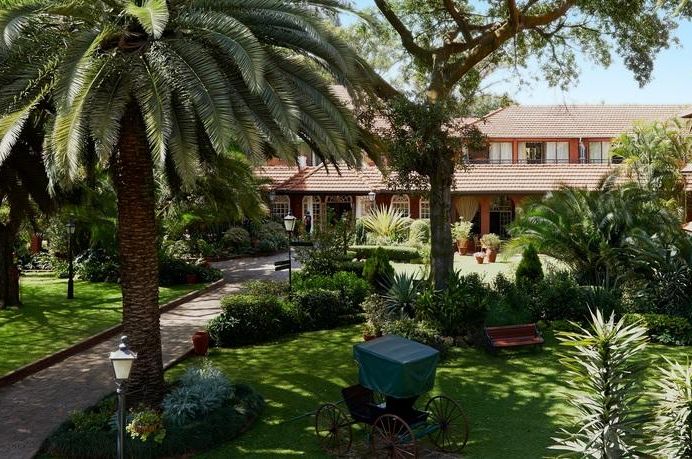
Close to the city center and not far from Nairobi airport is Fairmont Norfolk , a historic British colonial hotel that feels like a journey to a bygone era. The accommodations are perfect—rooms are centered around a quaint courtyard, there are Le Labo amenities, and a phenomenal morning breakfast spread. At the bar, musicians play live music, while locals and businesspeople have wine, cocktails, and (surprisingly delicious) tapas.
If you choose to spend extra time in Nairobi, I would also recommend checking out Hemingways , or you might consider extending your stay by booking a room at Instagram favorite Giraffe Manor , where you can have breakfast alongside the property’s 12 friendly giraffes.
TRANSFERRING TO YOUR FLIGHT
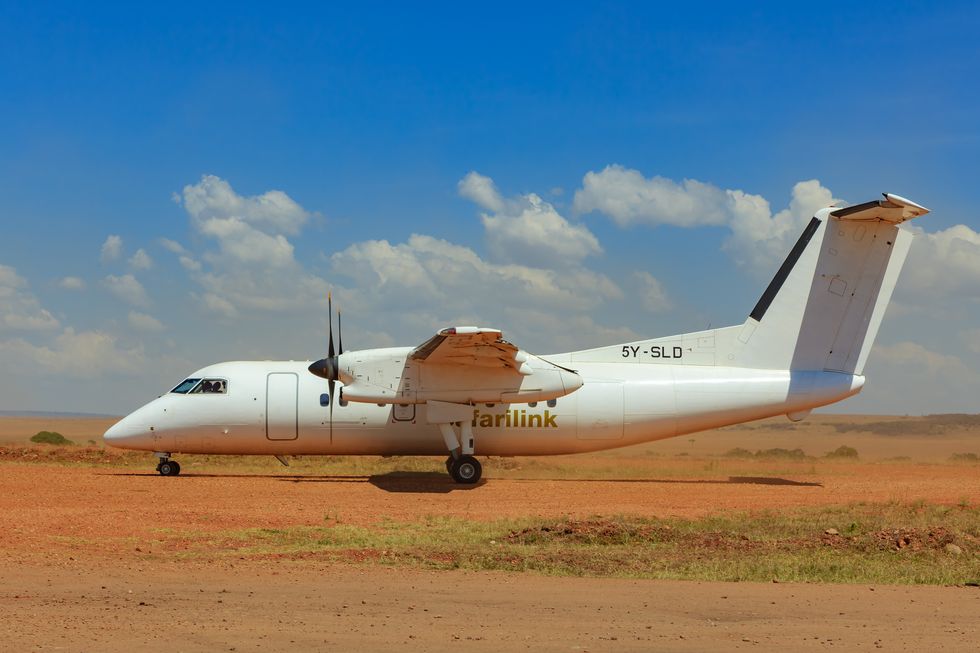
After your overnight, you’ll be transferred to Wilson Airport, where most of the shorter, regional flights depart from. Bear in mind that the planes are small, so you’ll likely be told to bring only one duffel bag per person that weighs no more than 15 pounds. (Most camps and luxury lodges provide daily laundry service, which helps when you're forced to pack minimally.) Flight times vary depending on where you’re headed and how many drop-offs the plane makes, but they can be anywhere from 45 minutes to over an hour.
CHOOSING A CAMP
One of the most difficult aspects of planning a safari is choosing which camp to stay at. They truly run the gamut—from posh five-star lodges to rugged tented retreats. Those looking for complete seclusion and privacy should consider Solio Lodge , which is located on a private 45,000-acre game reserve just north of Nairobi. The property is known as one of the preeminent breeding areas for rhinoceros, so it's not uncommon for visitors to see dozens of the often-elusive species during their stay.
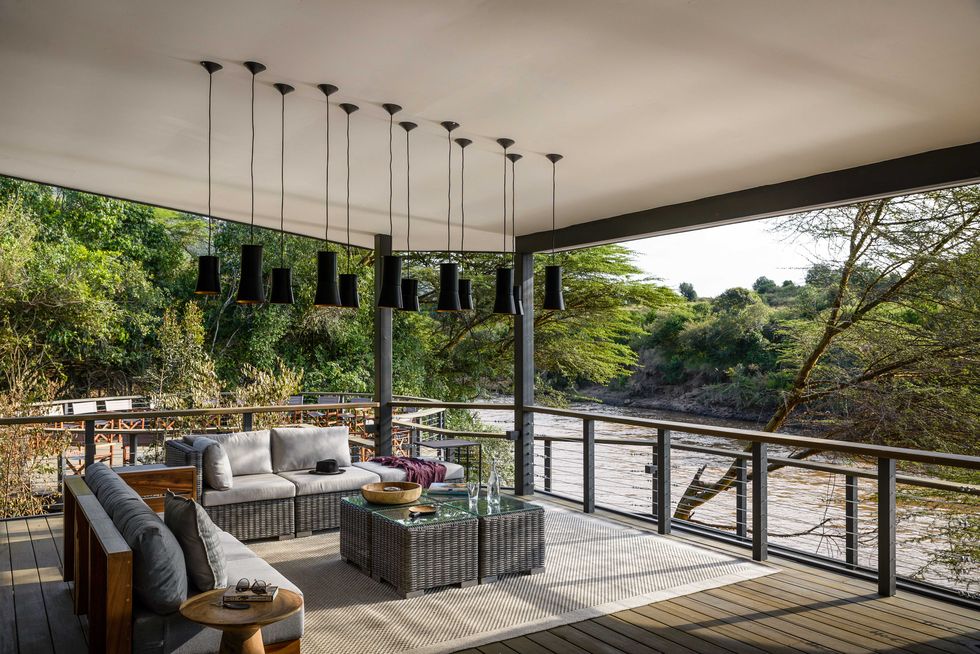
I'd also heard incredible things about Sanctuary Retreats Olonana , which is where we chose to stay, and it truly exceeded expectations. The resort was completely redone in July so everything is brand new, making it perfect for those who want an authentic safari experience paired with the comforts of a five-star resort. Daily meals take place during specific times and there are set menus, but the property was totally willing to make adjustments according to your personal preferences. Rooms are stunning and have every amenity luxury travelers expect, like Wifi, filtered water bottles, french press coffee, bathrobes, toiletries, and a minibar. The 14 rooms are situated on the Mara River, so you’re able to see some pretty crazy things right outside of your window—we watched hippos splash around in the water from the comfort of our bed.
GAME DRIVES
Upon arrival at the airstrip, we met our guide who would be with us throughout the trip, and did our first game drive for a few hours before sundown that day. The next morning, we went out from 7am - 10am, and then again from 4pm - 7pm. Since it tends to get extremely hot during the day, drives often take place in the morning and before sunset, but full-day drives are also an option for those who prefer it.
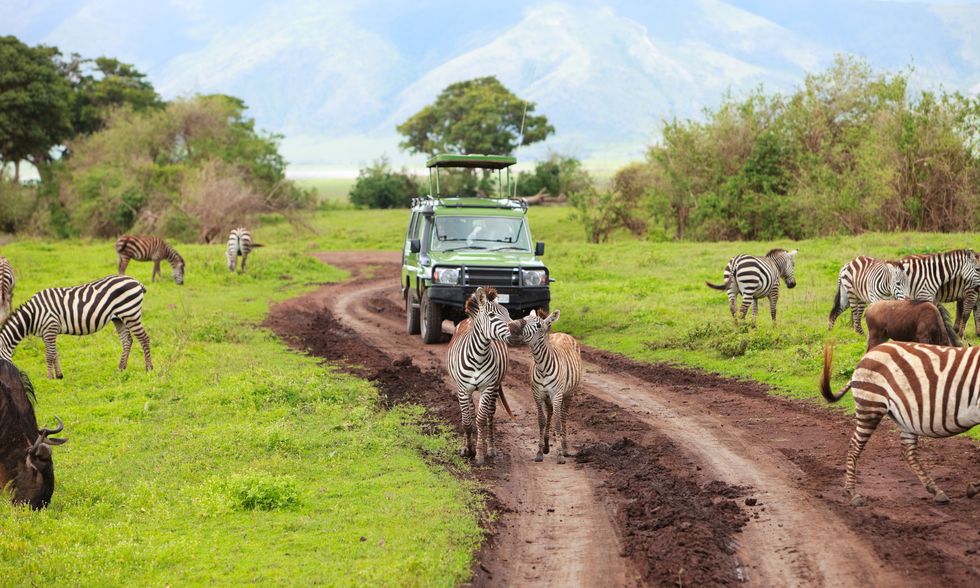
During our downtime, we rested, had leisurely lunches and cocktails, and visited a local school and Masai village nearby, which, to be honest, was possibly my favorite part of the entire trip. (You can learn more about the charity efforts that help support local Masai communities here .) Of course, each camp is different, but the staff at Sanctuary Olonana worked with us to set up activities according to what we were interested in. They also took special requests, like having coffee carafes in the van for the morning drives, beer and wine in a cooler for sunset cocktails, and even a picnic lunch for our last day.
THE WILDLIFE
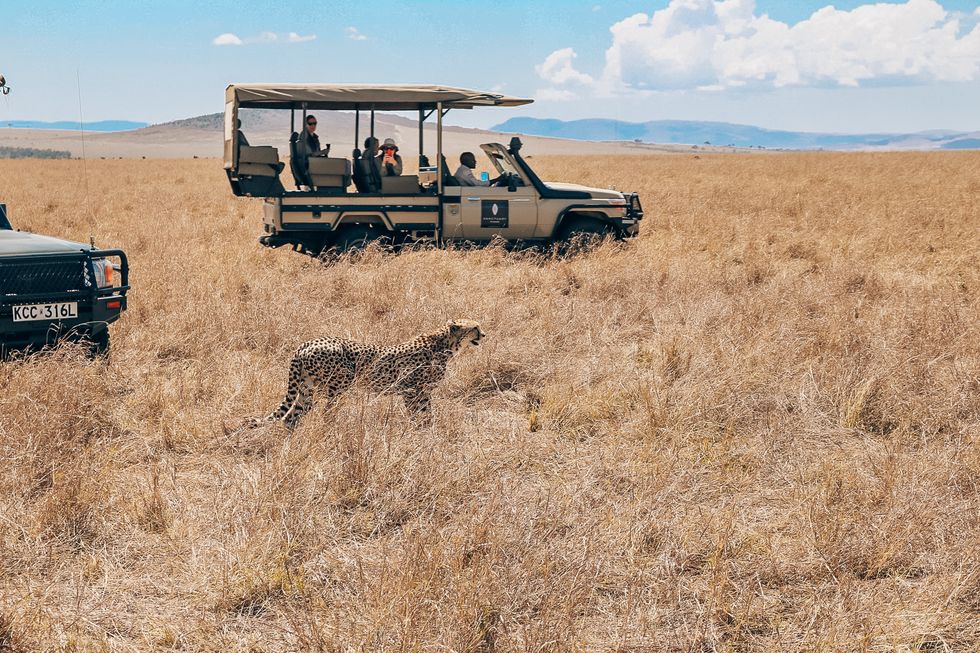
If you visit during The Great Migration (which descends upon the Mara in July and lasts until October), you can expect to see thousands upon thousands of zebra and wildebeest en route to the Serengeti. Lions, giraffes, hippopotamus, and impalas are also fairly common, while rhinoceros and cheetahs are decidedly more rare to spot. Though the Migration period is considered the most in-demand, our guide put it best: "There's no such thing a bad time of year for a Kenyan safari. The action here never stops."
Lindsay Silberman is Town & Country's jetsetting Contributing Editor. She chronicles her travels on her blog and on Instagram , where she's created a community of more than 136,000 followers. Have a travel question? Send her a DM !

@media(min-width: 40.625rem){.css-1jdielu:before{margin:0.625rem 0.625rem 0;width:3.5rem;-webkit-filter:invert(17%) sepia(72%) saturate(710%) hue-rotate(181deg) brightness(97%) contrast(97%);filter:invert(17%) sepia(72%) saturate(710%) hue-rotate(181deg) brightness(97%) contrast(97%);height:1.5rem;content:'';display:inline-block;-webkit-transform:scale(-1, 1);-moz-transform:scale(-1, 1);-ms-transform:scale(-1, 1);transform:scale(-1, 1);background-repeat:no-repeat;}.loaded .css-1jdielu:before{background-image:url(/_assets/design-tokens/townandcountrymag/static/images/diamond-header-design-element.80fb60e.svg);}}@media(min-width: 64rem){.css-1jdielu:before{margin:0 0.625rem 0.25rem;}} Leisure @media(min-width: 40.625rem){.css-128xfoy:before{margin:0.625rem 0.625rem 0;width:3.5rem;-webkit-filter:invert(17%) sepia(72%) saturate(710%) hue-rotate(181deg) brightness(97%) contrast(97%);filter:invert(17%) sepia(72%) saturate(710%) hue-rotate(181deg) brightness(97%) contrast(97%);height:1.5rem;content:'';display:inline-block;background-repeat:no-repeat;}.loaded .css-128xfoy:before{background-image:url(/_assets/design-tokens/townandcountrymag/static/images/diamond-header-design-element.80fb60e.svg);}}@media(min-width: 64rem){.css-128xfoy:before{margin:0 0.625rem 0.25rem;}}

Watch the Trailer for 'A Man in Full'

Rachel Zegler to Star in 'Romeo and Juliet'

Best Room At... Hotel Chelsea

T&C Horoscopes: April 16—30

Behind the Scenes of 'The Outsiders' Opening Night

Sam McAlister Cried at Billie Piper’s Performance

'Mary & George' Cast vs. Real-Life Counterparts

The Rise of the Gay Polo League

How 'Ripley' Made Midcentury Italian Glamour

Cindy Crawford Has A New Casamigas Line

26 Bottles of Rosé to Try This Summer
Get up close and personal with exclusive, inspiring interviews and taste profiles delivered with a cheeky twist to your inbox daily.
By subscribing to our email newsletter, you agree to and acknowledge that you have read our Privacy Policy and Terms.
- Artists in Residence
- Privacy Policy
- Change Privacy Settings
A Beginner's Guide to Planning a Safari in Kenya
Everything you need to know about going on safari in this unparalleled east african country..

With abundant wildlife and a striking landscape, Kenya is one of the most magical places to visit on the planet. It’s also the perfect place to go on your first safari, with a wide variety of operators and camps available for booking. Not sure where to start? Here’s an overview of how to travel to Kenya, where you’ll want to stay, and what you’ll want to pack for your trip.
How to Get There
If you’re traveling from North America, you’re looking at a long travel day — even direct flights from cities like New York take close to 14 hours to Kenya’s capital, Nairobi. If you have the option to use points or splurge on a business class ticket, Qatar’s Q Suites are the most comfortable way to travel to Kenya. The suites offer privacy with an actual door, an array of food choices and beds so you will get to Kenya refreshed. If you fly through Doha, you have access to the business class lounge where you can shower and eat anything from croissants to made-to-order sushi.
Once you arrive in Nairobi, you’ll need to take another smaller flight to head into the “bush”. You’ll likely fly Safarilink or Kenya Air, and the flight is short, typically one hour or less. Since the planes are small, you’ll feel the motion of the aircraft more — heads up for those who are afraid of flying.
Where to Visit
Masai Mara is the most famous region to visit for safari in Kenya with 583 square miles of land to explore. Here, you’re very likely to see the Big Five which includes lions, leopards, rhinos, elephants, and buffalos. Masai Mara is also famous for the Great Migration during which over two million zebras, wildebeest, and antelope traverse the Mara River and surrounding region. This natural phenomenon takes place between June and October, and is a particularly popular time to visit. Aside from land animals, there are also animals to see in the water; hippos, which are notably the most dangerous mammals on the planet, and huge crocodiles are visible in the water.
Enaidura Luxury Camp is a no frills camp which offers guests an authentic wildlife experience. This classic luxury safari camp has only eight tents and exerts minimal impact on the environment, as it runs on fully solar-generated power and has no permanent structures. Located in one of the most sought-after locations in the Masai Mara, this is a great place to stay for someone who wants to maximize their time outdoors observing animals. “The focus of all guides at Enaidura Camp is being out on safari,” says Rajay Singh, CEO of Safari Trails and Enaidura Luxury Camp. “Most guests stay out all day and we don’t hurry them back to camp for meals, but instead we send out a chef with our food truck and serve them freshly prepared breakfast or lunch in the bush. That way they do not miss out on quality sightings and have enough time to study wildlife behavior.”
Another wonderful stay is at Elewana Sand River Masai Mara which is near the Tanzanian border. Overlooking the Mara River, the property features 15 tented rooms and one family tent, each of which features its own designated dining and outdoor areas perfect to soak up the sights and sounds of nature. After an early morning safari, the property has a lush pool area overlooking the river bank where you can have something to eat and a nice nap. Safaris start early (4-6 am) so you may actually need a little refresh before your afternoon trip.
Laikipia is a more northern and lesser visited region in Kenya, though no less fascinating to visit than the more popular Mara. Extending from the foothills of Mount Kenya, this area features rolling hills and dense bushes, perfect to eye wildlife if you approach quietly and carefully. Here you’ll also find species that are unique to this region — the reticulated giraffe, wild dog, Grévy’s zebra, and sitatunga antelope call this place home. It’s also the number one region to see the black rhino, as half of Kenya’s population exists in Laikipia.
The view from Elewana Loisaba Lodo Springs will take your breath away and the location really underscores the elevated terrain of Laikipia. The spacious tent suites fuse African and European design notes, and the floor to ceiling doors and windows allow for a breezy in-room experience on a sunny day.
What to Wear
Contrary to popular belief, you do not need to get an entirely new wardrobe for safari. In fact, unless you plan on doing a safari on foot, you don’t even need to wear neutral colors. This is a common misconception — if you’re going safari on a vehicle, you can wear whatever color you like. There’s only one thing you may not want to wear, camo print. Camo print is associated with military clothing throughout Africa and frowned upon for tourists to wear.
The most important packing tip for safari is layers; the morning can be chilly and require pants and a jacket, while during the day it can get very hot. This Uniqlo Ultra Light Down is the perfect companion; warm enough before the sun comes up, super light to carry and comes in a neat folded bag. You’ll also want to pack good sunglasses, a hat, and some nicer outfits for dinner. And sunscreen , which you should apply before you leave your room. The sun can hit your body at unexpected angles while sitting in a safari vehicle (say, for example, just your left arm) and you don’t want to realize you’re getting a sunburn until it’s already too late.
Also, many of the smaller planes in Kenya have weight restrictions and only let you carry duffel bags, not hardsides, so you’ll want to think practically about your wardrobe.
With a huge variety of terrain and wildlife, as well as a bustling capital city, Kenya is the ideal destination for first-time safari goers.
Want more stories like this?
An Immersive Guide To Adventure And Wellbeing In The Maldives Hotels Around The World That Grow Their Own Produce Build Your Own Creative Retreat With These Solo Getaway Ideas
At Naviva: A Personalized Paradise Free of Schedules and Decision-making
I tried sand bathing in japan, and it was not what i was expecting, a dream wardrobe—and itinerary—for a weekend in mexico city, caitlin clark debuted a new glossier product at the wnba draft, it’s leather weather, in search of strawberry.

Kenya Safari Travel Guide: The Best Parks to Visit
Kenya has an enviable location in Africa with the Indian Ocean to the East. It is known for evocative landscapes with many protected areas and for being one of the finest African Safari destinations with first-rate national parks and an excellent history of animal conservation. Kenya safaris almost guarantee travelers the chance to see the big five African animals – leopard, buffalo, lion, rhino and elephant – along with crocodiles, cheetahs and hyenas in their natural habitats.
Organized Kenya Safari Tours vs Self-Driving Safari
You may be wondering, should I book a pre-arranged Kenya safari tour or go at it alone. There are many options in Kenya when it comes to safari companies. While some people may opt to rent a vehicle and do a self-driving safari, this is not our recommended approach for a number of reasons.
The first, driving in Kenya can be a bit chaotic. From the drivers on the road to the lack of road in some places, it is best to let someone experienced do the driving. Further, going with an organized Kenya safari tour means having a guide that knows the parks and most importantly is an expert in wildlife spotting. You don’t want to spend all this time and money coming to Kenya and not have the chance to spot all the incredible wildlife it has to offer.
Types of Guided Safaris Offered in Kenya
There are two main types of safari tours in Kenya. These include private safari tour packages and group safari tours.
Private Kenya Safari Packages
If you prefer a luxury Kenya safari, we highly recommend splurging for a private safari tour. This will allow you to pick the parks that you want to go to including the best national parks and private conservancies in Kenya that we list below. You also get to choose the dates and length of time that you want to be on safari in Kenya for. You can even decide if you would like to do a multi-country safari and combine a Kenya & Tanzania safari.
See all of your options and prices for a private Safari in Kenya here on Viator .
Group Safari Tours in Kenya
For those on a budget, a group Kenya safari may make more sense. Group safaris start on a specific date and run for a specific period of time. You can choose to do 3, 5, 7 day or even longer group safaris. Group size are typically small as you share a Landcruiser that can fit 6 or 8 people. You save money plus get the chance of meeting new friends! Keep in mind with a group safari you may not be able to choose which national parks or reserves you want to go to as they are pre-planned.
See all of your options and prices for a group Kenya safari here on Viator .
Kenya is the Best Place in Africa to Go for a Safari
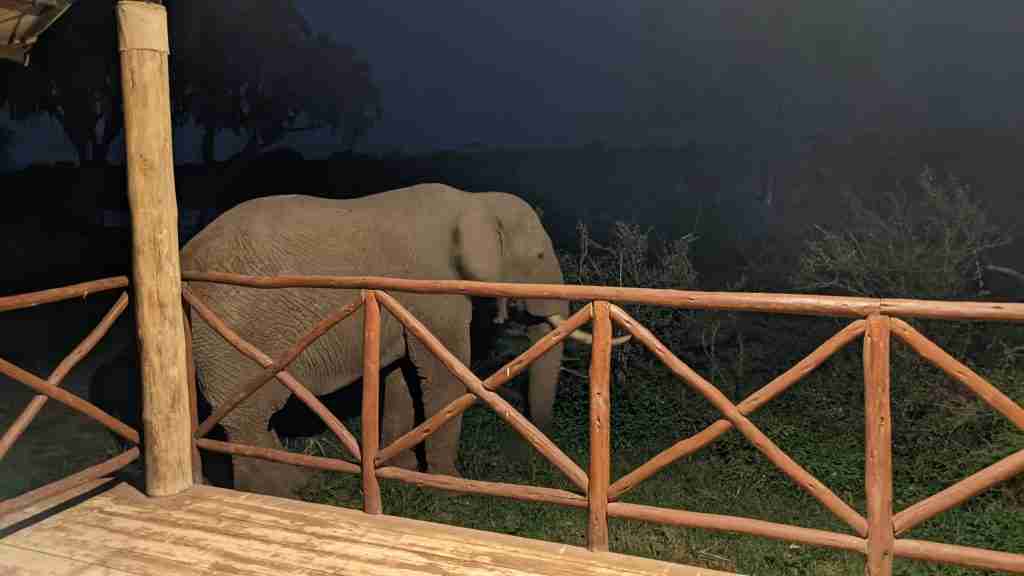
Some people may be wondering, is Kenya or Tanzania better for safari? Having travelled through them both, we can say that Kenya is truly one of a kind and the best place to go for an African safari. With so many amazing destinations in Africa famous for safaris, you may be wondering why we believe Kenya safaris are the best. Well, we have a long list for you of what makes Kenya the best place to go for a safari vacation.
Why is a safari holiday in Kenya the best?
- Incredible scenery and Africa’s tallest peaks. Kenya straddles the equator and is covered by the Rift Valley. This has a range of valleys running over a 5,000km crack in the Earth and is also home to Africa’s highest peaks, including Mount Kenya. There are exquisite coastal plains and dry wastelands in the north.
- Unique wildlife that can be seen only in this part of the world. With this variety, it might be hard to choose where to base yourself, but the Central Highlands is a prime Kenya safari location. It has Mount Kenya and Aberdare mountains towering over its landscape and there are many conservation areas. As a result, travellers will find unusual species exclusive to this part of Africa, such as a reticulated giraffe, a Gerenuk, a Beisa oryx or a Grevy’s zebra.
- Masai Mara and “The Great Migration.” In the South of Kenya, you’ll witness the great migration of animals – like the wildebeests – and the eagle-eyed predators that hunt them. Known as “The Great Migration”, every year between July to November, millions of wildebeests cross the Mara River to the Maasai Mara mainland followed by gazelles, zebras, topi, elands and the predators that hunt them. This area is considered one of the most important in the world for animal conservation. This is a sight to behold and is considered “one of the natural wonders of the world”.
- Kenya Banned Big Game Hunting in 1977 and is a Leader in Wildlife Conservation . There’s a reason why there are so many animals in Kenya. The country banned hunting in 1977, the first African country to do so and remains to be one of the few countries in Africa where hunting is strictly prohibited. As a result, the wildlife on a Kenya safari is not only plentiful but they are also not as afraid of human beings as in many other African safari destinations. Further, Kenya goes above and beyond when it comes to conserving their endangered species. A large part of the country is protected by public and private parks and conservancies. They work closely with the local people to ensure that they benefit from tourism and therefor protect the wildlife. According to the IFAW , there were 0 rhinos poached in Kenya in 2020 and the overall Rhino population increased by over 150 rhinos.
- Kenyan People are Friendly . The final reason why Kenya is the best place in Africa to go on a safari is because the people there are very friendly and always welcoming of tourists.
- It’s Less “Touristy” Than Other Safari Destinations. There is no doubt as to why safari vacations are so popular. Being in Africa and seeing incredible wildlife including lions, cheetah, elephants and so much more is truly a bucket list worthy experience. Many popular destinations, including Tanzania, are incredibly crowded and places like the Serengeti gets very dusty with the hundreds of safari vehicles you encounter even during off season. Being in a less crowded place means that you have more private time with the wildlife without having 50 safari vehicles fighting over a spot to see a lion.
It’s no wonder that safaris in Kenya are nothing short of exceptional, with a once-in-a-lifetime opportunity to experience Africa’s best scenery, wildlife and sunrises/sunsets! A Kenya safari will not only be one of your most bucket list worthy experiences but will likely keep you coming back for more.
Best National Parks and Reserves in Kenya to Visit on a Safari
Naboisho conservancy – best safari destination for seeing lion s.
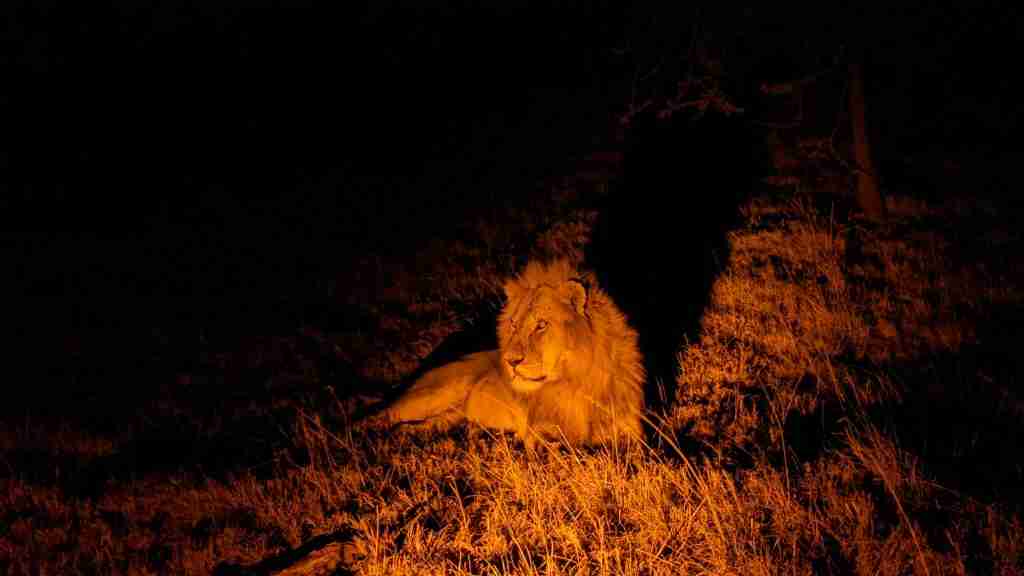
The Mara Naboisho Conservancy works with the local people to preserve the authenticity of the natural land and the Mara ecosystem. As a result, around 500 Maasai people own the land, renting it to camp owners which in return funds the local community with a sustainable livelihood.
The area covers 53,000 acres and the conservancy limits the number of tourists entering the land, meaning you’ll get an exclusive safari experience and unspoiled views of Africa’s animals. This is the best place to visit for a Kenya luxury safari as some of the best safari lodges in Kenya can be found within this conservancy.
Top animals to spot at Naboisho Mara Conservancy
This conservancy has the largest density of lions in Africa. There are around 100 lions as well as an impressive number of giraffes, the adorable bat eared fox, elephants and a large family of hyenas. This conservancy has a very large lion pride that is made up of over 20 lions! Moreover, the Naboisho Conservancy is the Kenya safari to embark on for spotting the region’s rarest animals, like the wild dog. The land also is part of a migration corridor between the Maasai Mara National Reserve and the Loita plains, so watch out for wildebeest and zebra.
Best places to stay in Naboisho Mara
There are nine camps in the conservancy, each committed to making sure any negative impact on the wildlife and land is as low as possible. They all have fantastic views, traditional-style safari tents, en-suite bathrooms and a complimentary laundry service.
Leopard Hill – Our personal favorite hotel at Naboisho Mara, this incredible, luxurious property sits in the center of it all. Hear the majestic lion roar while you sleep at night. The tents have retractable netted roofs so you can stargaze and listen to the sounds of the wildlife. Enjoy your dinner surrounded by monkeys and baboons in the African savannah. This lodge is a truly bucket list experience on any Kenya safari.
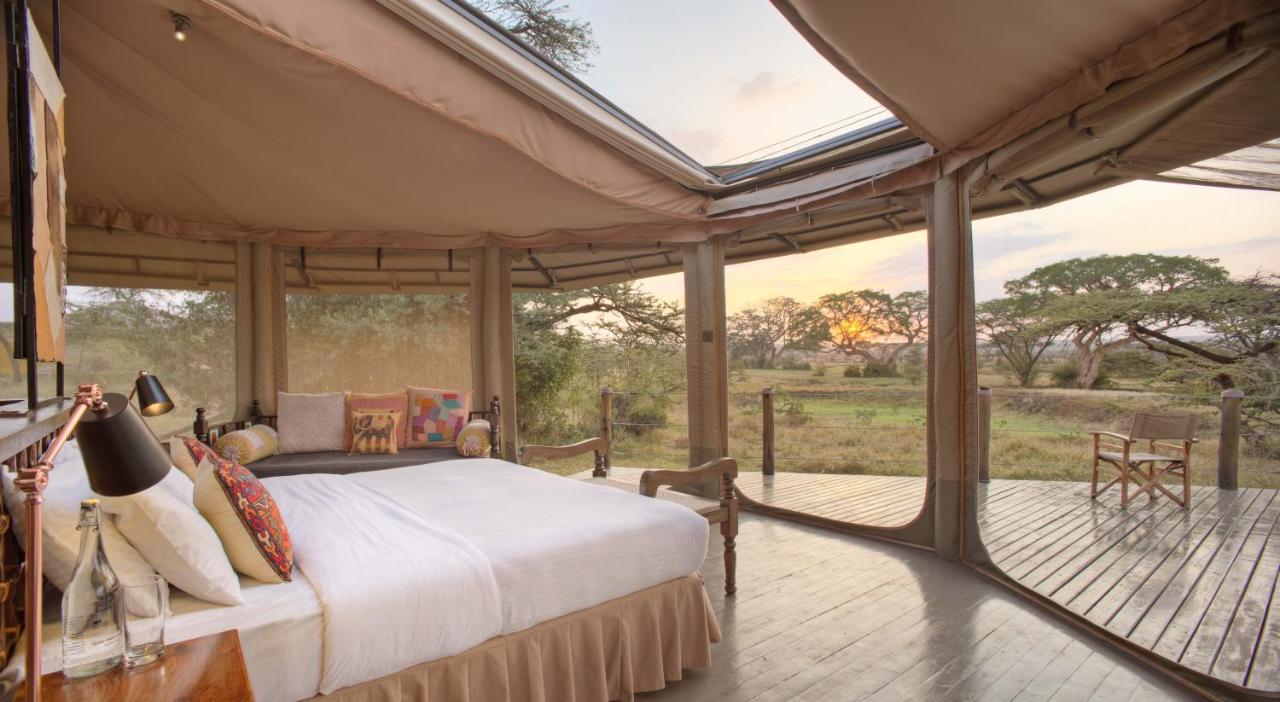
Eagle View – Located on top of a hill, this stunning hotel provides an incredible view of a natural watering hole where both predator and prey come to drink.
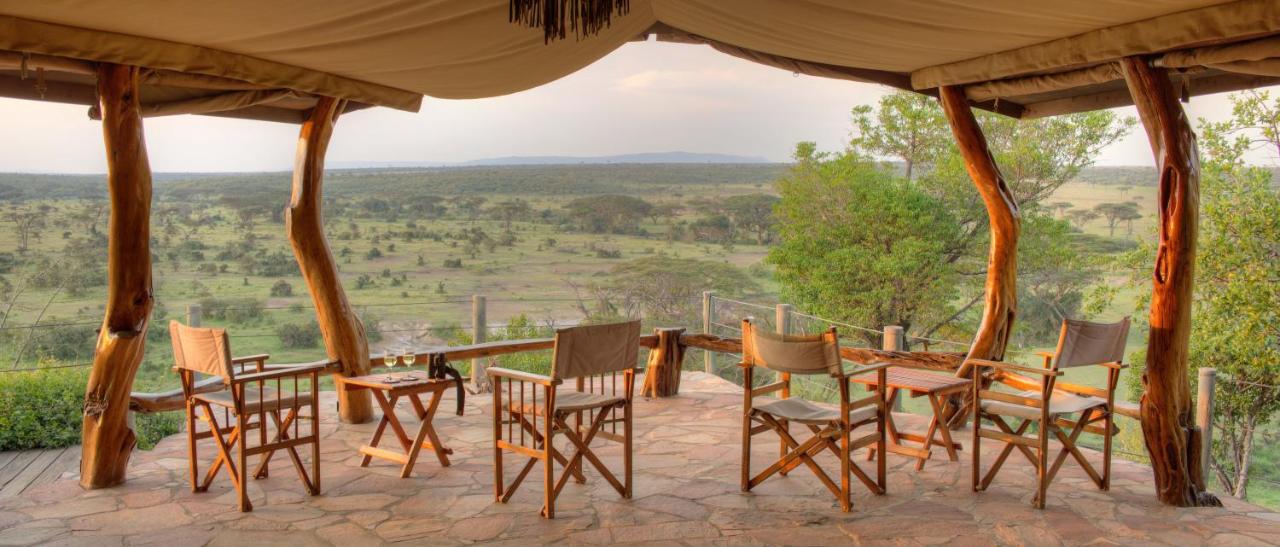
Kicheche Valley Camp – Made up of only 6 tents, the camp is sure to come with a luxurious, personal experience. Surrounded by Acacia trees, enjoy your time in the wild Kenya safari with incredible views surrounding you.

How to get to Naboisho Mara Conservancy
Flying is the recommended mode of travel to reach this conservancy. The nearest airport is the Ol Seki Airstrip which is about a 10-minute drive away. Other nearby airstrips include Keekorok, Serena, Musiara, and Mara North. For those that prefer to drive, it takes approximately 5 hours to drive from Nairobi to Naboisho Mara Conservancy. We recommend hiring a private driver because roads in Kenya can be challenging to drive on.
Ol Pejeta Conservancy – The Best Safari Destination for Seeing Rhinos

Situated between the Aberdare Hills and Mount Kenya, Ol Pejeta is one of the best safaris in Kenya for seeing rhinos and was established to rehabilitate animals saved from the black market. Moreover, it has one of the largest densities of predators in Kenya while also running a thriving livestock program.
Top animals to spot at Ol Pejeta Conservancy in Kenya
Ol Pejeta is the largest black rhino sanctuary in East Africa and is home to the world’s last two northern white rhinos. On top of this, the conservancy is the only place in Kenya to discover chimpanzees! Within its 36,420 hectares, you’ll find bat-eared fox, wild dogs, hippos, zebra and more than 500 species of birds, including the Malachite sunbirds.
Best places to stay in Ol Pejeta Conservancy
Ol Pejeta has tented camps, homestays and lodges. If you’re traveling as a family or a bigger group, consider staying at a homestay or vacation rental. This could be the most budget friendly option. VRBO has several larger vacation rentals for a low price. See all of your options on VRBO .
The Safari Cottages are located along a river in the heart of the conservancy’s wilderness area. It has an eco-friendly luxury design and includes a guide and 4×4 safari vehicle.
Alternatively, for a luxurious lodge experience where you can dine with views of a watering hole where elephants come within feet of you the Sweetwaters Serena Camp is a must.

See all Ol Pejeta conservancy accommodation options here .
How to get to Ol Pejeta Conservancy
If you are driving from Nairobi, it’ll take around 3-4 hours to reach the conservancy. Alternatively, there are daily flights from Nairobi Wilson Airport to Nanyuki airstrip. This flight takes around 45 minutes.
Samburu National Reserve – Best Safari Destination for Seeing Leopards

The Samburu National Reserve is situated along the South-Eastern part of the Samburu District in Kenya. The reserve spans 165km2 of land and since it lies on the banks of the Ewaso Ng’iro River and covers pristine wilderness, this reserve is a special location for rare species like the Grevy zebra and Beisa oryx. For these reasons, as well as its excellent number of conservancies and ranches, Samburu is one of the best wildlife reserves in all of Africa.
Top animals to spot in Samburu National Reserve
Samburu is the best safari in Kenya for spotting leopards and 900 elephants. You’ll also see lions – including Kamunyak, the famous lioness that adopted a baby Oryx – cheetahs, wild dogs and over 450 bird species.
Best Places to Stay in Samburu National Reserve

One of the best luxury safari lodges in Africa is the Elephant Bedroom Camp . We liked it so much we even wrote a whole separate feature on it as a top bucket list place to stay in the world. Here you can enjoy breakfast with an elephant and be in the center of all of the wildlife action situated on the river in Samburu. Their luxurious rooms even have their own private outdoor soaking pools. Be careful, a thirsty elephant might decide to stop by for a drink.
You can find additional places to stay at Samburu National Reserve on Booking.com .
How to Get to Samburu National Reserve
The reserve is about 310kms from Nairobi and the best way to reach it is by air or by road. The drive from Nairobi takes around 5-6 hours along the Thika Superhighway Road. Flying to the reserve is easier and takes only 1.5 hours from Wilson Airport to multiple airstrips in Samburu.
Maasai Mara National Park – The Best Overall Safari in Kenya

In the South-West of Kenya, the Masai Mara – together with the Serengeti National Park – has Africa’s most diverse ecosystem. As it covers 1,510 square km and is over 1,500 metres above sea level, it is also the best safari in Kenya for exquisite views of the big game. Within this space, there are over 500 species of birds, and 95 species of mammals, and between July-October travelers can witness the Great Wildebeest Migration.
Top animals you can see on safari in Maasai Mara
The national park has two million wildebeest, antelopes, zebras, and many cheetahs. In fact, Maasai Mara is the best place to spot cheetahs in Kenya! Within the dense thickets, endangered black rhinos can be found, while hippos hide in the large rafts.
Best luxury safari lodges and budget places to stay in Masai Mara
There are many incredible places to stay in Masai Mara National Reserve. From luxury safari lodges to budget-friendly accommodations there is a bit of something for everyone.
See options and pricing for safari lodges in Masai Mara on Booking .
How to get to Masai Mara from Nairobi
Driving from Nairobi will take about 3-4 hours, while flying takes about 40-45 minutes from Nairobi. Driving is considered the best way to reach the park, and it’s recommended to take the Safari Link if you want to fly. The nearest airport is Jomo Kenyatta International Airport in Nairobi. You can have a private driver take you from the Nairobi airport to Masai Mara by car.
Nairobi National Park – The Most Accessible National Park in Africa
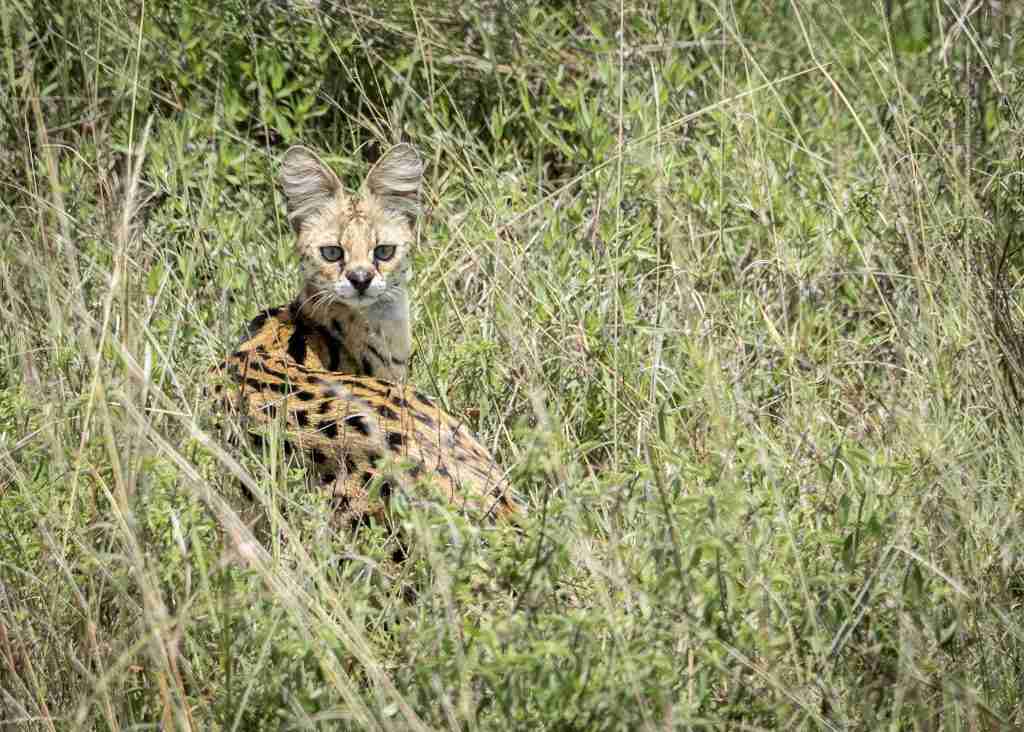
The Nairobi park is a one-of-a-kind safari in Kenya as it’s the world’s only “wildlife capital”, and it’s the most accessible safari experience in Africa. Located only a short drive from the Nairobi airport or out of Nairobi’s business district, you’ll find lots of open grassland with cityscape background.
Top wildlife to see in Nairobi National Park
Despite its proximity to a city, the Nairobi National Park plays host to several astonishing wildlife, including over 100 mammals. The park has the densest concentration of black rhinos in the world and has strong anti-poaching measures in place. On this African safari, it is also common to see hyenas and lions, and if visitors are lucky, they’ll spot leopards and cheetahs. Here, expect to find buffaloes, giraffes, warthogs, gazelles and zebras. The park also has a wetland with over 400 bird species.
Best places to stay in Nairobi National Park
The park has several places to stay, and travelers on a budget should opt for one of their cottages or guesthouses . These range from sleeping two to eight guests and were designed to give the best view of the wildlife. The site also has camping facilities that promote “sleep in the wild with the wild” and has basic facilities like a kitchen, bathroom, drinking water and open huts. There are special campsites which give you exclusive use of the area, however, these do not have any facilities.
How to get to Nairobi National Park
The nearest airports are Jomo Kenyatta International Airport and Wilsons Airports, and it’s roughly a 10km drive from Nairobi City Centre. Private tours will take you directly from the airport which is perfect for people that have a day layover in Nairobi or those looking for a day trip from Nairobi . You can also hop on a bus from Nairobi Railway Station which will drop you at the park’s main gate. This journey takes about 35 minutes.
Tsavo East National Park

This is Kenya’s largest national park, it has one of the country’s largest rivers flowing through its centre and spans 13,747 square km. Despite this, Tsavo East is flatter and drier than Tsavo West, but this makes it easier to spot wildlife. On this safari in Kenya, you can explore the Yatta plateau, characterised by wide and shallow valleys that were created by lava flows.
Top animals to spot in Tsavo East
The River Galana is among Tsavo East’s main attractions and it’s here where tourists will find crocodiles. The Lugard falls are a great place to discover buffalos and hippos but be aware, there are also crocodiles in the pools. The Aruba dam is the main drinking point where you’ll spot waterbucks, elephants, warthogs, duikers, dik-dik, and hartebeest. The main attraction to Tsavo East is the lions which are plentiful and it is here that the infamous Tsavo man-eaters resided.
Best safari lodges in Tsavo East National Park
Despite being the largest national park in Kenya, Tsavo East is less visited than other parks and has fewer lodging options. You can find available safari lodges in Tsavo East here on Booking .
How to get to Tsavo East National Park
There are several ways to reach Tsavo East National Park. One way is to drive along the Nairobi-Mombasa highway which takes around six hours. The quickest way to travel is by plane from Nairobi to Voi airstrip, Sala airstrip, Bachuma airstrip, Aruba airstrip, or Ithumba airstrip which takes roughly four hours. This travel time includes transfers.
Tsavo West National Park
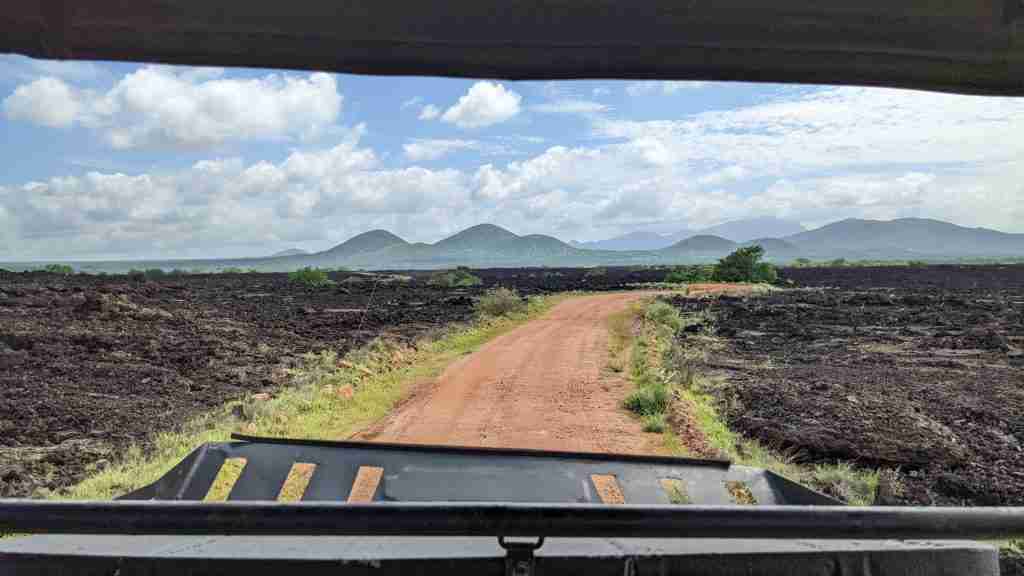
Unlike Tsavo East, Tsavo West is made up of wooded grasslands and mountains. The Mzima springs can be visited which are comprised of four springs from the reservoir under the Chyulu Hills. The trees surrounding these are home to vervet monkeys who feed on date trees, figs and raffia palms. A variety of birds can likewise be spotted here.
Top animals to spot at Tsavo West
The Ngulia Rhino sanctuary is at the base of Ngulia hill and houses endangered rhinos, including the nocturnal black rhinos. The Shetani lava flow which folds across the savannah has many animals, including the elusive wild dogs, cheetah, buffalos, hippos, elephants, leopards and elephants. The backdrop with the lava is absolutely stunning.
Best places to stay in Tsavo West National Park
Kilaguni Serena Safari Lodge is a wonderful place to stay in Tsavo West National Park. It is situated next to a watering hole which allows prime wildlife viewing opportunities.

Another option for hotels in Tsavo West is Severin Safari Camp . This upscale property has incredible views of Mt. Kilimanjaro and a pool and spa overlooking the savannah.
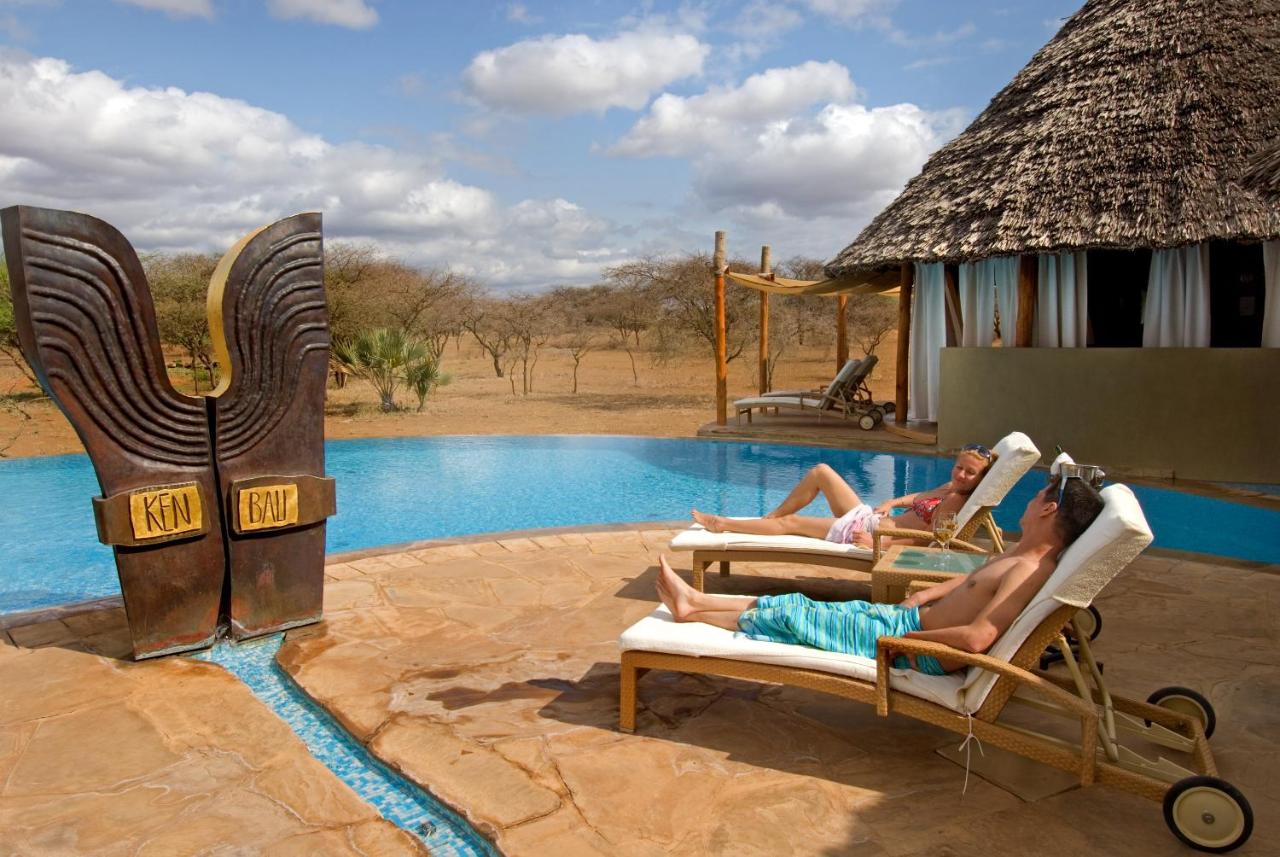
How to get to Tsavo West National Park
The instructions to Tsavo West are similar to the ones from Tsavo East. This park is easily accessible from Amboseli National Park as well and Kenya safaris to both national parks are often combined together
Amboseli National Park – The Best for Seeing Elephants

If you’re considering taking safaris in Kenya, then the one at Amboseli National Park is a must. It is the second most popular national park in Kenya and was named a UNESCO-Mab Biosphere Reserve in 1991. The name comes from a Maasai word that means “salty dust” and looking at its landscape you’d understand why. The park is divided into five habitats, ranging from wetlands with sulphur springs to the dried Lake Amboseli. There are also woodlands and savannah, and travelers can visit a local Maasai community that lives around the park.
Top animals you can see at Amboseli National Park
Here you’re guaranteed to see hundreds of big-tusked elephants. Other animals that can be spotted are lions, buffalos, zebras, impalas and over 400 species of birds, including Dickinson’s kestrel, Greater flamingo and the African swamphen.
Best safari lodges in Amboseli National Park
Amboseli Serena Safari Lodge – Situated in the heart of Amboseli National Park, Amboseli Serena Safari Lodge is a beautiful property. Hang out with the local troop of monkeys and baboons as you enjoy your home in the middle of the wild.
Ol Tukai Lodge Amboseli – An incredible pool with a view. Watch wildlife passing buy as you soak in the pool after a hot day out on safari.
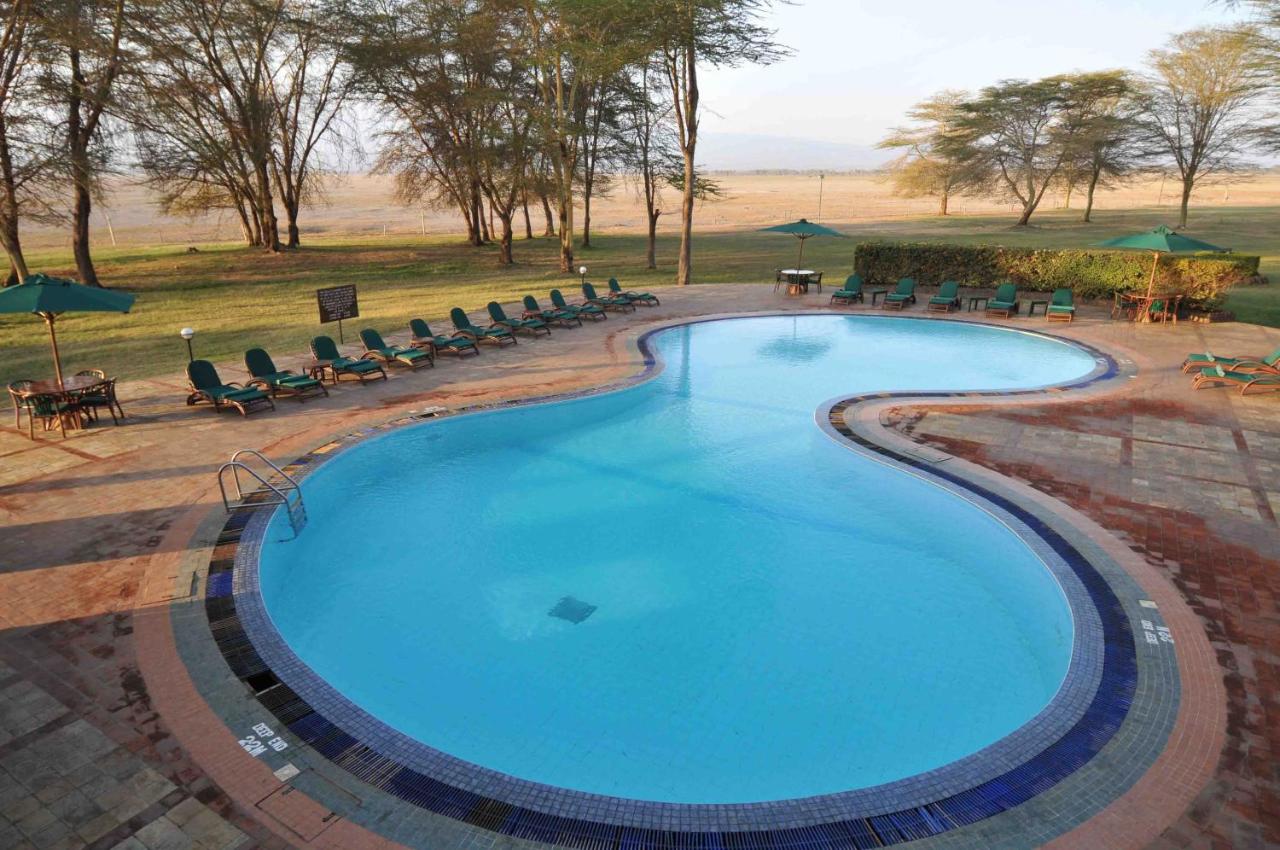
How to get to Amboseli National Park from Nairobi
You can get to Amboseli by road or by air. Driving from Nairobi takes around 3 hours and is the most convenient way to reach the park. Several airlines will take travelers to Amboseli and it’s best to fly into Amboseli Airport. This journey takes roughly 35 minutes.
Hell’s Gate National Park – The Best for a Biking Safari

Carnivores are rarely spotted here, meaning this national park is one for biking and walking.
The park is named after the geothermal activity within its borders, and its location in the Great Rift Valley is enviable. You’ll find gorges, soaring cliffs and rock towers, and geothermal steam. The latter adds the atmosphere needed for a place named Hell’s Gate. On top of this, its landscape offers some of the best sunrises, rock climbing opportunities and a natural spa. For history lovers, there’s a Maasai Cultural Centre where you can learn about the tribe’s traditions and customs.
Top animals to spot at Hell’s Gate National Park
This Kenya safari offers a smaller range of wildlife, but you’re unlikely to see predators like cheetahs, hyenas, leopards and lions. Other species within the park are klipspringers, hartebeests, Thomson’s gazelles, zebra, buffalo, reedbucks and elands. There are also over 100 species of birds, including Verreaux eagles, vultures and augur buzzards.
Best places to stay near Hell’s Gate National Park
Hell’s Gate has the Enashipai Resort & Spa which is ideal for luxury travellers, couples and those traveling for business. The lodge has gorgeous grounds, guest rooms with fine linens, Afro-chic décor, and traditional Masai headboards. The resort also has the Senteu Restaurant serving traditional Kenyan cuisine. There are three campsites at Hell’s Gate – Endachata, Olduvai and Naiburta. For larger groups and families, a vacation rental is a better option as it can fit more people. Check available vacation rentals near Hell’s Gate National Park on VRBO .
How to get to Hell’s Gate National Park from Nairobi
Hell’s Gate is close to Nairobi and can be easily accessed by road. Its entrance is about nine miles from the Nairobi-Naivasha highway and takes roughly two hours to get to from Nairobi. If you’d like to fly, the Naivasha airstrip is the nearest and it has connecting chartering flights between parks which can be booked by tour operators. Domestic flights fly from Wilson Airport in Nairobi.
Lake Naivasha – The Land of the Hippos

Lake Naivasha is the Rift Valley’s highest lake, sitting at 1,884m above sea level. Its name derives from the Maasai word for ‘rough water’ as the area is known for having storms that suddenly appear. The landscape surrounding the lake is covered in swampland spanning 64km2 and there’s a colony of fever trees.
Top wildlife to spot in Lake Naivasha, Kenya
Lake Naivasha is the most unusual safari in Kenya as you can hop on board a boat safari, meaning you can get close and personal with hippos and birds. This safari takes roughly an hour, and you might see over 1,500 hippos and over 400 bird species. On top of this, waterbucks, impalas, zebras and giraffes can be spotted in the lake’s immediate vicinity, and very lucky travelers might spot a leopard.
Best places to stay in Lake Naivasha
The Sawela Lodges are one of the most popular hotels in the area and is situated 85km from Nairobi, taking roughly 90-minutes to reach. There are 90 rooms, ranging from basic to luxury, and the restaurant prepares dishes with produce from local farms. The hotel has a football pitch, netball and volleyball courts, and a swimming pool. Lake Naivasha Resort is another option which again has three pools, a restaurant, a jacuzzi, two bars, a spa and a gym.
How to get to Lake Naivasha
Lake Naivasha is easily accessible from Nairobi, and the drive takes roughly 2.5 hours along the C88 and the Old Naivasha Road. The cheapest way to travel is to hire a minibus which seats 7-8 people. There is also the Mololine Express from Nairobi to Nakuru, make sure to disembark at Naivasha Junction. The lake is only a 15-minute flight from Nairobi via safari Link .
Lake Naivasha and Hell’s Gate National Park are very close to one another and can be done as part of a combined Kenya safari itinerary.
What Does a Kenya Safari Cost?
The cost of a Kenya safari varies depending on the types of accommodations you would like to stay in and whether you are doing a private or group tour.
Safari lodging accommodations vary from luxury safari lodges to mid-range safari lodges to budget safari lodges. Depending on your budget and the type of experience you want to have you can expect to pay anywhere from $100 to $1000 per person per night for a group tour.
For a private tour, accommodations again can vary however between the safari vehicle, driver/guide and accommodations you can expect anywhere from $150-$2000 per person per night for a private safari tour.
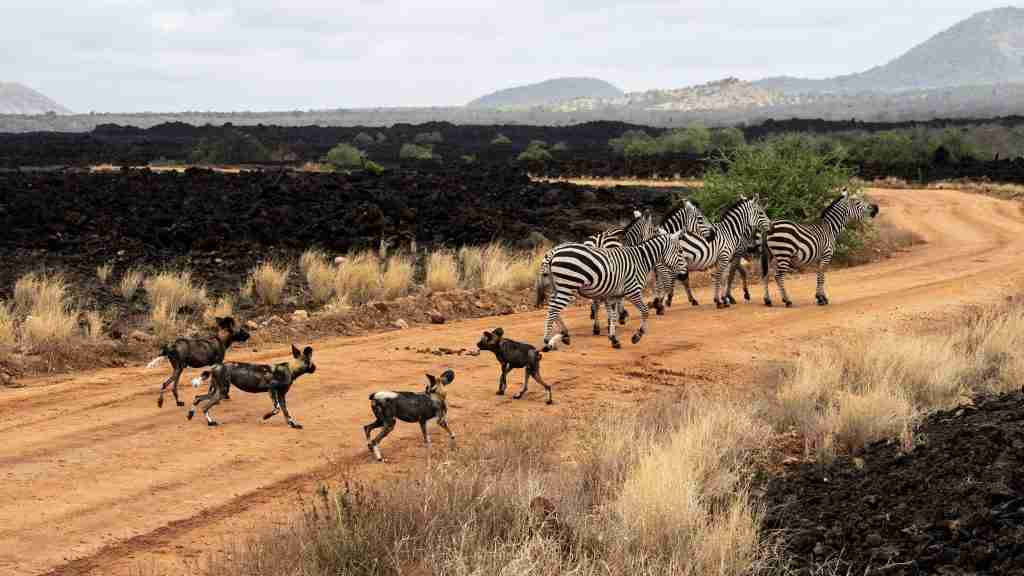
When is the Best Time to Go on Safari in Kenya?
The best time to go on a safari in Kenya is between July-March which is the dry season. As a result of the mild and dry weather, there is less water which forces animals to congregate at watering holes, meaning it’s easier for safari-goers to spot them. For those who want to witness The Great Migration in Masai Mara, the best time to go is from July to October.
Bucket List Places Contributors
San juan islands travel guide and ultimate 10-day sailing itinerary, best places to stay in alaska: incredible lodges, hotels & vacation rentals, you may also like, 10 day alaska road trip itinerary: ultimate alaska..., atacama desert travel guide: things to do, where..., most beautiful places in ethiopia: ultimate travel guide, 10 most beautiful places in laos to visit, ultimate guide to hiking the w trek in..., roatán travel guide: best things to do, where..., 15 most beautiful places in slovenia you must..., most beautiful places in new mexico: 14 best..., romantic boston for couples: the perfect date night..., 13 best weekend and day trips from quito,....
This website uses cookies to improve your experience. We'll assume you're ok with this, but you can opt-out if you wish. Accept Read More
Winter is here! Check out the winter wonderlands at these 5 amazing winter destinations in Montana
- Travel Guide
Guide to Kenya Safari: Type, Budget, Best Tours & Tips
Published: June 3, 2021
Modified: December 27, 2023
by Hannah Carmona
- Africa & Middle East
- Plan Your Trip
- Travel Destinations
- Travel Tips
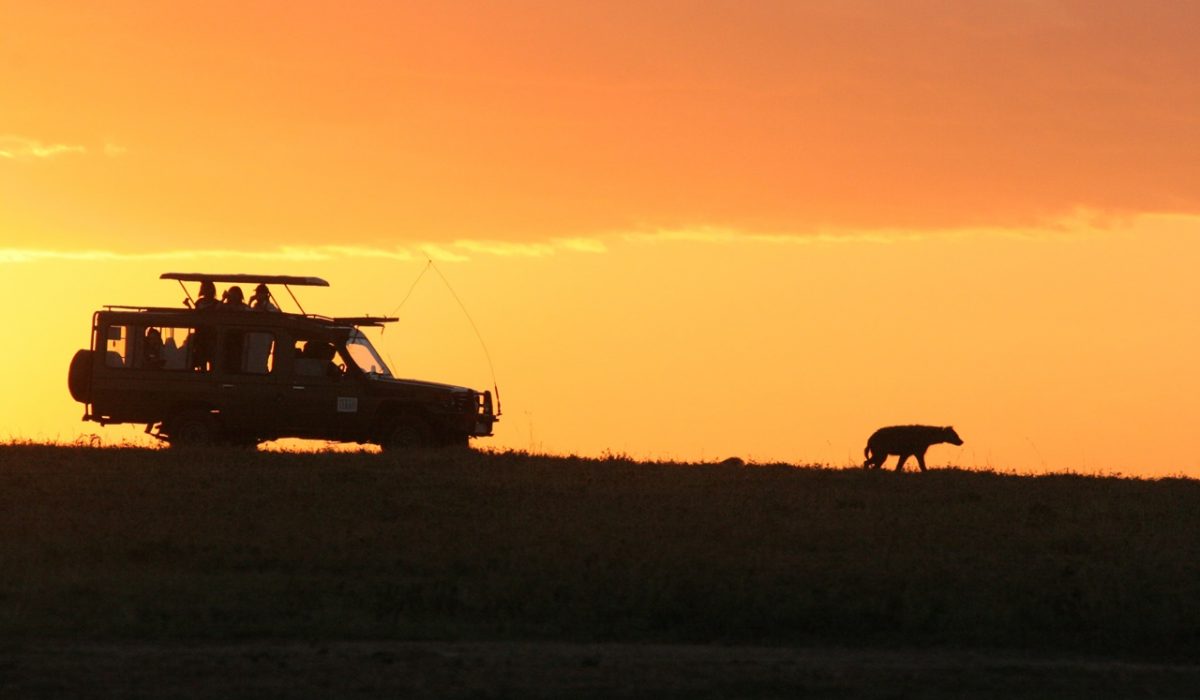
Kenya is the number one tourist destination in Africa. It’s so popular that its fascinating terrain is always on TV, billboards, or advertisements, especially when talking about wildlife. Without a doubt, Kenya’s wildlife contributes so much to the country’s tourism. Every year, hundreds of thousands of tourists travel to Kenya to see not just its wildlife but its stunning landscapes, too. Not only that, but this country’s climate brings a different kind of mood as well. In addition to that, there is the thrilling Kenya safari for you to experience!
Kenya’s open grassland and rolling hills bring such an adventure that you should never miss. The variety of species that you will get to see here will surely make your jaw drop! That said, here are the types of safaris in Kenya that you must try.
WHAT ARE THE TYPES OF SAFARIS IN KENYA?
If you want to discover African species up close, there are some types of safaris in Kenya for you. And booking one for yourself will bring you closer to some lion, zebra, wildebeest, rhino, buffalo, cheetah, and many more! Here is a list of Kenya safari that you might want to consider.
1. WALKING SAFARIS AND BUSHWALKS
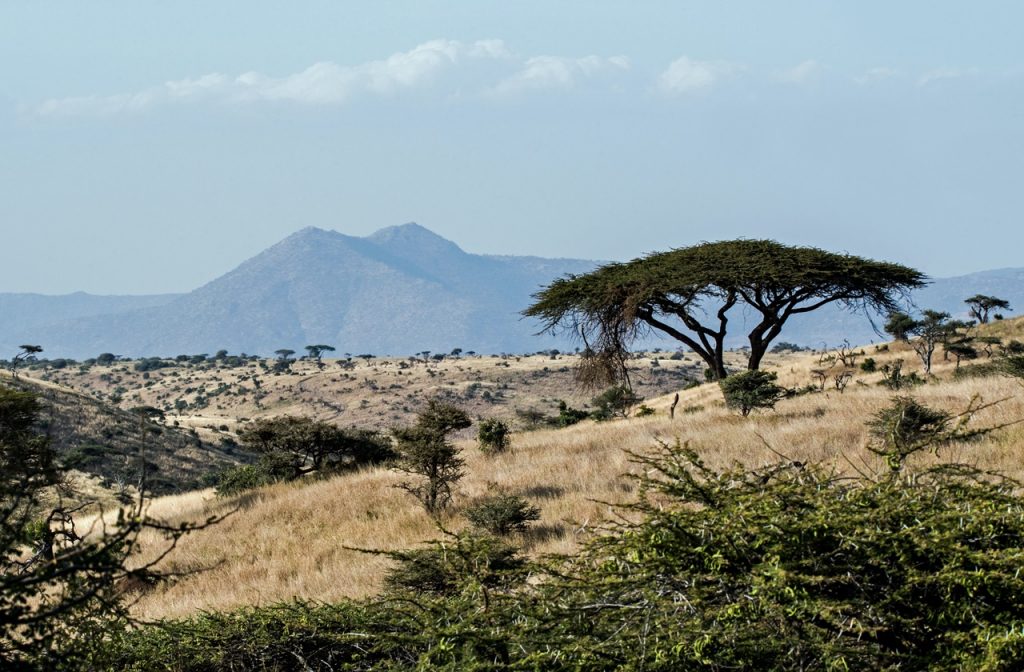
Photo by David Clode on Unsplash
Walking safaris and bush walks are probably the best way to explore Kenya’s wildlife. The fact that you are on foot with a variety of animals is just exciting! Plus, entering such a wilderness with the birds welcoming you with tiny, soothing sounds for your ears is just heavenly. With walking safaris, you will get to see wild animals more naturally, of course, in a wildlife conservation area. However, almost all national parks in Kenya prohibit such activity inside their property, except for the Hells Gate National Park. But if it is a well-planned and supervised walking safari, private conservancies may allow it. The good thing is, walking safaris are guided tours, too! Moreover, local Maasai will guide you through and will help you spot the flora and fauna species on your walk.
On the other hand, there are two types of nature walks for this type of safari in Kenya. And regardless of whether you are at Masai Mara or any other wildlife conservancy in Kenya, you can push through. Specifically, these are nature walks within the camp and nature walks outside the wildlife reserves.
Nature walks within the camp – The duration of this walk will take 45 minutes to one hour. Take note that the rate for this walk ranges from 50 USD to 75 USD per person.
Walks outside the wildlife reserves – This walk covers nine to 15 kilometers. That said, the duration of this walk will take two and a half to three hours. Since this walk will be a bit longer, there will also be a packed breakfast or lunch for you on your walk. Furthermore, the rate for this walk ranges from 90 USD to 150 USD per person.
Meanwhile, these nature walks are best done early in the morning or in late afternoons. During those periods, the sun’s heat is not that harsh, and the walk is more relaxing. In addition, elephants, buffalo, lion, leopard, and cheetah are some of the animals you will see on your walk. Indeed, this is an exciting type of Kenya safari for you!
2. HOT AIR BALLOON SAFARI IN MASAI MARA OR AMBOSELI NATIONAL PARK
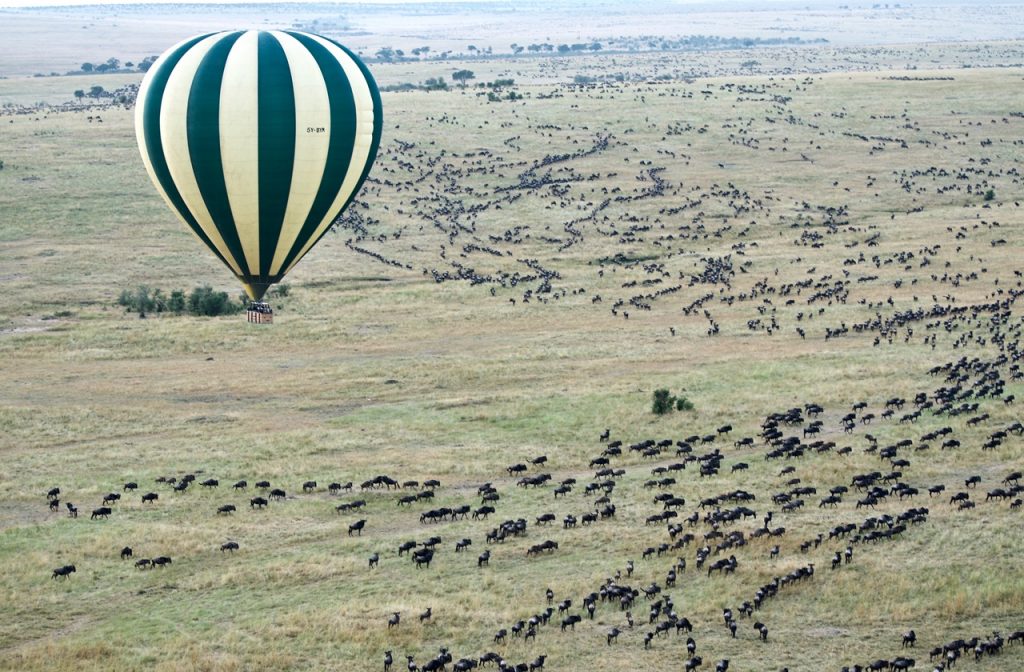
Photo by Jason Hafso on Unsplash
No fear of heights and dreaming of broad views of Kenya’s wildlife? Then bring yourself to the breathtaking adventure of Kenya’s hot air balloon safari in Masai Mara or Amboseli National Park! Flying over the savannah grasslands, you will perfectly spot a variety of Kenya’s wildlife. And since you are exploring through a hot air balloon, your eyes will also be filled with such impressive landscapes. If you want this type of safari, remember that the balloons take off at the break of dawn.
As you witness the sunrise’s beauty, the balloon will also take you to various parts of the Mara reserve or the Amboseli National Park. However, cancellation of this safari is also possible, especially if the weather condition is not safe. On the other hand, the flight lasts for an hour, and an experienced pilot oversees everything. Following such an incredible flight is a ”Champagne Bush Breakfast” available on the landing site.
Furthermore, the basket sizes vary, and only a maximum of 16 passengers are allowed per balloon. Sometimes, the number is also less if you are flying with a smaller basket. The price for this safari ranges from 415 USD to 495 USD (for Masai Mara) and 415 USD to 450 USD (Amboseli National Park). Also, there are child rates for children under 12 years of age.
Things to remember:
Pick-up time from camp or lodge to the take-off site: 5 AM to 5:30 AM
Take-off time: 6 AM to 6:15 AM
3. BOAT SAFARI IN LAKE NAIVASHA
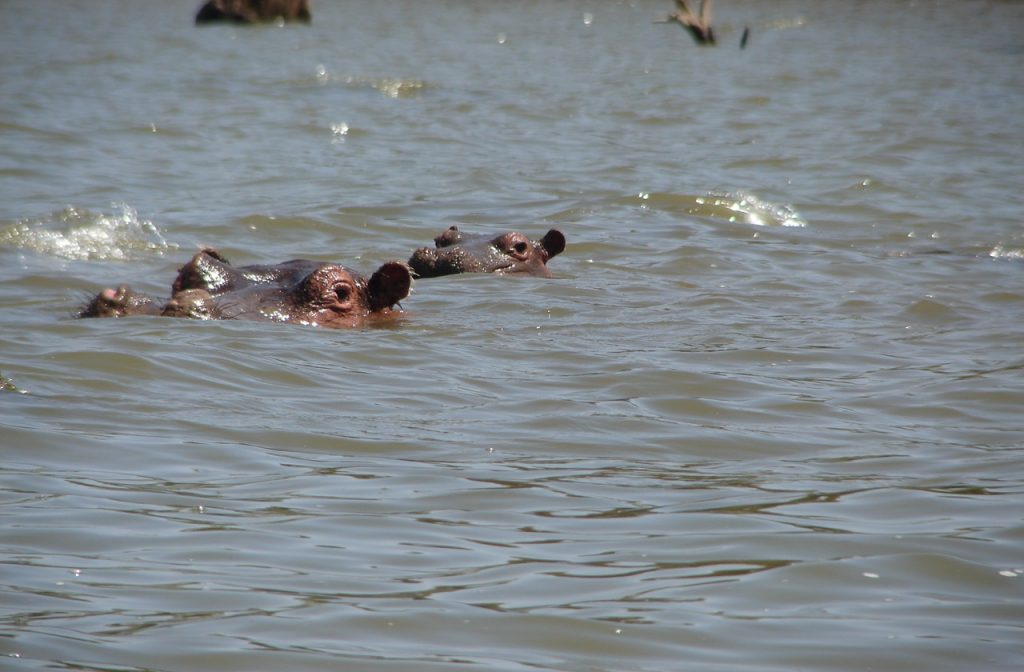
Photo by Shereena Cook on Unsplash
What about some splash of water on your safari? Yes, Kenya also has a boat safari! In connection with that, this boat safari ride will bring you to one of Africa’s distinguished water lakes, Lake Naivasha. And to tell you, the lake alone will already satisfy you! The Eburru volcanic mountain range and yellow-barked Acacia Xanthophlea trees are too gorgeous for you not to appreciate. Not only that, but the wildlife this lake is sheltering will surely make your hearts happy! You can spot some hippo on the lake, while on the shores, prepare to see giraffe, zebra, waterbuck, eland, and wildebeest. Moreover, you will also be able to see a lot of bird species here. Pelicans, giant kingfisher, pied avocet, and flamingoes are a few.
On the other hand, the rate for an hour boat safari ride ranges from 25 USD to 30 USD per person. Usually, the capacity of a boat is six to 20 persons, but the ideal craft is the six-to-12-seater only. There are available life vests for you as well, and an experienced local will guide you, too. However, Lake Naivasha gets rough in the late afternoon to evening, so boat safari rides are not allowed during those periods.
The usual schedule for boat safari: 7 AM to 11 AM and 2 PM to 4 PM
4. NIGHT DRIVE SAFARI
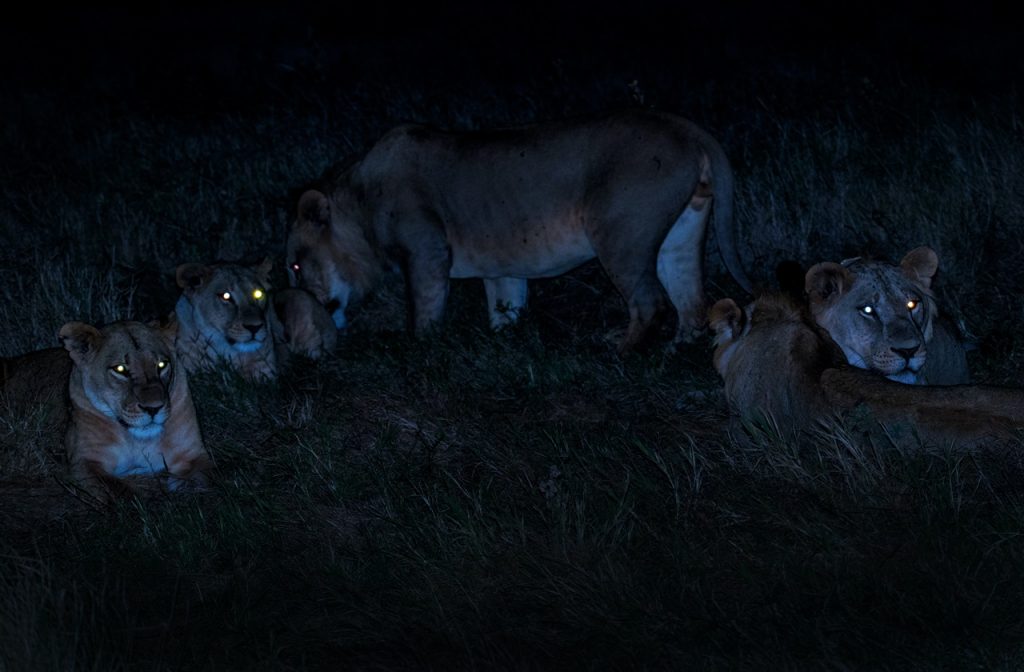
If you are for night adventures, then the night drive safari is for you! This type of safari will allow you to spot some nocturnal animals in Kenya. Grab this opportunity, and you will see these animals:
Silver-backed jackal
Bat Eared Fox
Banded Mongoose
Indeed, the night drive safari is exciting! However, this safari is not allowed inside National Parks and Wildlife Reserves in Kenya. That said, you can only do this type of safari in selected private conservancies like:
Mara North Conservancy
Mara Naboisho
Olare Motorogi Conservancy (outside Masai Mara National Reserve)
Ol Pejeta Conservancy (in Nanyuki)
Furthermore, a night drive safari in Soysambu Conservancy at Lake Elementaita is also possible. That is if you are staying at Lake Elemantaita Serena Camp or Mbweha Lodge. Take note that private vehicles are not allowed to do the night drive safari. So, make sure that you are doing this safari with an authorized guide and driver. In addition, for this safari, you will ride a 4×4 Land Cruiser or Land Rover vehicle.
Meanwhile, this safari lasts for two hours. The rate ranges from 60 USD to 120 USD per adult, per night drive. If you are with your child, there are some applicable child rates for this safari, too.
The usual schedule for night safari drives: 7 PM to 9 PM
5. VAN OR 4×4 LANDCRUISER JEEP SAFARI
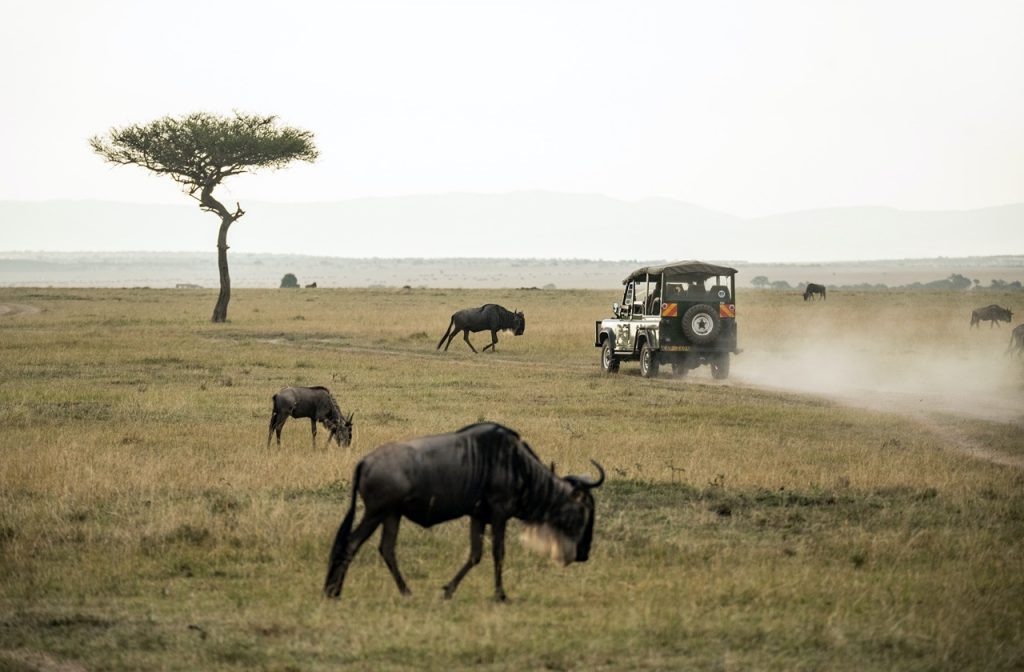
For this type of safari, you may choose between two options — a van or a 4×4 Landcruiser Jeep.
Also known as “Safari Tour Vans,” this is the most famous mode of transportation for safari tours. What makes it well-known is its lower pricing compared to the other vehicles for safari tours. Moreover, a maximum of eight passengers is allowed per van. But, for perfect comfort, the ideal count is six passengers only. In addition, the vans are complete with pop-up game viewing roofs, ultra-high frequency (UHF) radio calls, and individual seats. Meanwhile, using Safari Tour Vans, you can reach most lodges and camps in National Reserves and Parks in Kenya.
For 4×4 Landcruiser Jeep:
Riding a 4×4 Landcruiser Safari Jeep is another way to explore Kenya’s wildlife. This type of vehicle is more comfortable over rougher sections of the road. However, unlike the Safari Tour Vans, this type of vehicle costs higher as this is also the most luxurious safari vehicle. There is no question about that as this type of vehicle is also well-equipped. It comes with UHF radio calls, suitable seating, while some have air conditioning and electric cooler boxes. Furthermore, a maximum of nine passengers is allowed per jeep, but the ideal number is six passengers. Also, there are two subtypes for this vehicle.
Close sides – This type is perfect for highway travel.
Open-sided – This type is ideal for drives within various reserves and parks.
6. FLY-IN SAFARI TO MASAI MARA
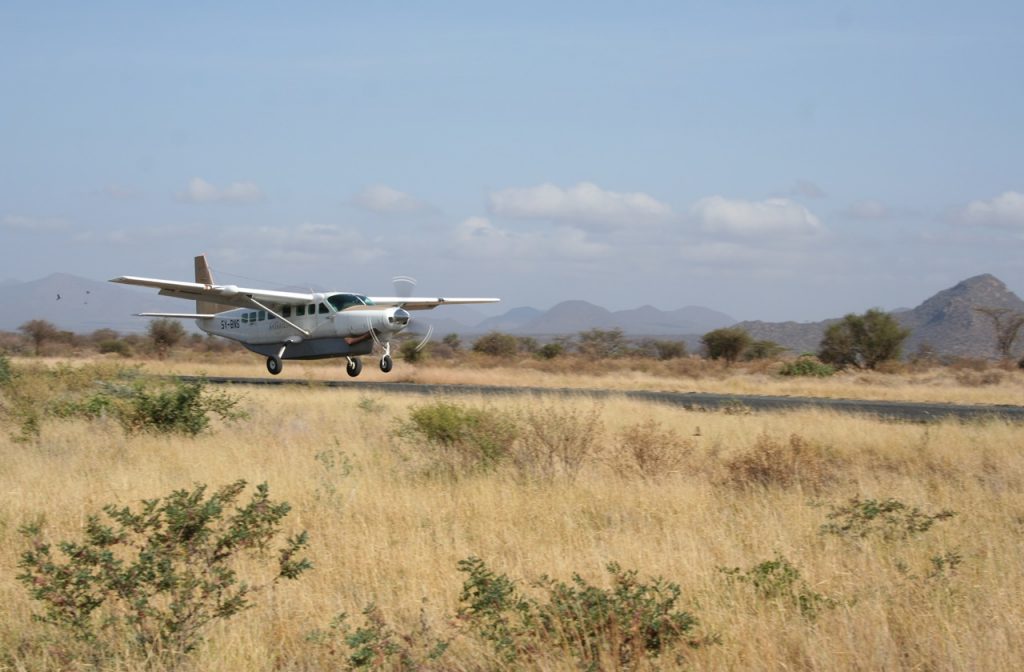
Photo by Reis. In Stijl. on Flickr
Another type of Kenya safari is the fly-in safari. This type of safari is ideal if you want to enjoy drives in reserves with open-sided safari vehicles. Furthermore, a fly-in safari package to Masai Mara is available in most camps and lodges.
Daily flights to Masai Mara:
Morning flight from Wilson – departure: 10 AM, arrival: 11 AM
Afternoon flight Wilson – departure: 2:45 PM, arrival: 3:45 PM
7. HORSEBACK RIDING SAFARI
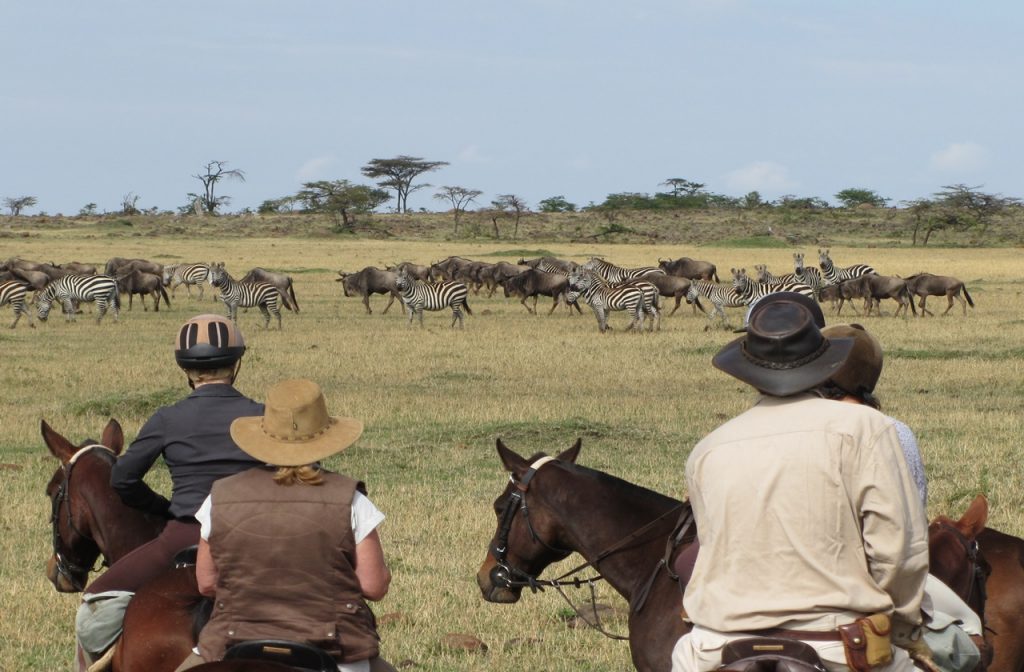
Photo by Jane Walker on Flickr
Let us make your wildlife adventure more fun with a horseback riding safari! This safari is not allowed inside Masai Mara’s primary reserve. But you can do this in the larger Mara ecosystem that includes private conservancies. Furthermore, you can also do this in other locations in Kenya, like Laikipia, Amboseli, Mount Kenya, and Lake Naivasha area.
THE BEST SAFARI TOURS TO BOOK
If you have already booked the best South Africa tours and want to try something new, here are a few of the best Kenya safari tours!
3 DAYS MASAI MARA SAFARI
Budget: 400 USD to 585 USD
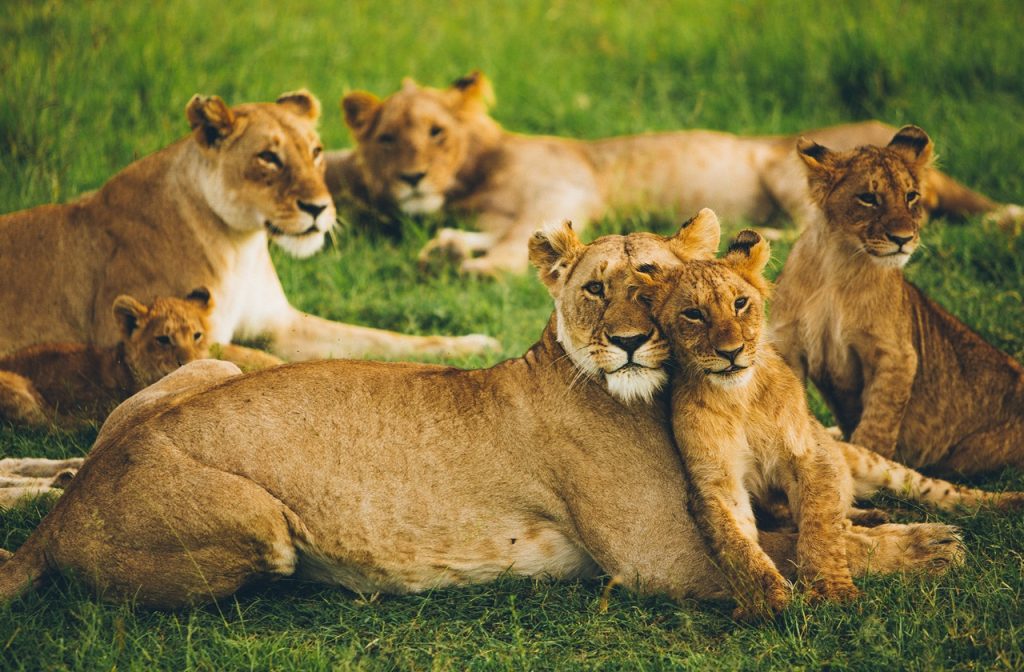
Photo by Leonard von Bibra on Unsplash
Day 1: Start your Safari from Nairobi.
The departure time from Nairobi to Masai Mara is 7:30 AM. The travel time will take at least five hours with a stop-over at the Great Rift Valley. Following that is lunch at Masai Mara. In the afternoon, at 3:30 PM, you will drive to the park to see the wildlife. Moreover, lion, leopard, cheetah, rhino, elephant, and wildebeest are what you will spot here. At 6:30 PM, you will drive back to the Fisi Camp for dinner and an overnight stay.
Day 2: Full day in Masai Mara.
For your second day, you have two schedules for your wildlife spotting. One is from 6:15 AM to 9 AM, and the second is 3:30 PM to 6:30 PM. But you may also choose a full day schedule complete with a picnic lunch. Your second day will again end in the Fisi Camp for dinner and an overnight stay.
Day 3: Return to Nairobi.
At the break of dawn, you will drive in the Mara. After that, breakfast will come next before returning to Nairobi. In connection with that, the typical arrival in Nairobi is in the early afternoon, by 2:30 PM in particular.
5 DAYS TWIGA SAFARI
Budget: 840 USD to 1,390 USD
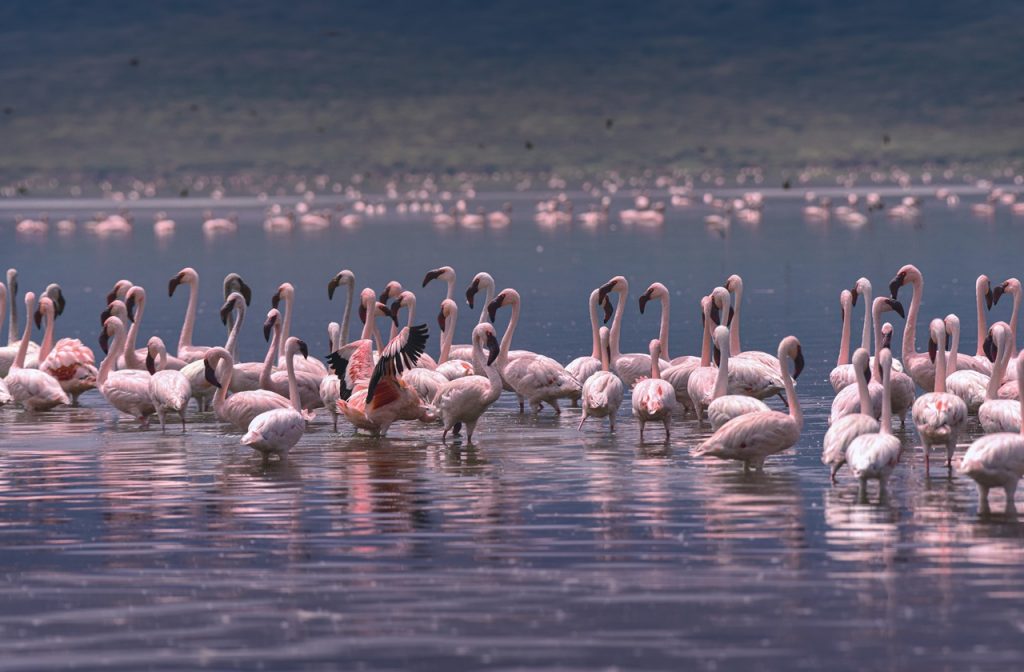
Photo by Bisakha Datta on Unsplash
By 8 AM, from Nairobi, you will drive to Masai Mara with a stop-over at the Great Rift Valley. After lunch at Masai Mara, you will head to the Mara reserve by 3:30 PM for your wildlife spotting. And, at 6:30 PM, you will drive back to the Mara Sopa Lodge for dinner and an overnight stay.
Your second day will start by 6:30 AM with a drive to the Mara reserve for another wildlife spotting. This drive will last until 9 AM before having breakfast. After that, you may opt to do some nature walks before heading to the afternoon and evening wildlife adventure. This day will also end with dinner and an overnight stay at the Mara Sopa Lodge.
Day 3: Trip from Masai Mara to Lake Naivasha.
From Masai Mara, you will travel to Lake Naivasha for numerous bird species and other fascinating animals. In connection with that, the animals you will see at the lake range from waterbuck to warthogs. You may also book a one-hour Lake Boat Safari with an extra cost to spot more of the lake’s wildlife. Furthermore, your third day will end at the Lake Naivasha Simba Lodge for dinner and an overnight stay.
Day 4: Trip from Lake Naivasha to Lake Nakuru.
Your fourth day will start with breakfast before heading to Lake Nakuru by 9 AM. Lake Nakuru is a UNESCO World Heritage site and bird & rhino sanctuary. But, this lake is not just about the birds and rhinos. Here, you will also see some lions and leopards. Moreover, after lunch, at 3:30 PM, you will then drive to the park for great photo opportunities. This day will end at 6:30 PM, and you will return to Flamingo Hill Tented Camp.
Day 5: Return to Nairobi.
You will end this safari tour with a 6:30 AM wildlife spotting. After that, breakfast will come next before returning to Nairobi. Along the way back to Nairobi, there will be a short stop at the Rift Valley Escarpment.
4 DAYS FLY-IN MASAI MARA SAFARI
Budget: 2,365 USD to 3,460 USD
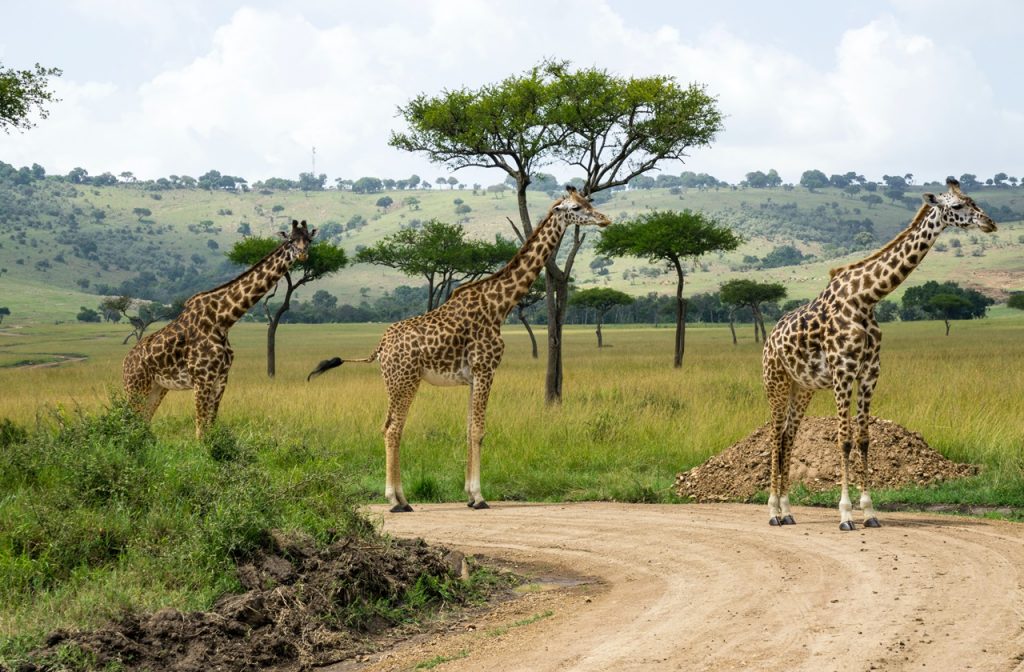
Photo by Julie Wolpers on Unsplash
Your tour guide will collect you from your hotel in Nairobi or at the Jomo Kenyatta International Airport (JKIA). From the said points, you will go to a domestic airport, Wilson. At Wilson Airport, you will board a flight going to Masai Mara that will take an hour. Upon your arrival in Masai Mara, you will then drive to the tented camp. Your first safari drive will start at 3:30 PM at the Mara reserve. Your first day will end by 6:30 PM, at the Mara Explorer Camp – Masai Mara, for dinner and an overnight stay.
Your second day will start with a Hot Air Balloon Safari at the Mara reserve. The take-off schedule is from 6 AM to 6:15 AM. That said, you should be ready for your service going to the take-off site by 5:30 AM. Upon your landing, a ”Champagne Bush Breakfast” awaits. This entire day is for you to explore the whole reserve. Like the first day, this will end by 6 PM with some entertainment at the camp.
Day 3: Another day in Masai Mara.
This day will start with an early morning drive to the reserve before breakfast. Early morning is where most animals are active, and you will spot a lot. In addition, you may also schedule a visit to the Maasai Village nearby with the camp manager. During your stay at the village, you will learn about the life of the nomadic Maasai — Kenyan tribe. Not only that but, you will also see their unique mud homes—the Manyatta huts. Lunch will then follow before the afternoon drive to the reserve. The third day will end by 6:30 PM at the Mara Explorer Camp – Masai Mara.
Day 4: Return to Nairobi.
After your breakfast in Masai Mara, you will drive to the nearby airstrip for your flight back to Nairobi. Upon your arrival in Nairobi, your guide at the Wilson Airport will transfer you back to your hotel.
BEST TIME TO GO FOR KENYA SAFARI
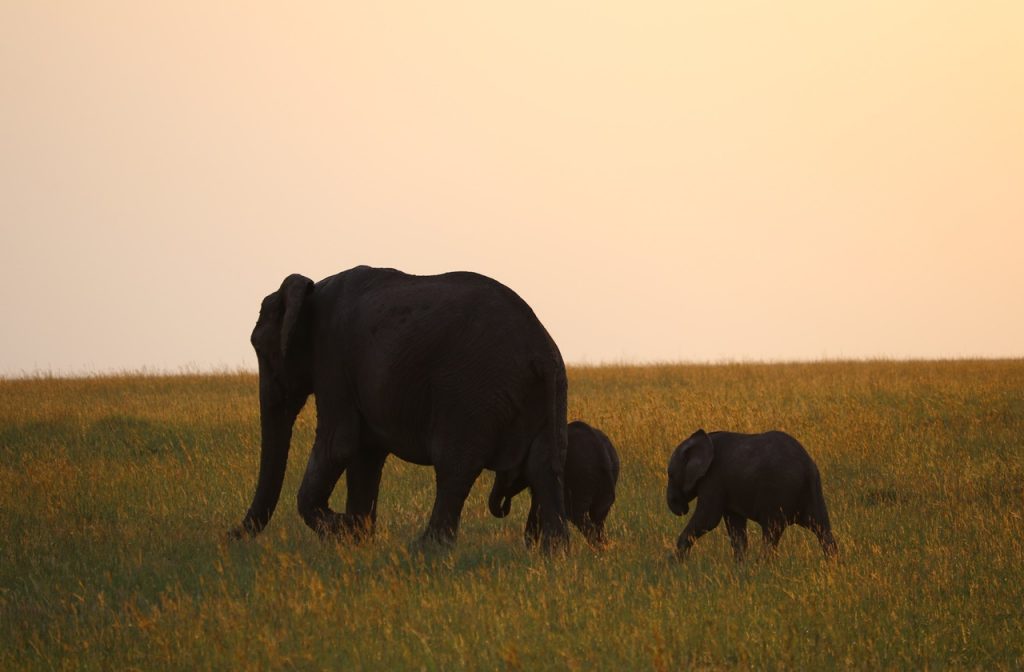
Photo by Eric Heininger on Unsplash
The best time for Kenya safari is the dry season, from January to March and July to October. Aside from these are the periods to spot most of Kenya’s wildlife, you will also witness the wildebeest migration. This migration happens from July to October. Furthermore, during this period, hundreds of thousands of animals are also looking for food and water. You will see zebras, elands, and gazelles crossing on the Mara River.
On the other hand, take note that the wet seasons are from November to December and April to June. During these periods, bird migration happens, and you will see newborn animals, too. That specific scene is also awe-inspiring! Therefore, you can still visit Kenya’s wildlife parks, reserves, and conservancies any time of the year.
WHERE TO STAY IN KENYA
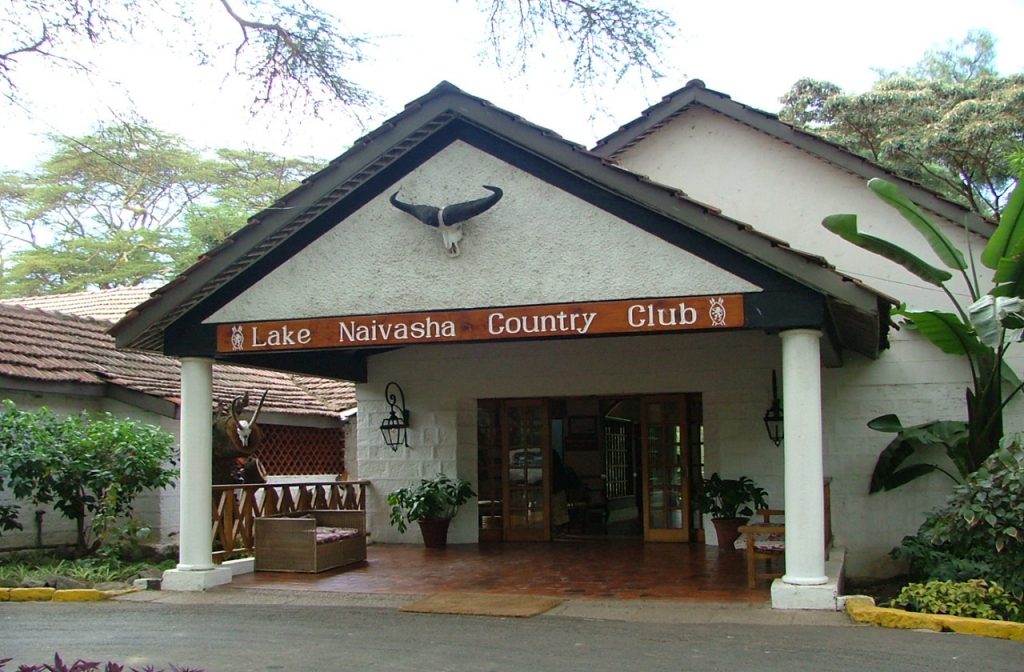
Photo by Sovay12 on Flickr
VILLA ROSA KEMPINSKI
Location: Chiromo Road, 00800 Nairobi, Kenya
Villa Rosa Kempinski offers elegantly furnished rooms with city views. Each room comes with a minibar, desk, and flat-screen TV, while some rooms have balconies. In addition, local and international cuisine is also available at their restaurant. You can also enjoy Italian dishes at Lucca Restaurant and Deli at Cafe Villa Rosa. And, for added relaxation, a spa with treatment rooms and a sauna is also open for you. Apart from these, there is also a fitness center and outdoor pool for you! Meanwhile, the price of the rooms here starts at 264.54 USD per night for two guests.
KEEKOROK LODGE
Location: Keekorok, Maasai Mara National Reserve, 00100 Keekorok, Kenya
Keekorok Lodge offers accommodation in the Masai Mara Game Reserve. The rooms are spacious with a balcony and garden, pool, and reserve views. Additionally, the rooms are complete with a ceiling fan, allergy-free bedding, and mosquito nets. For meals, you may enjoy traditional dishes at their Hippo Bar with lake views. Moreover, dinners are best in their Elephant Deck. What more is that, here, you can also explore the Keekorok Nature Reserve! On the other hand, the price of the rooms here starts at 199.99 USD per night for two guests.
LAKE NAIVASHA COUNTRY CLUB
Location: South Lake Road, 00100 Naivasha, Kenya
Lake Naivasha Country Club offers elegantly decorated rooms. The rooms are with tiled floors, wooden interiors, and furniture. They also come with a private bathroom, while some have a balcony with garden views. Furthermore, this hotel also has a restaurant that offers meals from their produce. Lake Naivasha Country Club also offers activities such as visits to the Crescent Island Private Sanctuary. Meanwhile, the price of the rooms here starts at 259.12 USD per night for two guests.
TRAVEL TIPS FOR YOUR KENYA SAFARI
1. Take wise precautions and abide by the rules and guidelines given to you.
2. Listen to the briefing that will be given to you by your safari tour guides.
3. Do not forget to be in proper safari attire. Choose lightweight clothes with neutral pastel colors for your safari tours. Also, be in comfortable shoes and only bring money belts if you can.
4. Bring a hat, insect repellants, and your medications (if there are any) with you on your safari tour.
5. Pack your cameras and binoculars with you. The said equipment will help you spot Kenya’s wildlife perfectly.
DISCOVER THE PERFECT KENYA SAFARI FOR YOU!
What makes spectacular wildlife is a pleasant climate, and Kenya has that. No wonder why the wildlife in this country is diverse and is continuously growing. Every year, it welcomes tourists with magnificent sceneries and species, perfect for such wildlife fantasies. From mammals to birds, Kenya will not disappoint.
Furthermore, all the wildlife parks, reserves, and conservancies will surely bring you extraordinary adventure, just like the wildlife sanctuaries in India . What’s more, you can have such an adventure in so many ways! You can go on walking safaris, boat safaris, hot air balloon safaris, or via vehicle safaris. If you are looking for more thrill, there are also night drive safaris, horseback riding safaris, and fly-in safaris! With that, there is one question left for you to answer. Are you up for the Kenya safari?

- Privacy Overview
- Strictly Necessary Cookies
This website uses cookies so that we can provide you with the best user experience possible. Cookie information is stored in your browser and performs functions such as recognising you when you return to our website and helping our team to understand which sections of the website you find most interesting and useful.
Strictly Necessary Cookie should be enabled at all times so that we can save your preferences for cookie settings.
If you disable this cookie, we will not be able to save your preferences. This means that every time you visit this website you will need to enable or disable cookies again.
Kenia reisadvies: de 10 meestgestelde vragen over reizen naar Kenia

Denk je eraan om binnenkort naar Kenia te reizen voor een safari, rondreis of relaxte strandvakantie? Ben jij benieuwd wat dit Oost-Afrikaanse land allemaal te bieden heeft en waar je rekening mee moet houden bij je reisvoorbereidingen? Lees dan vooral door! Met dit Kenia reisadvies weet je zeker dat je een onvergetelijke reis naar dit unieke land tegemoet gaat! We geven antwoord op de meestgestelde vragen over reizen door Kenia. Van de beste reistijd voor Kenia tot handige reistips.

1. Wat maakt Kenia zo’n bijzondere reisbestemming?
Kenia biedt een ideale mix van strand, cultuur en natuur. Vanwege de aantrekkingskracht van safariparken als het Masai Mara en Tsavo NP, de idyllische stranden van Mombasa en de lange kuststrook bij Diani Beach, vergeten veel bezoekers dat Kenia ook prachtige gebergtes kent. Een trekking op Mount Kenya hoort thuis op je bucketlist en de waterval van Nyahururu is simpelweg een plaatje. In het noorden van Kenia vind je bijzondere volkeren, een ongerepte woestijn en lange karavanen met dromedarissen en ezels. Het westen is daarentegen groen. Bananenbomen kleuren de glooiende heuvels en theeplantages versieren de hellingen. Kortom, Kenia is uiterst geschikt voor elk type vakantie.

2. Hoelang heb ik de tijd nodig om door Kenia te reizen?
De ideale duur van je Kenia reis is sterk afhankelijk van het doel waarmee je naar Kenia vertrekt. Ben je van plan om een rondreis Kenia te maken? Wil je tot rust komen op de bounty stranden bij Kilifi en Watamu? Of ga je vooral om de Big Five te spotten? Ons Kenia reisadvies is om minstens twee weken uit te trekken voor dit prachtige land. Kenia is niet om de hoek, dus waarom niet meteen een paar plaatsen bezoeken? Zelfs als je geen backpacker bent en normaal gesproken liever twee weken op dezelfde plek blijft, zijn er tal van leuke uitstapjes te maken uit Nairobi of vanaf de stranden. Vanuit Nairobi ben je binnen mum van tijd in Nairobi National Park, waar je giraffen en olifanten kunt spotten. Je rijdt gemakkelijk naar Naivasha voor een dagje aan het gelijknamige meer en bent slechts enkele uren kwijt om bij de voet van Mount Kenya te komen.
Bekijk ook onze reisroute voor een rondreis Kenia .
Reisadvies Kenia bij een strandvakantie
Ga je voor een relaxte strandvakantie? Overweeg dan Watamu Marine National Park te bezoeken om te genieten van kleurrijk koraal en prachtige vissen. Als je naar Watamu, Malindi of Kilifi gaat, is het gemakkelijk een dagtrip naar de andere stranden te maken. Ook Mombasa is zeker een bezoek waard. Deze intrigerende stad heeft een bijzondere architectuur, kwalitatief goede restaurants en een levendige markt.

3. Kan ik de Big Five zien in Kenia?
Je kunt de Big Five (olifant, neushoorn, buffel, luipaard en leeuw) zien in Kenia. Deze zul je echter niet zomaar tegenkomen. Hiervoor dien je een bezoek te brengen aan parken als het Masai Mara NP, Nakuru NP, Tsavo NP en Nairobi NP. Nationale parken zijn niet goedkoop in Kenia. Reken op een entree van zo’n $40-$80 per dag, plus kosten voor vervoer en eventueel een chauffeur of gids. Wel zijn de Keniaanse parken ontzettend de moeite waard.
Ander wild tijdens jouw vakantie Kenia
Buiten de Big Five is er ook kleiner wild te zien, zoals stokstaartjes, pelikanen, krokodillen, antilopen en wilde katten. Ook everzwijnen, maraboes, pythons en zebra’s wonen op de savanne. Als je niet houdt van stilzitten, kun je een fietssafari in Hell’s Gate NP overwegen. Je zult dan niet de Big Five zien (fietsen tussen de leeuwen zou te gevaarlijk zijn), maar je komt wellicht wel oog in oog te staan met giraffen, zebra’s en buffels.

Checklist voor je reis naar Kenia
- Niks vergeten? Vind al je reisbenodigdheden voor Kenia in onze travelshop
- Plan meteen je reis: vergelijk de beste deals voor vliegtickets naar Kenia
- Visum nodig? Regel je Kenia visum eenvoudig online
- Ga je roadtrippen? Vergelijk alvast de prijs van je huurauto
- Inentingen nodig? Je kunt je ook thuis laten vaccineren
- Begin gelijk met je reisvoorbereiding: Haal een Kenia reisgids in huis
- Better safe than sorry, zorg voor een goede reisverzekering
- Air miles sparen met je creditcard? Kies voor een AMEX creditcard
4. Kenia reisadvies: Is Kenia een veilig land om naartoe op vakantie te gaan?
Het is aan te raden voor boeking en voor vertrek het Kenia reisadvies van het Ministerie van Buitenlandse Zaken te checken. Kenia is een ontzettend mooi land met een vriendelijke bevolking en een grote potentie, maar kent ook haar uitdagingen. Zo wordt het land geplaagd door extremisme en kan het behoorlijk onrustig worden rondom de verkiezingen. Kijk uit met waardevolle spullen in Nairobi en Mombasa en zorg ervoor dat je na zonsondergang niet alleen over straat gaat.
Kenia reisadvies over gezondheid
Houd ook rekening met gezondheidsrisico’s. Grote delen van Kenia zijn malariagebied. Check voor vertrek bij je huisarts, GGD of bijvoorbeeld Thuisvaccinaties.nl of je de juiste inentingen hebt en win medisch advies in naar gelang jouw eigen gezondheidssituatie. Drink geen kraanwater in Kenia en kijk uit met geschild fruit, ijsblokjes en salade.

5. Is backpacken in Kenia ook mogelijk?
Backpacken in Kenia of budget reizen is prima te doen. In Kilifi, Nakuru en Nairobi vind je gezellige hostels waar je gemakkelijk andere reizigers ontmoet. Eten is goedkoop, zeker als je genoegen neemt met de lokale pot van rijst, bonen en nyama choma [gebarbecued vlees]. Ook pilau rijst en frietjes zijn overal te krijgen en samosa’s [gevulde deeghapjes] en chapati’s [wraps] zijn fijne tussendoortjes. Door het hele land rijden lange-afstandsbussen en kleinere afstanden zijn te overbruggen achterop de brommer, in minibusjes of met een tuk tuk. De grotere parken zijn prijzig, maar als je minder te besteden hebt, blijven er genoeg leuke attracties over tijdens het backpacken door Kenia. Overweeg een fietssafari in Hell’s Gate NP; je spaart dan de kosten voor een jeep uit. Bezoek de theeplantages van Kericho. Kano langs de rotsachtige kliffen van Kilifi en ga opzoek naar Brazza apen in Kakamega Forest NP.

6. Wat is de beste reistijd voor Kenia?
De beste reistijd voor Kenia is afhankelijk van wat je zoekt. In de maanden juli en augustus wordt Kenia het drukst bezocht. De temperaturen zijn mild, maar evengoed warm en het regent weinig (met uitzondering van de hooglanden). December tot en met februari is ook een uitstekende reistijd om op Kenia safari te gaan. Bereid je wel voor op hitte, maar de luchten zijn strakblauw en helder in dit jaargetijde. Vaak is het buiten de kerstperiode rustiger dan gedurende de Europese zomer. Ga je naar Mount Kenya? Zorg dan dat je ongeacht de periode dat je gaat, genoeg warme kleding en regenkleding bij je hebt. Wil je op strandvakantie in Kenia? Dan is het er eigenlijk het hele jaar door goed vertoeven, alleen maart, april en mei zijn onzekere maanden vanwege de regenval. Dat is dus niet de beste reistijd voor Kenia.

Door ons geselecteerde accommodaties in Kenia
Zawadi residence.
WATAMU | Deze prachtige luxe accommodatie met zwembad is de ideale plek om helemaal tot rust te komen.
DOOR ONS BEZOCHT

Swahili House
MALINDI | Dichtbij zee ligt dit prachtige hotel met WiFi en compleet verzorgd ontbijt.

The Clarice House
KISUMU | Comfortabele kamers in een rustige omgeving. Prachtige tuin en vriendelijk personeel.

7. Kenia reisadvies: Welke plekken buiten de gebaande paden zijn de moeite waard?
Wil je meer van Kenia ontdekken buiten de gebaande paden, ver weg van het massatoerisme? Ook dat is mogelijk als je gaat reizen door Kenia. We delen een aantal off the beaten track Kenia tips:
Kamperen tussen de mangroven in Kilifi en Ukunda
Mida Creek is een plek die bijna niemand kent: gelegen tussen Kilifi en Ukunda vormt dit kleine moerasgebied een prachtige ontsnapping uit de toeristische jetset. Kampeer tussen de de drassige, met mangroven begroeide zandbanken en zie het landschap veranderen met de wisseling van de getijden. Spot honderden soorten vogels en geniet in alle rust van een glas lokaal gebrouwen palmwijn.
Strandvakantie Kenia: onontdekt Takaunga
Ook Takaunga is een kustplaats die slechts bij weinigen een belletje doet rinkelen. Dit strand behoort tot de mooiste van Kenia en wordt toch amper bezocht. Hier zijn geen grote hotels, barren of verkopers. Er zijn slechts wapperende palmbomen, hoge rotsen en een diepblauwe zee.
Het hoge noorden voor avonturiers
Voor de avonturiers is het noorden van Kenia zeker een aanrader tijdens het reizen door Kenia. Loyangalani en Maralal zijn exotische plekken te midden van niemandsland, die erom vragen ontdekt te worden. Je ontdekt hier Lake Turkana tussen kale vlaktes, maakt kennis met het Samburu volk en leert je eigen vis vangen. Loyangalani is moeilijk bereikbaar (alleen per jeep of vrachtwagen vanuit Maralal), maar de bestemming is de lange reis meer dan waard.

8. Hoe is het vervoer in Kenia geregeld?
Het openbaar vervoer in Kenia is prima georganiseerd. Natuurlijk zitten de bussen gemiddeld wat voller dan in Nederland en gaat er soms een geit mee aan boord, maar de standaard routes van Nairobi naar Mombasa hebben goed uitgeruste bussen, die je zelfs op voorhand kunt boeken. Er rijdt ook een trein van Nairobi naar Mombasa, maar deze doet er twee keer zolang over als de bus. Houd je van treinreizen? Dan is deze spoorlijn door Kenia’s binnenland zeker leuk voor de afwisseling.
Avontuur tijdens jouw reis door Kenia
Wil je echter naar het noorden of naar minder toeristische plekken, maak je dan op voor avontuur! De bussen die hier rond rijden komen regelrecht uit de geschiedenisboeken. Over stoffige wegen baan je je een weg naar plekken die je je nauwelijks kunt voorstellen.
Kenia tip: huur een auto (eventueel met chauffeur)
Natuurlijk kun je ook een huurauto regelen, eventueel met chauffeur om verzekeringstechnisch en routetechnisch geen zorgen te hebben. Ons reisadvies Kenia luidt: ‘Als je budget het toelaat, huur een auto om zo flexibel mogelijk te zijn.’ Weet wel dat ze in Kenia aan de andere kant van de weg rijden. Voor minder getrainde chauffeurs kan dat een uitdaging zijn.
Bekijk hier de prijzen voor een huurauto in Kenia .

9. Wat moet ik zeker meenemen als ik ga reizen in Kenia?
De basics maken jouw vakantie Kenia een stuk prettiger: anti-muggenspray, vloeibare zeep, ORS, zonnebrand, een hoofddeksel en zonnebril om je te beschermen tegen de zon. Vergeet verder je gele vaccinatieboekje niet (daar kan naar gevraagd worden op het vliegveld). Neem je wereldstekker mee (stopcontacten zijn zoals in Engeland). Verder is een VISA-kaart handig. Je kunt niet overal met Maestro pinnen.
Tips voor een Kenia reis buiten de gebaande paden
Ben je van plan buiten de gebaande paden te reizen? Overweeg dan een lakenzak mee te nemen tegen bedwantsen; een waterfilter, zodat je niet steeds plastic flesjes hoeft te kopen en een fold up bottle , zodat je jouw water bij kunt vullen. Een footy reisvoetbal kan leuk zijn om weg te geven of een potje te spelen met de plaatselijke bevolking.

10. Heb ik een visum nodig voor Kenia?
Ons reisadvies voor Kenia is om van tevoren een e-visum aan te vragen. Nederlanders zijn visumplichtig in Kenia en de laatste jaren wordt het steeds moeilijker om ter plaatse een visum aan te schaffen. Het aanvragen van een Kenia visum neemt gemiddeld 72 uur in beslag. De kosten bedragen 79,95 euro inclusief consulaire kosten voor een toeristenvisum met eenmalige inreis en een geldigheid van 90 dagen. Het e-visum Kenia wordt aan je paspoort gekoppeld, dus printen is in nagenoeg alle gevallen niet nodig! Heb je een ander type visum nodig? Neem dan contact op met het visumbureau, consulaat of ambassade. Lees ons artikel over het Kenia visum voor meer informatie.
Direct visum Kenia aanvragen >>
Wat neem je mee als je gaat reizen naar Kenia?

Cocoon lakenzak Egyptisch katoen

Matador lichtgewicht daypack 28L
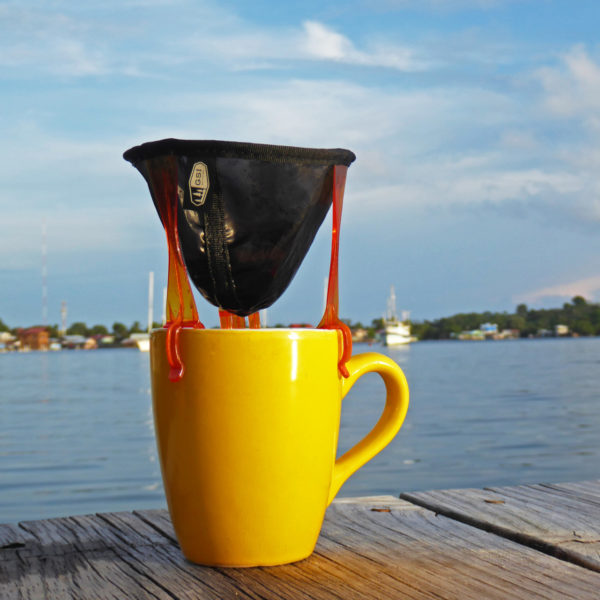
Lichtgewicht, opvouwbaar koffiefilter

Foooty reisvoetbal
Dit vind je misschien ook interessant.

10 Tips voor je eerste safari in Afrika
Safari Afrika

Kenia buiten de gebaande paden: off the beaten track bezienswaardigheden

Alles wat je moet weten over je visum Kenia
Visum aanvragen

Vakantie Kenia: safari en meer highlights voor een rondreis Kenia
Laat je horen, geef een reactie reactie annuleren.
Het e-mailadres wordt niet gepubliceerd. Vereiste velden zijn gemarkeerd met *
Volg al onze reizen!
Wil je onze reizen live volgen? Dat kan! Op Instagram nemen we je met stories, fotoseries en reels mee naar onze reisbestemmingen. We delen tips én een flinke dosis reisinspiratie.
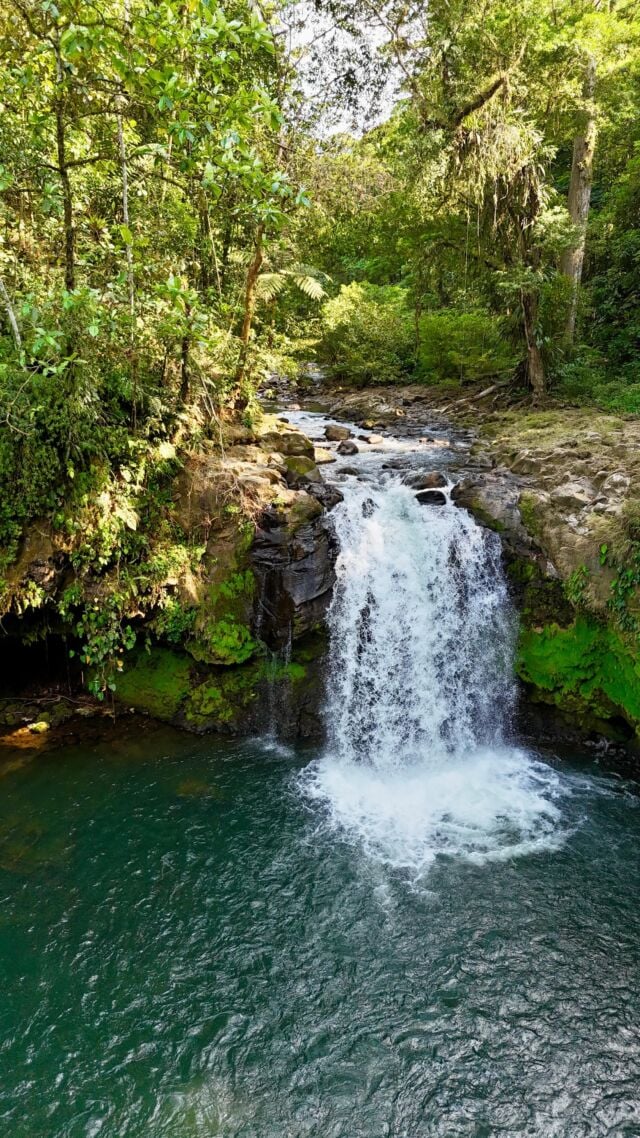
Our head office
0800 088 6002, [email protected], client log in, reset password, agent log in.

Packing for Kenya Safari: Crafting the Ultimate Safari Packing List
In the heart of Africa lies Kenya, a land of captivating beauty and extraordinary wildlife. For those embarking on a safari adventure here, meticulous packing is essential. From the vast savannas of the Maasai Mara to the dense forests of Aberdare National Park, Kenya's diverse landscapes offer unparalleled opportunities to encounter some of the world's most majestic creatures in their natural habitat.
In this article, we'll delve into the intricacies of crafting the perfect packing list, ensuring you're well-equipped for the journey ahead. So, let's begin our exploration of the essential packing essentials for your Kenya tours .
Understanding Kenya: Safari Adventures Await
Kenya's allure lies not only in its stunning landscapes but also in the unparalleled wildlife experiences it offers. Here, amidst the vast savannas, towering mountains, and lush forests, safari adventures await those eager to explore the untamed wilderness.
Diverse Landscapes: Kenya boasts an array of ecosystems, from the iconic savannas of the Maasai Mara and Amboseli to the rugged terrain of Mount Kenya and the coastal plains of Tsavo. Each landscape harbors its own unique flora and fauna, promising a diverse safari experience.
Rich Wildlife: Renowned for the "Big Five" (lion, elephant, buffalo, leopard, and rhinoceros), Kenya is home to a staggering variety of wildlife. From the majestic herds of elephants to the graceful giraffes and elusive big cats, the country's national parks and reserves teem with life.
Cultural Heritage: Beyond its natural wonders, Kenya's cultural heritage adds depth to the safari experience. Encounter the vibrant traditions of the Maasai people, visit local villages, and immerse yourself in the rich tapestry of Kenyan culture.
Conservation Efforts: Kenya is at the forefront of conservation efforts, with many parks and reserves dedicated to protecting its wildlife. Learn about the challenges facing conservationists and the measures being taken to preserve Kenya's natural heritage for future generations.
Understanding Kenya's diverse landscapes, rich wildlife, cultural heritage, and conservation efforts sets the stage for an unforgettable safari adventure. As you prepare for your journey, keep in mind the unique experiences that await you in this captivating country.
Kenyan Adventures Begin: Packing for a Kenya Safari
Embarking on a safari adventure in Kenya marks the beginning of an unforgettable journey into the heart of Africa's wilderness. To ensure you're fully prepared for your safari experience, follow this step-by-step guide on how to pack efficiently for your Kenya safari, along with suggestions on organizing your luggage:
Research Your Destination:
- Familiarize yourself with the climate and terrain of the areas you'll be visiting in Kenya to determine the appropriate clothing and gear to pack.
Create a Packing List:
- Make a comprehensive packing list that includes essentials such as clothing, footwear, toiletries, safari gear, and personal items.
Gather Your Gear:
- Lay out all the items you plan to pack, including clothing, gear, and accessories, to assess what you have and what you may need to acquire.
Prioritize Essentials:
- Identify essential items that you'll need for daily activities, such as safari drives, nature walks, and cultural excursions.
Pack Versatile Clothing:
- Choose lightweight, breathable clothing in neutral colors that can be layered for warmth or protection against the sun and insects.
- Pack clothing items that can serve multiple purposes to minimize the number of items you need to bring.
Organize Your Luggage:
- Use packing cubes or compression bags to organize your clothing and maximize space in your luggage.
- Place heavier items at the bottom of your suitcase or backpack to distribute weight evenly and prevent crushing lighter items.
Protect Fragile Items:
- Use padded cases or protective sleeves for delicate electronics, such as cameras and lenses, to prevent damage during travel.
- Consider carrying valuables and important documents in a secure and easily accessible location, such as a travel wallet or neck pouch.
Leave Room for Souvenirs:
- Leave some extra space in your luggage for souvenirs and gifts you may purchase during your safari adventure.
- Consider packing a foldable duffel bag or collapsible suitcase for additional storage on the return journey.
Double-Check Your Packing:
- Before zipping up your luggage, double-check your packing list to ensure you haven't forgotten any essential items.
- Consider weighing your luggage to avoid exceeding weight limits for domestic flights or safari vehicles.
Enjoy Your Safari:
- With your luggage packed efficiently and organized, you're ready to embark on your Kenya safari adventure with peace of mind and excitement.
- Remember to stay flexible and adaptable as you immerse yourself in the wonders of Kenya's wildlife, landscapes, and culture.
By following these steps and suggestions, you can pack efficiently and effectively for your Kenya safari, ensuring a smooth and enjoyable adventure from start to finish.
Environmental Regulation: Kenya's Ban on Plastic Bags
As of August 28, 2017, Kenya has implemented a nationwide ban on plastic bags. This ban prohibits the manufacturing, importation, distribution, and use of plastic bags, including both thin plastic bags used for shopping and thicker plastic bags used for packaging.
The ban aims to reduce environmental pollution and protect Kenya's ecosystems, wildlife, and public health. Violators of the ban may face fines or imprisonment. Visitors to Kenya are advised to adhere to this regulation and refrain from bringing plastic bags into the country.
Alternative eco-friendly options, such as reusable cloth bags, are encouraged for shopping and packing purposes.
Crafting Your Kenya Safari Packing List - What to Include in your Kenya Packing List
Preparing for a safari adventure in Kenya requires careful planning and consideration of the essentials you'll need to ensure a comfortable and enjoyable experience. Here's a guide to creating a comprehensive packing list tailored specifically for your Kenya safari:
- Lightweight, breathable clothing in neutral colors to blend into the natural surroundings.
- Long-sleeved shirts and pants to protect against the sun, insects, and thorny vegetation.
- A lightweight waterproof jacket for unexpected rain showers or cooler evenings.
- Sturdy, comfortable walking shoes or hiking boots for exploring the terrain.
Safari Gear:
- Binoculars for wildlife viewing from a distance.
- A wide-brimmed hat or cap to shield your face from the sun.
- Sunglasses with UV protection to safeguard your eyes.
- A camera with extra batteries and memory cards to capture memorable moments.
Personal Essentials:
- Sunscreen with a high SPF to protect against sunburn.
- Insect repellent to ward off mosquitoes and other insects.
- Personal medications and a basic first aid kit for minor injuries or illnesses.
- Hand sanitizer and wet wipes for maintaining hygiene in remote areas.
Travel Documents:
- Valid passport with at least six months' validity from the date of entry.
- Visa (if required) and copies of important travel documents.
- Travel insurance documents for medical emergencies and trip cancellations.
Miscellaneous Items:
- Reusable water bottle to stay hydrated during game drives.
- Snacks such as energy bars, nuts, and dried fruit for quick nourishment.
- Flashlight or headlamp with extra batteries for navigating at night.
Optional Extras:
- Lightweight, compact binoculars for enhanced wildlife viewing.
- Field guidebooks or wildlife identification cards to learn about the flora and fauna.
- Travel pillow and earplugs for comfortable rest during long drives or flights.
By considering these essentials and tailoring your packing list to your specific needs and preferences, you'll be well-prepared to embark on an unforgettable safari adventure in Kenya. Remember to pack light and efficiently, leaving room for souvenirs and memories to cherish for a lifetime.
Ensuring Comfort: Packing Toiletries and Essentials
When preparing for a safari trip in Kenya, packing the right toiletries and personal care items is essential for maintaining comfort and hygiene throughout your journey. Here are some tips to help you pack toiletries and essentials effectively, emphasizing the importance of lightweight and compact products:
Minimize Toiletries:
- Prioritize essential toiletries and avoid packing bulky or unnecessary items. Opt for multi-purpose products to save space and weight.
Travel-sized Containers:
- Transfer your favorite toiletries, such as shampoo, conditioner, and body wash, into travel-sized containers to reduce bulk and weight.
- Consider purchasing travel-sized versions of your favorite products or look for solid alternatives, such as shampoo bars and solid deodorant.
Compact Packaging:
- Choose toiletries with compact packaging to save space in your luggage. Look for collapsible toothbrushes, foldable hairbrushes, and compact mirrors.
Dual-purpose Products:
- Select toiletries that serve multiple purposes to streamline your packing. For example, choose a moisturizer with SPF for sun protection, or a 2-in-1 shampoo and conditioner.
Disposable Items:
- Pack disposable items such as travel-sized packs of tissues, cotton swabs, and makeup remover wipes for convenience and hygiene.
- Consider using travel-sized packets of laundry detergent for washing clothes on the go.
Sun Protection:
- Don't forget to pack sunscreen with a high SPF to protect your skin from the harsh African sun. Opt for a lightweight, non-greasy formula that won't weigh you down.
Insect Repellent:
- Pack insect repellent containing DEET or other effective ingredients to ward off mosquitoes and other biting insects.
- Consider using insect repellent wipes or wristbands for convenience and ease of use.
- Bring a reusable water bottle or hydration pack to stay hydrated during your safari adventures. Consider adding electrolyte tablets or powder for added hydration.
Medications and First Aid:
- Pack essential medications and a basic first aid kit containing bandages, antiseptic wipes, pain relievers, and any prescription medications you may need.
Environmental Considerations:
- Choose biodegradable and eco-friendly toiletries whenever possible to minimize your environmental impact during your safari trip.
By following these tips and packing lightweight and compact toiletries and essentials, you can ensure comfort and convenience during your safari adventure in Kenya. Remember to pack thoughtfully and prioritize items that will enhance your experience while minimizing your luggage's size and weight.
Streamlining Your Gear: Choosing the Right Backpack for Your Kenya Safari
Selecting the appropriate backpack is crucial for a comfortable and hassle-free safari adventure in Kenya. Here's some advice on choosing the right backpack, considering factors such as size, durability, and comfort:
Size Matters:
- Opt for a backpack with a capacity that suits the length and intensity of your safari trip. For shorter excursions, a daypack (20-30 liters) may suffice, while longer trips may require a larger backpack (40-70 liters).
- Consider the amount of gear and personal items you'll need to carry and choose a backpack with enough space to accommodate them without being overly bulky.
Durability:
- Look for a backpack made from durable materials such as ripstop nylon or canvas, which can withstand rugged terrain and rough handling.
- Check the quality of the stitching, zippers, and other hardware to ensure they can withstand the rigors of travel and outdoor adventures.
Comfort Features:
- Prioritize comfort by choosing a backpack with padded shoulder straps, a padded back panel, and a waist belt. These features help distribute weight evenly and reduce strain on your shoulders and back.
- Adjustable straps allow you to customize the fit of the backpack to your body size and shape, enhancing comfort during long hours of wear.
Accessibility:
- Consider the accessibility of the backpack's compartments and pockets. Look for a design that allows you to easily access your gear without having to unpack everything.
- Backpacks with multiple compartments and organizational features, such as mesh pockets and zippered compartments, can help you stay organized on the go.
Weather Resistance:
- Choose a backpack with weather-resistant or waterproof materials to protect your gear from rain, dust, and moisture.
- Consider purchasing a rain cover or waterproof liner for added protection during inclement weather conditions.
Versatility:
- Select a backpack that can transition seamlessly between safari activities and other travel adventures. A versatile backpack that can also be used for hiking, day trips, or city exploration adds value and versatility to your gear collection.
Try Before You Buy:
- If possible, try on different backpacks in person to assess their fit, comfort, and features. Walk around with the loaded backpack to test its weight distribution and comfort level.
- Alternatively, read reviews and watch video demonstrations to learn more about the backpack's performance and suitability for your needs.
By considering these factors and choosing a backpack that meets your specific requirements for size, durability, and comfort, you can ensure a smooth and enjoyable safari experience in Kenya. Remember to pack thoughtfully and prioritize functionality and comfort when selecting your gear for the journey ahead.
Practical Considerations: Packing Tips for Kenya Safaris
When embarking on a safari adventure in Kenya, efficient packing is essential for ensuring a smooth and enjoyable experience. Here are some practical tips and advice to help you pack your belongings effectively:
Pack Light:
- Limit your luggage to essentials and avoid overpacking. Stick to versatile clothing items that can be mixed and matched.
- Consider the weight restrictions of your mode of transportation, whether it's a domestic flight or a safari vehicle.
Choose the Right Bag:
- Opt for a durable and lightweight suitcase or backpack that can withstand the rigors of travel.
- Use packing cubes or compression bags to organize your belongings and maximize space.
- Pack clothing that can be layered for versatility and adaptability to changing weather conditions.
- Choose lightweight and breathable fabrics that dry quickly and can be easily washed if needed.
Multi-Purpose Items:
- Pack items that serve multiple purposes to minimize the number of things you need to bring.
- For example, a sarong can double as a towel, a shawl, or a picnic blanket.
- Pack travel-sized toiletries or consider purchasing essentials upon arrival to minimize weight and save space.
- Use solid toiletries, such as shampoo bars and solid deodorant, to avoid liquid spills.
Limit Electronics:
- Only pack essential electronics, such as a camera, smartphone, and charger. Consider leaving non-essential gadgets at home.
- Invest in a portable power bank to keep your devices charged during long days of exploring.
Pack Snacks:
- Bring lightweight and non-perishable snacks to keep you fueled during game drives and excursions.
- Avoid packing bulky or heavy snacks that take up unnecessary space.
- Leave some extra space in your luggage for souvenirs and gifts you may purchase during your trip.
- Consider packing a foldable duffel bag for additional storage on the return journey.
By following these practical packing tips, you can maximize luggage space, minimize weight, and ensure a hassle-free safari experience in Kenya. Remember to pack thoughtfully and prioritize items that will enhance your comfort and enjoyment throughout your journey.
Making Your Flight to Kenya More Comfortable
To make your flight to Kenya easier, consider packing the following items:
Travel Pillow and Blanket: A comfortable travel pillow and lightweight blanket can help you rest during long flights, ensuring you arrive in Kenya feeling refreshed.
Noise-Canceling Headphones: Block out cabin noise and enjoy your favorite music, movies, or podcasts with noise-canceling headphones for a more peaceful flight experience.
Snacks and Hydration: Pack healthy snacks such as nuts, granola bars, and fruit to keep hunger at bay during the flight. Additionally, bring a refillable water bottle to stay hydrated throughout the journey.
Entertainment: Bring a tablet, e-reader, or portable gaming device loaded with movies, books, or games to keep yourself entertained during the flight.
Essential Toiletries: Pack travel-sized toiletries such as toothpaste, toothbrush, facial wipes, moisturizer, and lip balm to freshen up during the flight and upon arrival in Kenya.
Chargers and Adapters: Don't forget to pack chargers for your electronic devices and any necessary adapters to ensure you can charge your devices during layovers or upon arrival in Kenya.
Travel Documents: Keep all necessary travel documents such as your passport, visa, flight itinerary, and hotel reservations in a secure and easily accessible location.
Comfortable Clothing: Dress in comfortable, breathable layers for the flight, and consider bringing a lightweight jacket or sweater in case the cabin temperature becomes chilly.
Medications and First-Aid Kit: Pack any essential medications in your carry-on luggage, along with a basic first-aid kit containing bandages, pain relievers, motion sickness medication, and any other necessary items.
Travel Organizer: Use a travel organizer or pouch to keep your essentials organized and easily accessible during the flight, including your passport, boarding pass, wallet, and electronic devices.
By packing these items, you can ensure a smoother and more comfortable flight experience to Kenya.
Laundry on the Go: Tips for Managing Clothing on Your Kenya Safari
Managing laundry efficiently during your safari trip in Kenya is essential for staying fresh and comfortable throughout your adventure. Here are some strategies and tips to help you manage laundry on the go:
Pack Quick-Dry Clothing:
- Choose clothing made from quick-drying materials such as polyester or nylon blends. These fabrics are lightweight, breathable, and dry rapidly, making them ideal for safari travel.
- Avoid packing heavy cotton clothing that takes a long time to dry, as it can become cumbersome and uncomfortable, especially in humid conditions.
- Opt for clothing that can be layered to adapt to changing temperatures and weather conditions. Layering allows you to adjust your clothing as needed without having to change your entire outfit.
- Pack lightweight base layers and mid-layers that can be easily mixed and matched to create different combinations.
Pack Multi-Purpose Clothing:
- Choose versatile clothing items that can be worn multiple times before needing to be washed. Neutral-colored clothing hides dirt and stains better than bright colors, allowing you to wear them multiple times without appearing dirty.
- Consider packing convertible clothing items, such as pants that can be converted into shorts or shirts with roll-up sleeves, to maximize versatility and minimize the number of items you need to pack.
Use Portable Washing Options:
- Bring along a portable washing kit or travel-sized laundry detergent to wash small items of clothing as needed. Look for biodegradable and eco-friendly detergents that won't harm the environment.
- Use a sink, bucket, or collapsible basin to wash your clothing by hand. Agitate the clothing in soapy water, rinse thoroughly, and hang to dry in a well-ventilated area.
Utilize Laundry Services:
- Take advantage of laundry services offered by accommodations such as lodges, tented camps, and hotels. Many accommodations in Kenya offer laundry services for guests, either complimentary or for a fee.
- Plan ahead and schedule laundry days during your stay to ensure you have clean clothing for the duration of your safari trip.
Air-Dry Clothing:
- Take advantage of the warm, sunny climate in Kenya to air-dry your clothing. Hang wet clothing outside or in a well-ventilated area to dry naturally, avoiding direct sunlight to prevent fading.
- Consider using a clothesline or portable drying rack to hang clothing inside your accommodation or outside your tent.
By following these tips and strategies for managing laundry on the go, you can ensure that you have clean and fresh clothing throughout your safari adventure in Kenya. Remember to pack efficiently and prioritize quick-dry clothing and portable washing options to simplify your laundry routine while on safari.
Search our Blog
Related tours.
CAMPING OR ACCOMMODATED. This 3-week East African wildlife odyssey takes you from Livingstone to Nairobi taking n all the major sites en route, including South Luangwa National Park, Lake Malawi, Zanzibar and the Serengeti
This one week safari to Kenya is ideal for families with children and will give you a great introduction to the amazing landscapes and wildlife of Africa. Special activities and kids clubs are provided at each of the lodges.
CAMPING OR ACCOMMODATED. A perfect mix of wildlife and relaxation, this tour combines the amazing wildlife of the Serengeti National Park and Ngorongoro Crater with the relaxing culture and beaches of Zanzibar Island.
RECENT POSTS FROM OUR BLOG
Need some travel inspiration or looking for some handy travel tips? Our blog provides excellent insight into our travel destinations - from tour updates to country guides, packing lists to little known things to do, you'll find it all in our travel blog.
Exploring Kenya: Top Places to Photograph for Wildlife Photography Enthusiasts
Discover stunning wildlife in Kenya on a photography trip! From elephants to Mount Kilimanjaro, explore top parks for unforgettable safaris.
Best Time to Visit Kenya for Safari Adventures: A Guide to the Best Time for Safari and Beach Adventures
Discover the best time to visit Kenya for an unforgettable safari and beach experience. Get details on Kenya safari, beach delights, and the great migration.
Best Time to Visit Malawi
Discover the best time to visit Malawi and plan your trip with details. Explore Malawi's beauty and culture at its peak.
Best Photography Spots in Malawi: Beautiful Places in Malawi - Best Places to Visit
Discover the best photography spots in Malawi's beautiful places. Explore stunning locations in Malawi for captivating shots.
Celebrating Kenyan Heritage: Exploring the Vibrant Cultural Festivals in Kenya
Discover and celebrate Kenyan cultural festivals, showcasing diverse traditions and heritage. Immerse yourself in Kenya's rich cultural tapestry.
Kenyan Cuisine: A Guide to the Best Food and Drinks in Kenya
Discover the rich flavors of Kenyan cuisine on safari. From must-try dishes to street food delights, experience authentic Kenyan food and drink, including meaty curries.
Unlocking the Wilderness: Best Destinations for Photographic Safaris and Wildlife Photography in Botswana
Embark on an unforgettable photographic safari through Botswana's stunning landscapes. Experience the wilderness like never before.
Best Photography Spots in the United Arab Emirates: Photo spots in Dubai
Discover the best photo spots in Dubai and capture great photos of the United Arab Emirates. From Burj Khalifa to Jumeirah Beach, explore iconic sights for every photographer.

IMAGES
VIDEO
COMMENTS
The "long rains" occur from March until May. This is Kenya's down season, and travellers will find discounted rates and fewer crowds (though keep in mind that many lodges and amenities will be closed for the season). The "short rains" occur from October to December. This period of time usually isn't as rainy as the long rains, and ...
The safari experience Game drives are the backbone of most safaris, with the idea being to spend as many hours as possible in the bush searching for animals. A game drive can be done at any time of day, but early morning, mid-morning and late afternoon, with a break early on for breakfast, and another in the middle of the day for lunch, is the ...
Preparing for Your Safari. You'll need a passport that is valid for at least six months prior to your arrival. Your passport must contain a minimum of two blank pages for stamps. You'll also need ...
In this article, we will spotlight some of the important things you need to recognize before taking a Kenya safari. A Zebra grazing at Lake Nakuru National Park. Contents [ hide] 1. The Best Time to Visit Kenya. 2. Choosing the Right Kenya Safari. 3. Choosing the Right Kenya Safari Tour Company.
Prepare to be whisked away into the untamed wilderness of Kenya as we unveil a first-timer's guide to planning the ultimate safari experience. Get ready to witness nature in its rawest form, where lions roar, elephants roam, and giraffes gracefully stride across the savannah. Kenya offers an unparalleled opportunity to witness the wonders of ...
Why Choose Kenya for a Safari. Kenya brings to mind wildebeest galloping over the plains, elephants roaming in large herds, and lions with flowing manes. Back in the 1980s, this was the country that really introduced African safari to the world. Here there is a great abundance of different animals and landscapes.
Below we have looked at the top Kenyan safari tips to help you book and have a successful adventure in Africa. 1. Update Your Travel Insurance. Anything could happen before you leave or when you are away, including canceled flights and illness. Take out insurance as soon as you confirm your travel plans to ensure that you are on the safe side.
There are no rules and thus no two Kenya safari itineraries are the same. That being said, here is our Kenya travel guide with some ballpark figures for a safari, with transfers and accommodation included on a price-per-person-per-night (PPPN) basis: 4-Star Comfort. 4-Star Luxury. 5-Star Luxury.
The broad landscape is a safari classic with green grass that changes color as the seasons change, and there are few thickets, forests, or high peaks. The Thomson's gazelle, topi, and reticulated and Masai giraffe are among the animals that frequent the plains, which are also occasionally populated with flat-topped acacia trees.
Here is the detailed itinerary of our 2 weeks in Kenya: 1 night in Nairobi: Nairobi Tented Camp. 3 nights in the Maasai Mara: Emboo River Camp. 3 nights in the Maasai Mara: Olimba Mara Camp. 3 nights in Tsavo West: Kipalo Hills by Secluded Africa. 3 nights at Kuruwitu Beach, Vipingo: Cardamom House by Secluded Africa.
Bottle of water. Sunscreen. Powder sunscreen (to reapply to my face; I hate putting liquid sunscreen on top of makeup) Sunglasses. Jacket (for early in the morning and after the sun went down) Hand sanitizer or wet wipes. Photo: @lindsaysilb.
Here are some additional tips to help you choose the right safari outfitter: Compile a List. Begin by compiling a list of potential safari outfitters based on your research, recommendations, and reviews. Read Reviews. Thoroughly read testimonials and reviews from previous clients to gain insights into the outfitter's performance.
While a safari trip can represent a significant expense, it is a once-in-a-lifetime experience that makes it well worth the money you spend. A safari tour is usually an all-inclusive experience, including accommodation, meals, and game-viewing activities. The exact price of a Kenya safari can vary.
Afrika. Kenia. Ga je naar Kenia op vakantie? Hier kun je al onze tips voor Kenia vinden. Van bijzondere plekken om op safari te gaan zoals Tsavo National Park, tot tips voor de allermooiste stranden in Kenia. Ook geven we tips voor bijzondere lodges, zoals bijvoorbeeld de Salt Lick Lodge in de Tiata Hills dichtbij Tsavo.
We will end this guide with some frequently asked questions about safari tips in Kenya: 1. How much should I tip my safari guide? A general rule of thumb is to tip your safari guide around \$10-15 USD per day, per person. However, if you receive exceptional service or go on a longer trip, you can give more. 2.
CHOOSING A CAMP. One of the most difficult aspects of planning a safari is choosing which camp to stay at. They truly run the gamut—from posh five-star lodges to rugged tented retreats. Those ...
The most important packing tip for safari is layers; the morning can be chilly and require pants and a jacket, while during the day it can get very hot. This Uniqlo Ultra Light Down is the perfect companion; warm enough before the sun comes up, super light to carry and comes in a neat folded bag.
3.4 Maasai Mara National Park - The Best Overall Safari in Kenya. 3.5 Nairobi National Park - The Most Accessible National Park in Africa. 3.6 Tsavo East National Park. 3.7 Tsavo West National Park. 3.8 Amboseli National Park - The Best for Seeing Elephants. 3.9 Hell's Gate National Park - The Best for a Biking Safari.
Wear long loose-fitting white clothing. Put insect repellant on exposed skin - day and night. Sleep under nets or have insect repellent in your room. 3. Charge your devices. Do yourself a favour before even considering traveling to Africa, buy a good camera and make sure it is charged before you venture out.
For your Kenya safari, pack light casual wear in neutral colours (try to avoid white, black and blue) and a warm jacket for evening game drives. For more on what to pack for a safari, refer to our Africa Safari Guide travel advice section. In Kenya's major cities the dress code is conservative but not overly formal - jeans and modest tops ...
The price for this safari ranges from 415 USD to 495 USD (for Masai Mara) and 415 USD to 450 USD (Amboseli National Park). Also, there are child rates for children under 12 years of age. Things to remember: Pick-up time from camp or lodge to the take-off site: 5 AM to 5:30 AM. Take-off time: 6 AM to 6:15 AM.
Grote delen van Kenia zijn malariagebied. Check voor vertrek bij je huisarts, GGD of bijvoorbeeld Thuisvaccinaties.nlof je de juiste inentingen hebt en win medisch advies in naar gelang jouw eigen gezondheidssituatie. Drink geen kraanwater in Kenia en kijk uit met geschild fruit, ijsblokjes en salade. 5.
Create a Packing List: Make a comprehensive packing list that includes essentials such as clothing, footwear, toiletries, safari gear, and personal items. Gather Your Gear: Lay out all the items you plan to pack, including clothing, gear, and accessories, to assess what you have and what you may need to acquire.